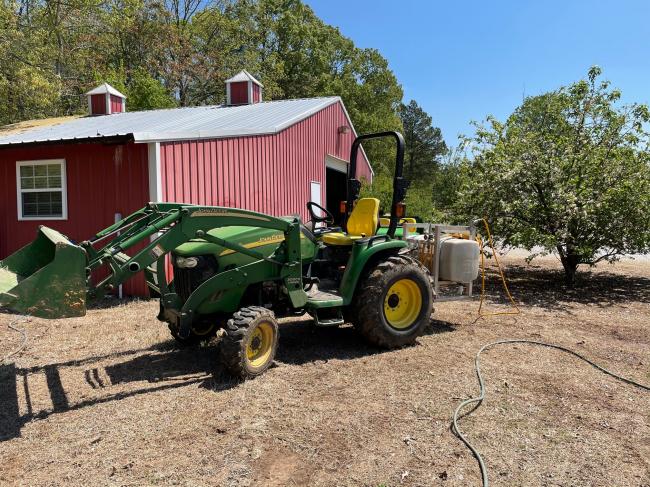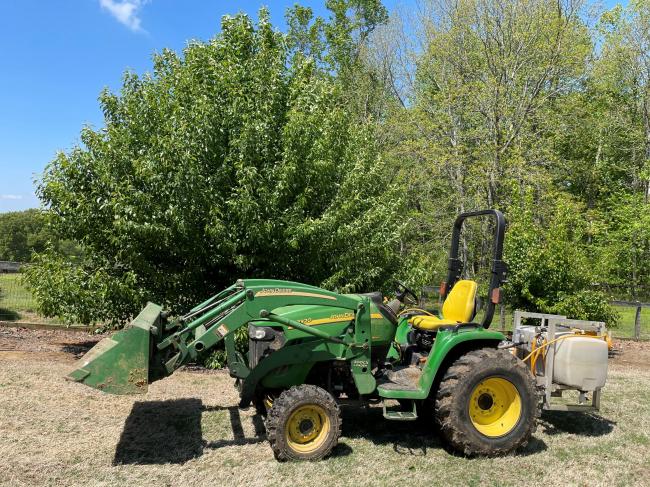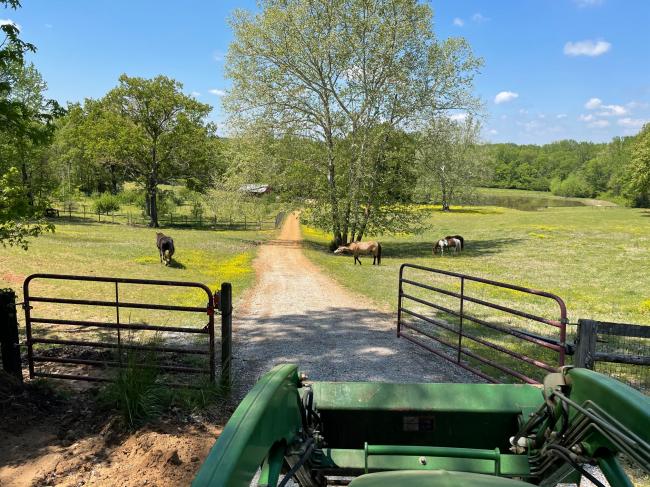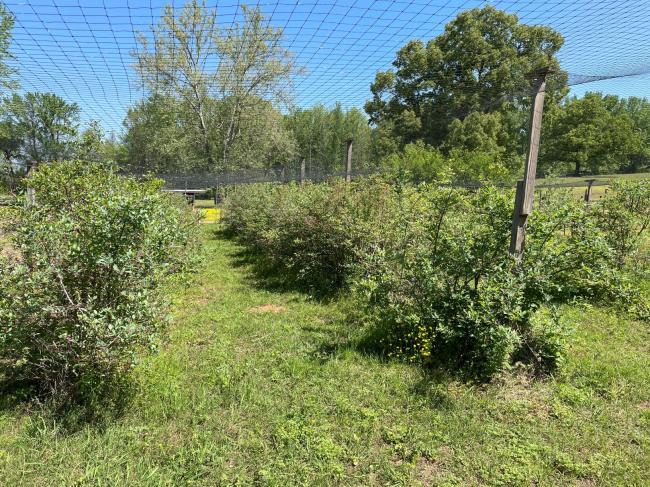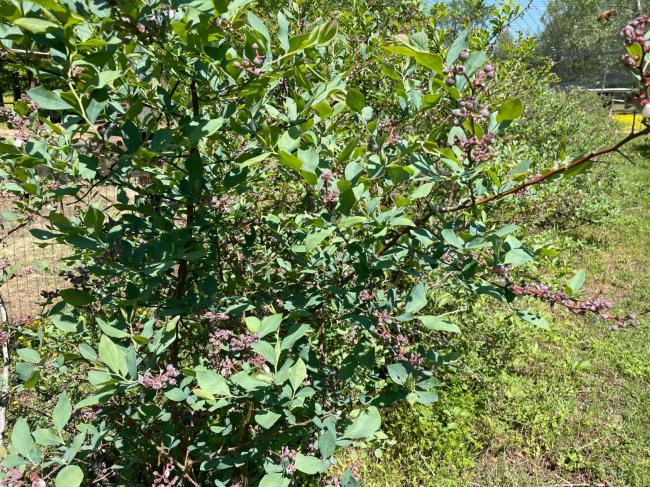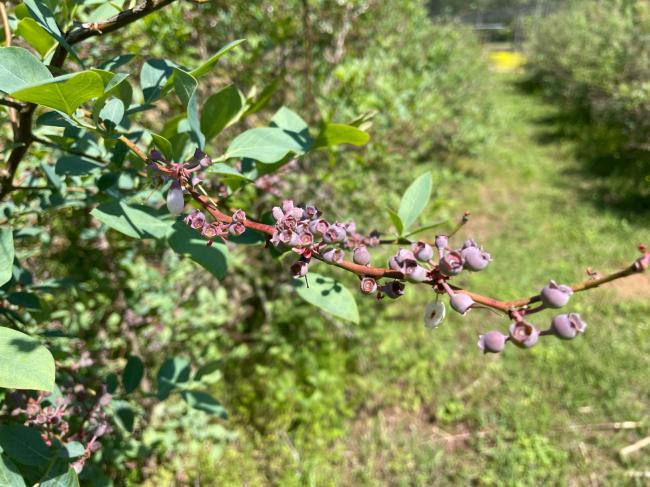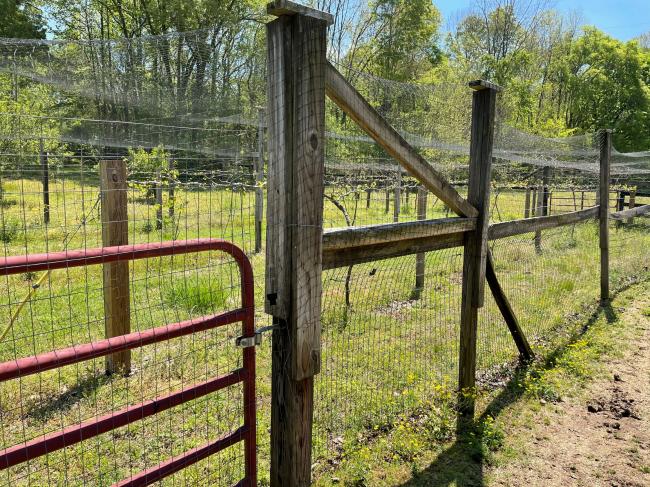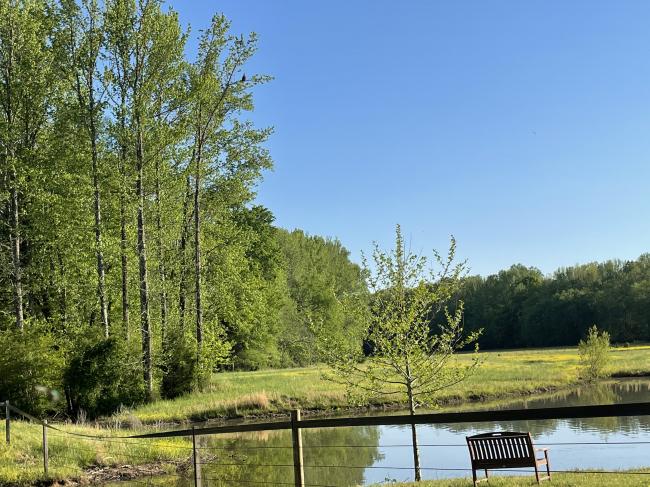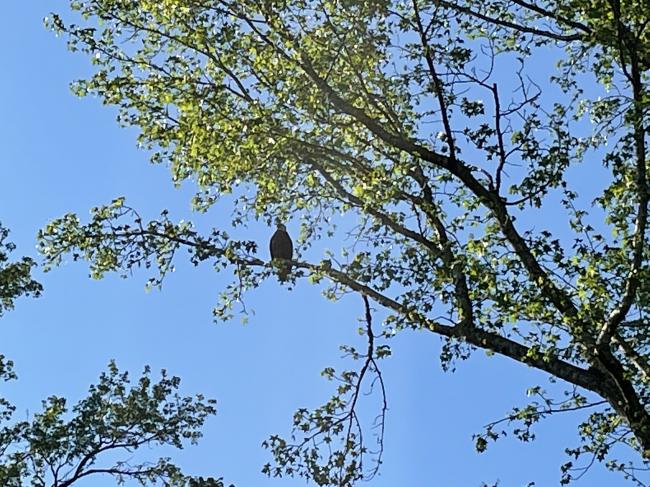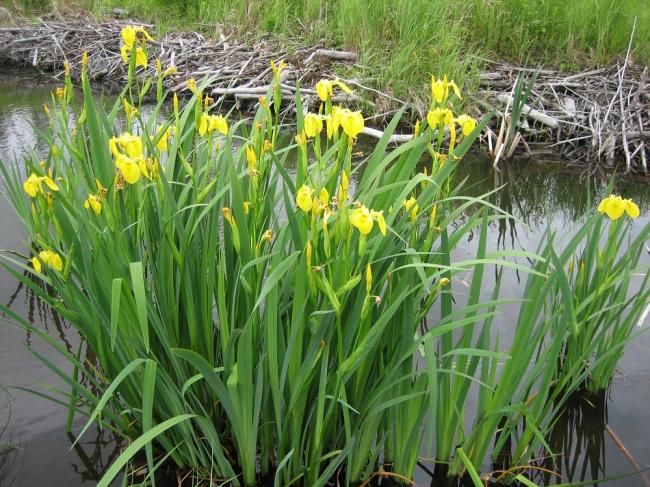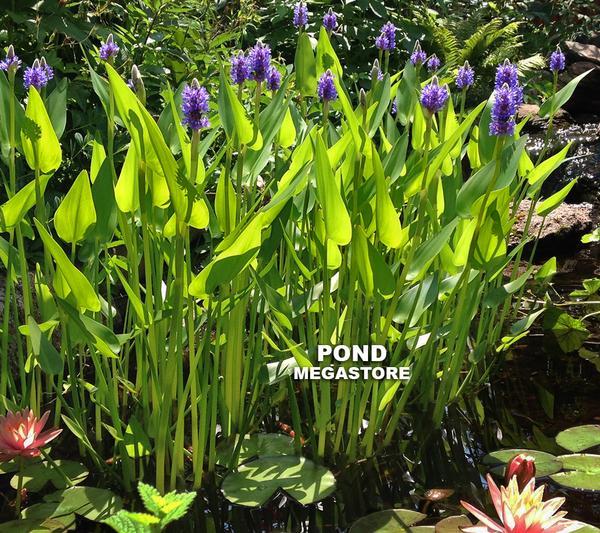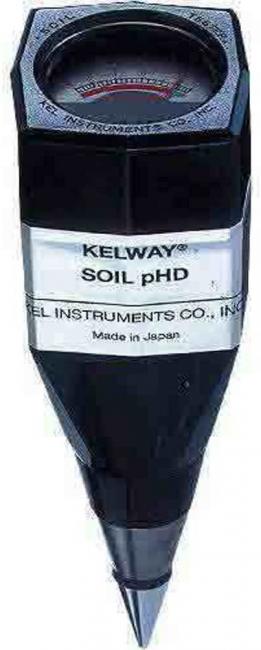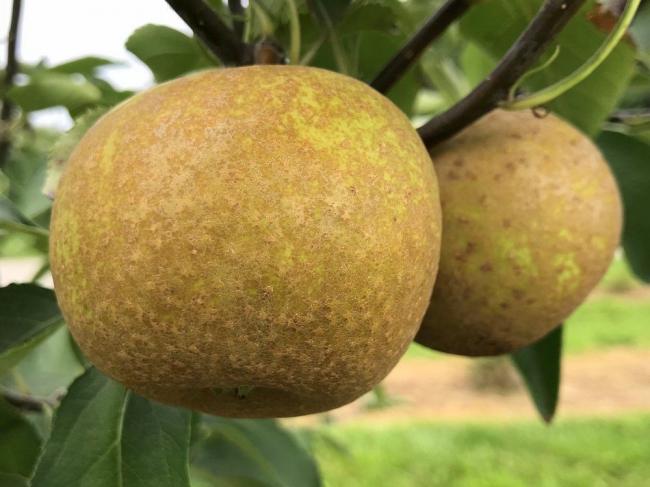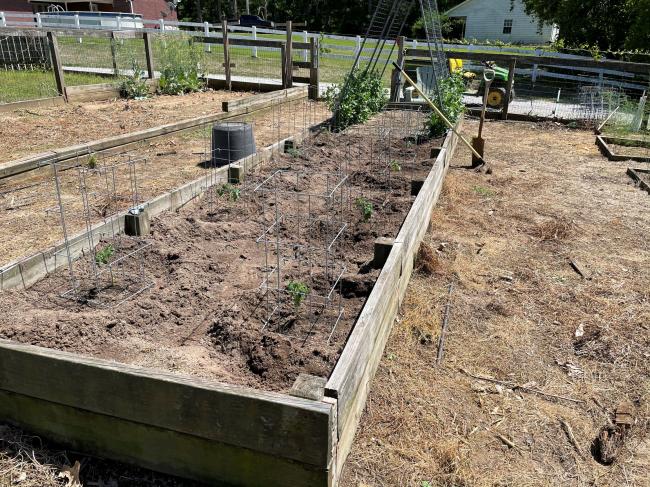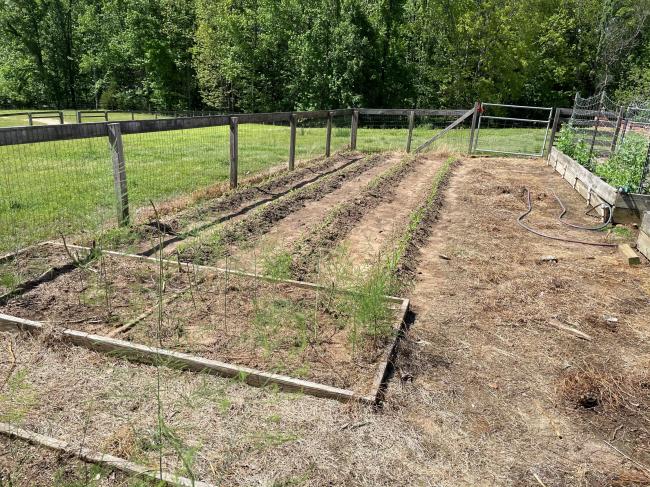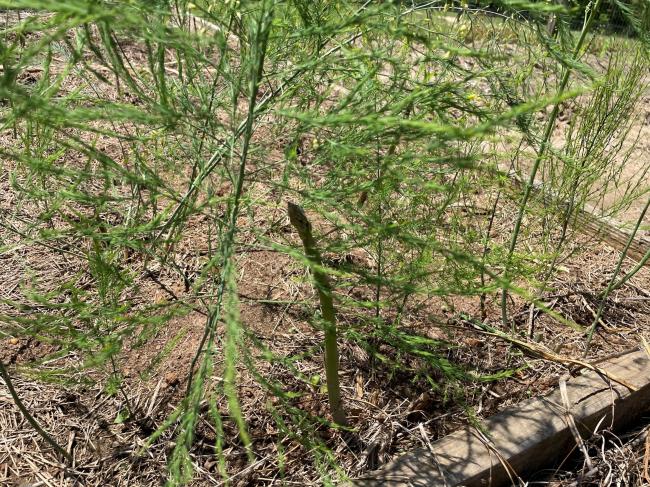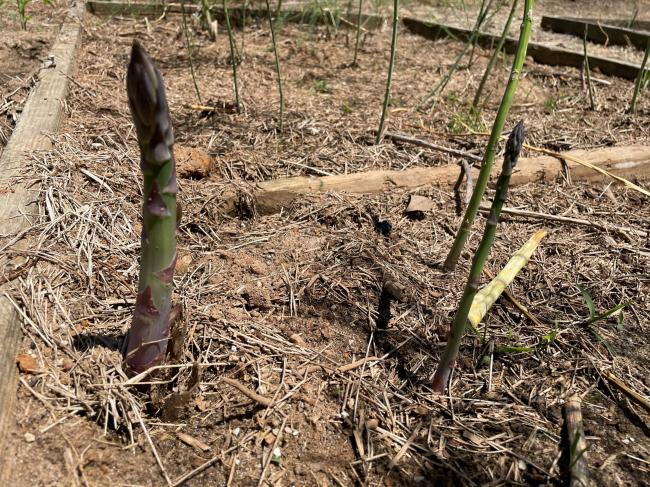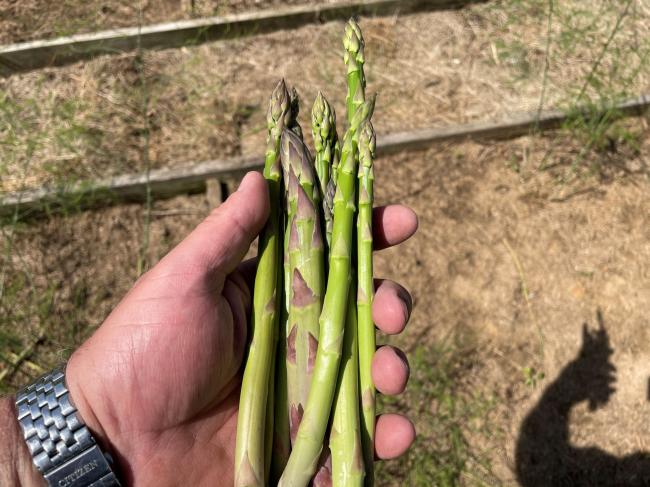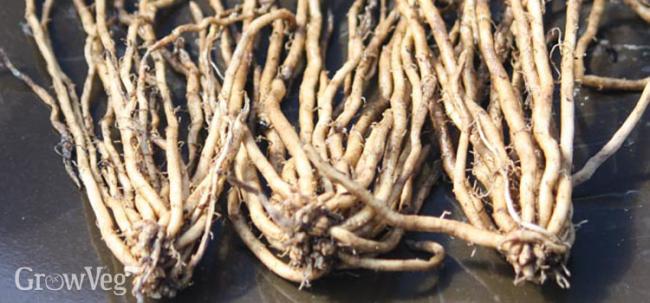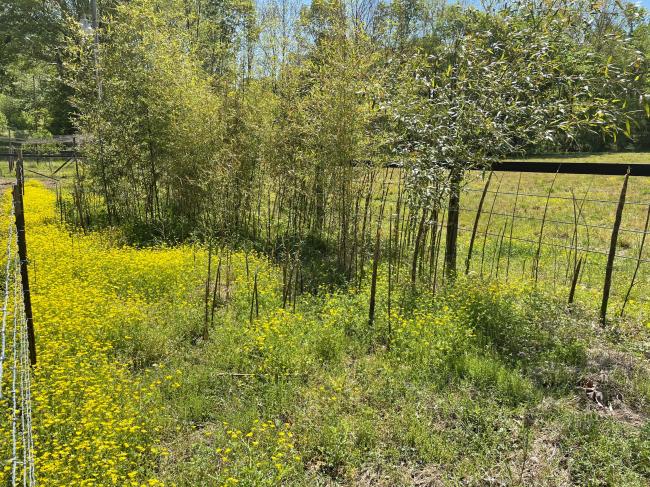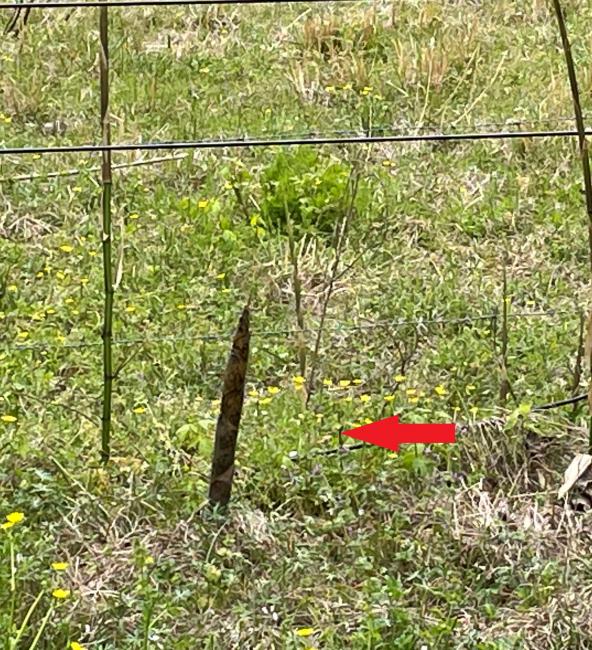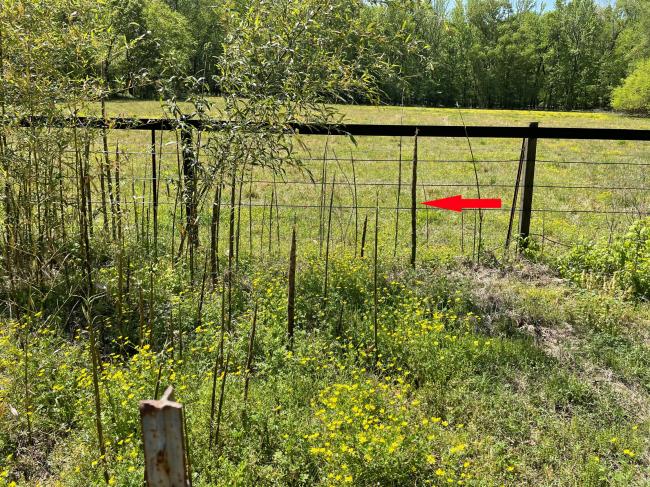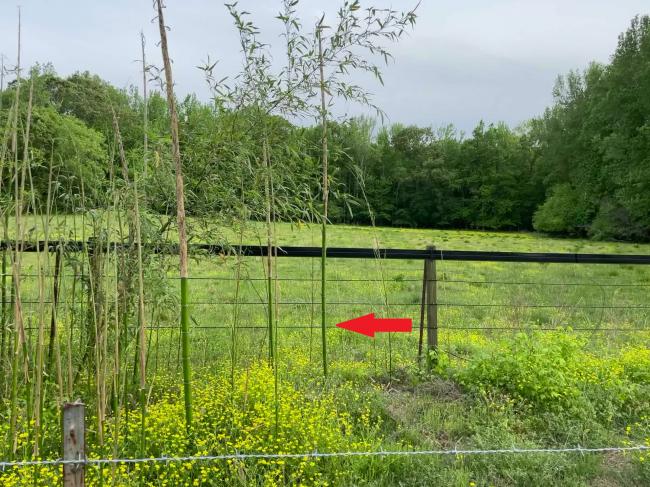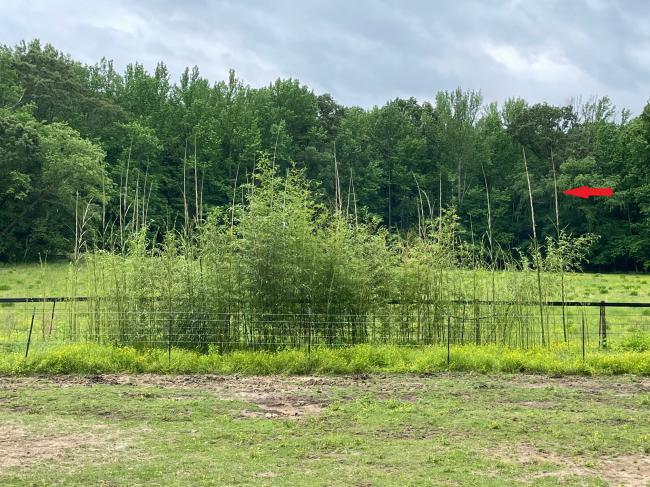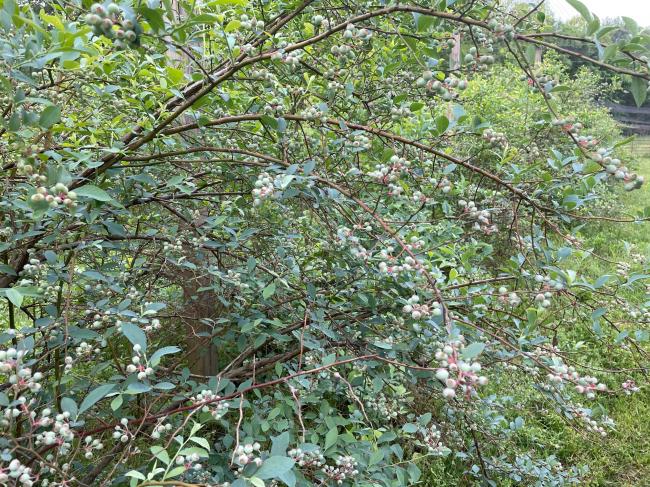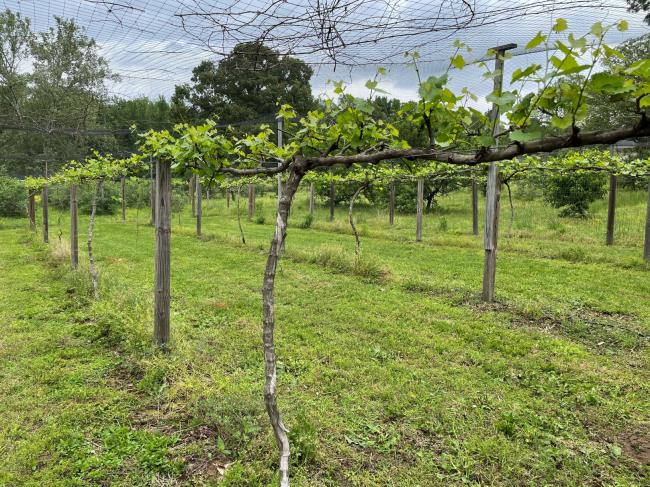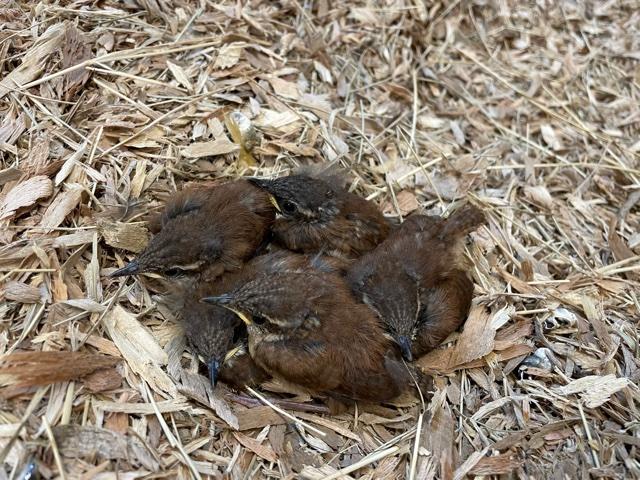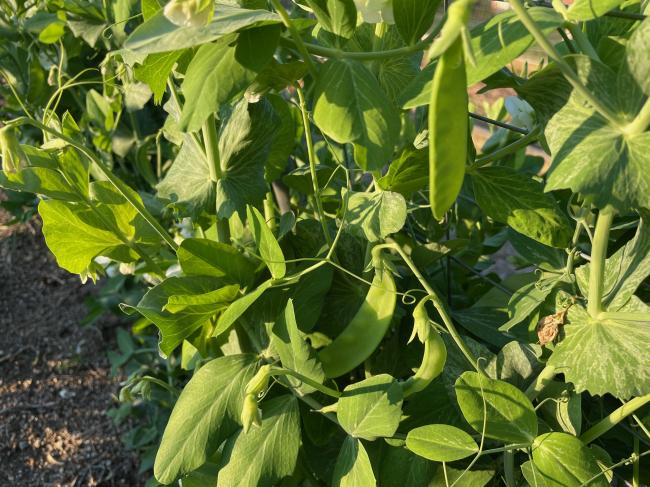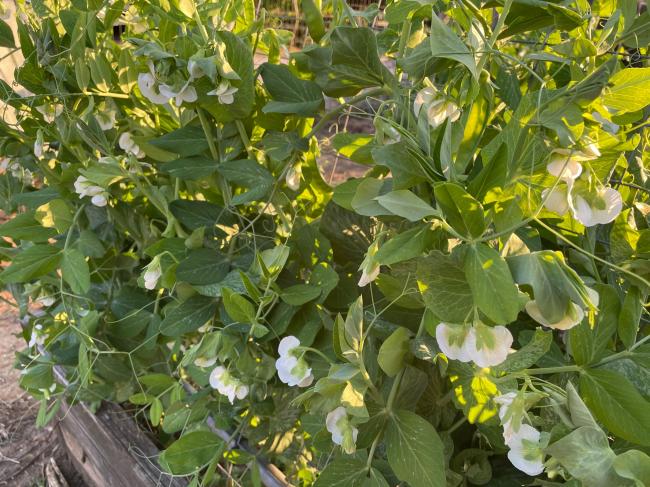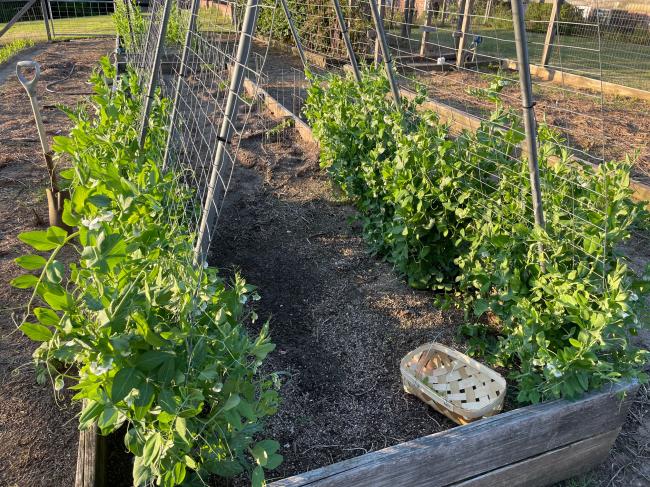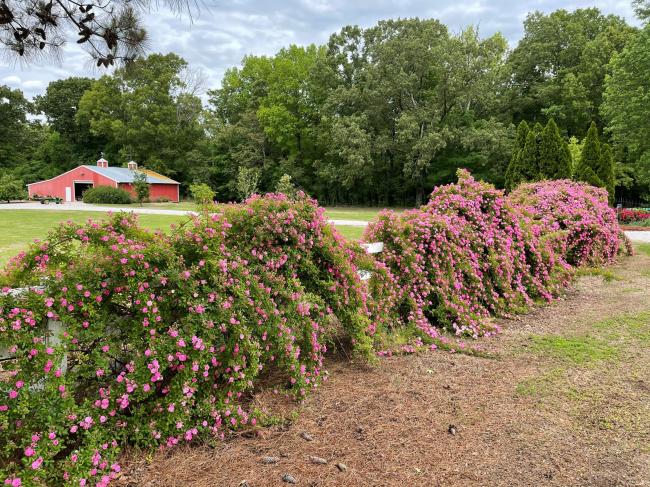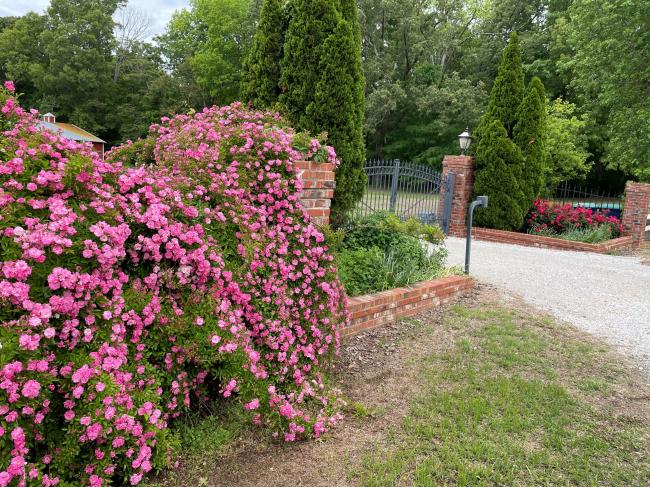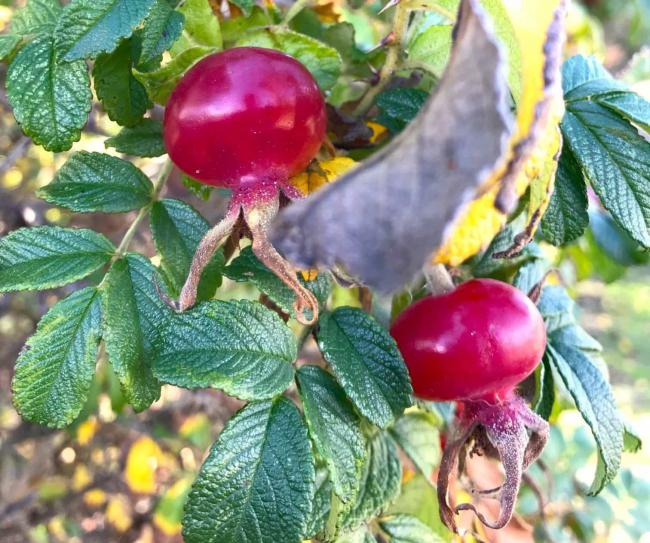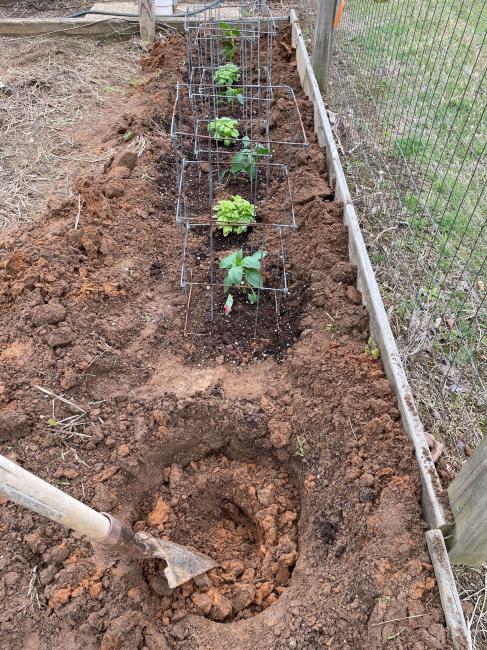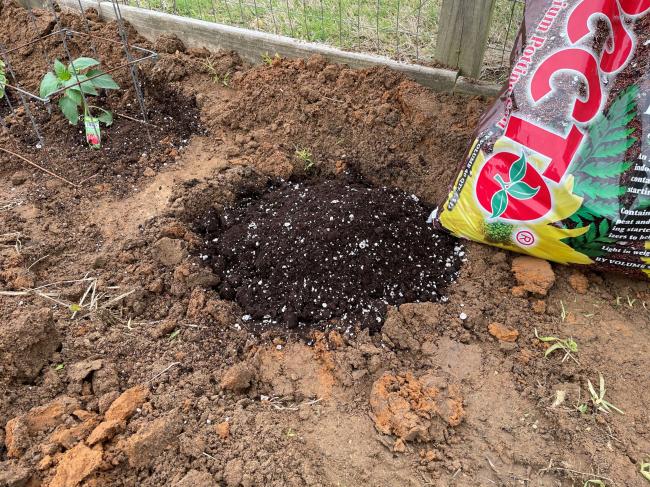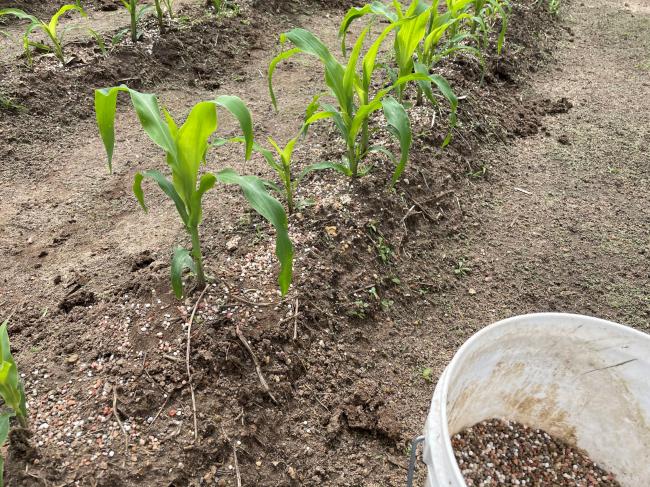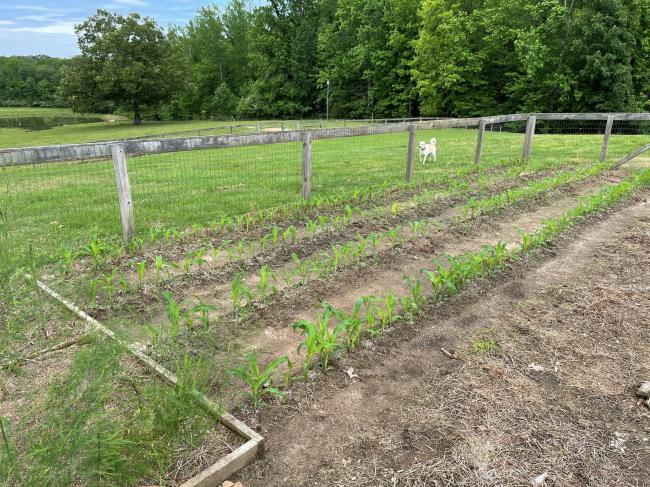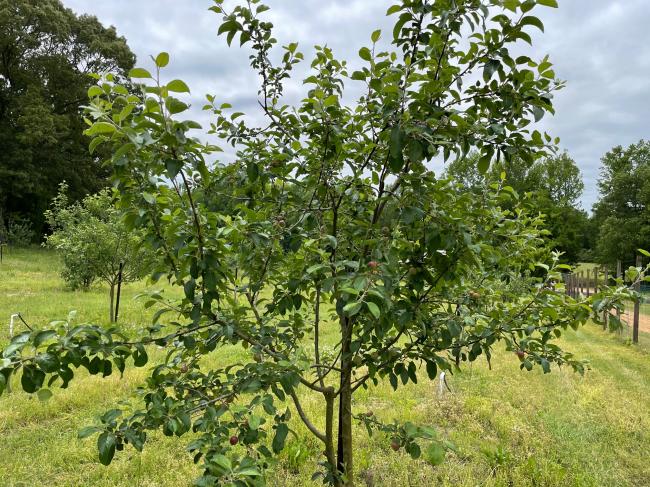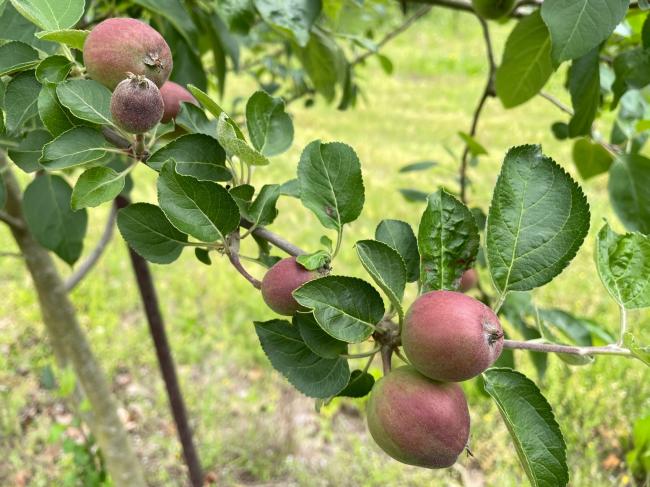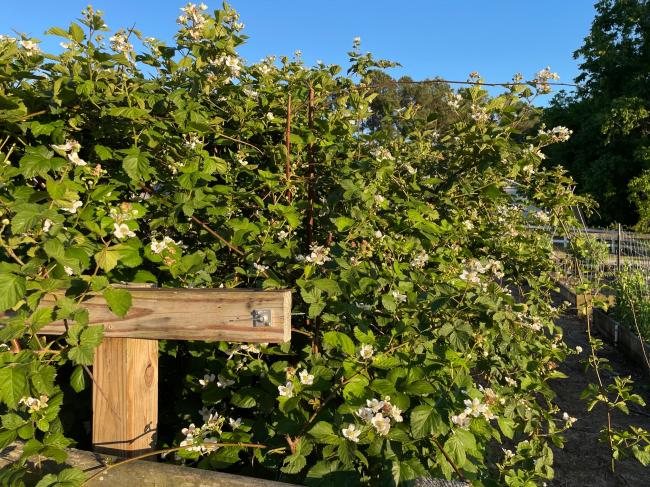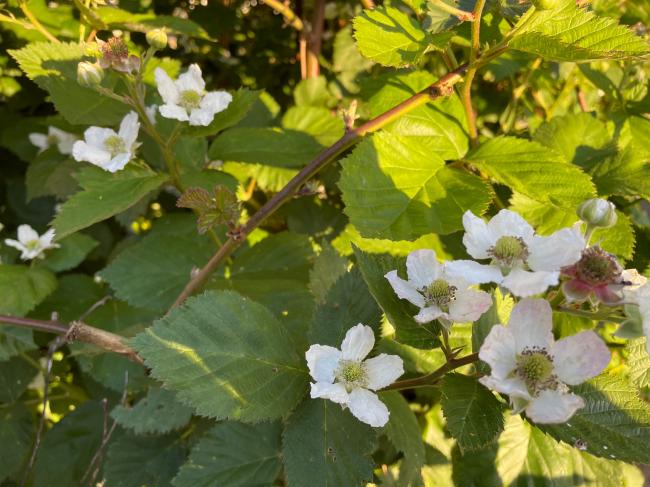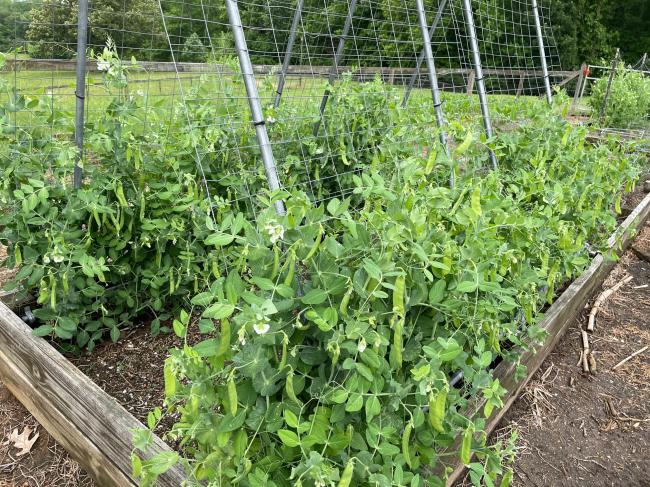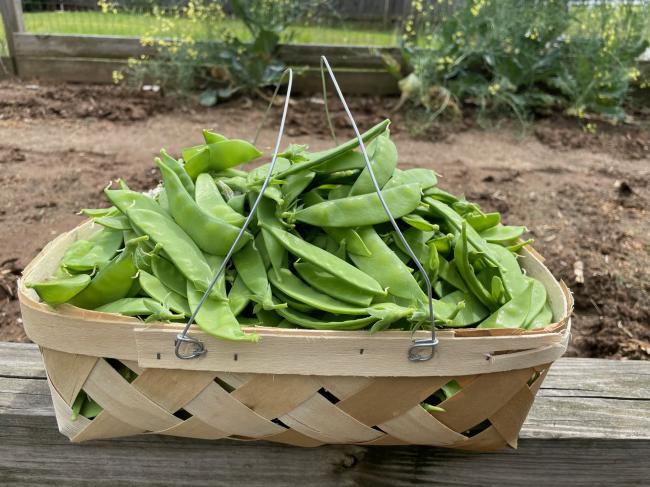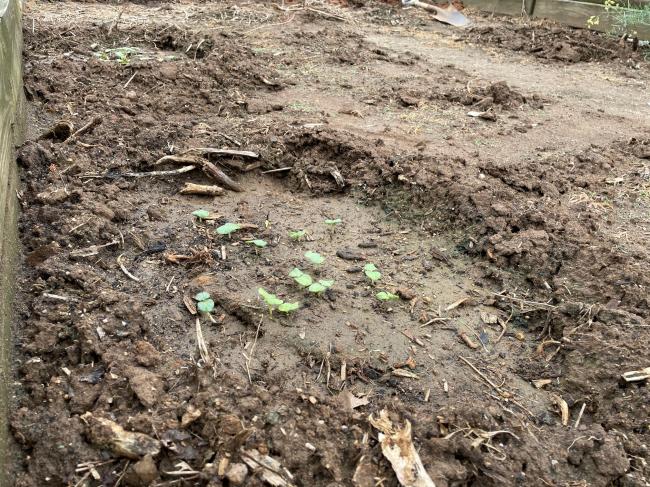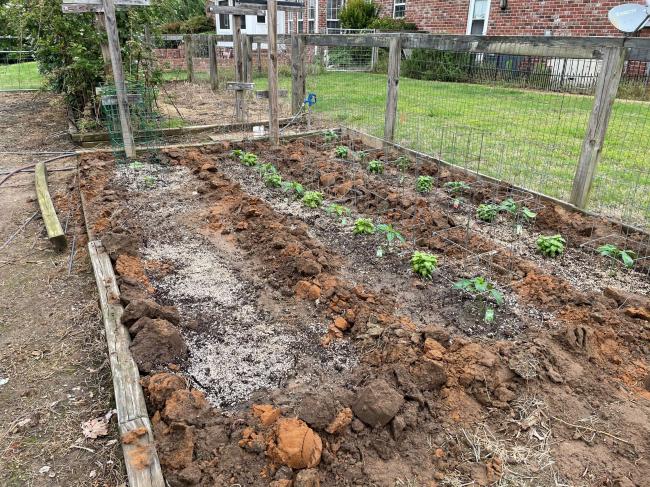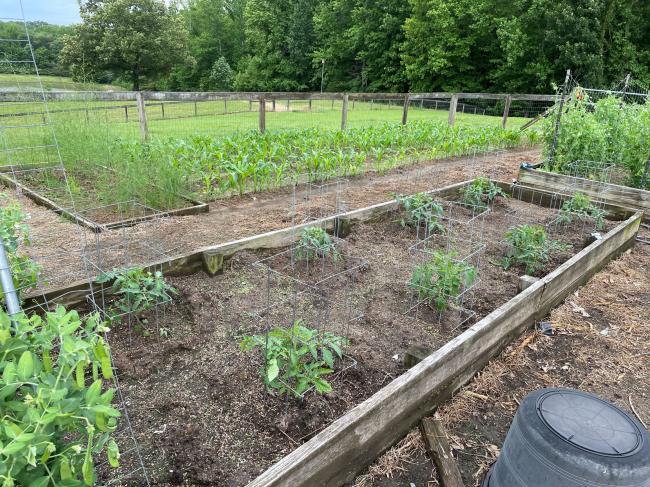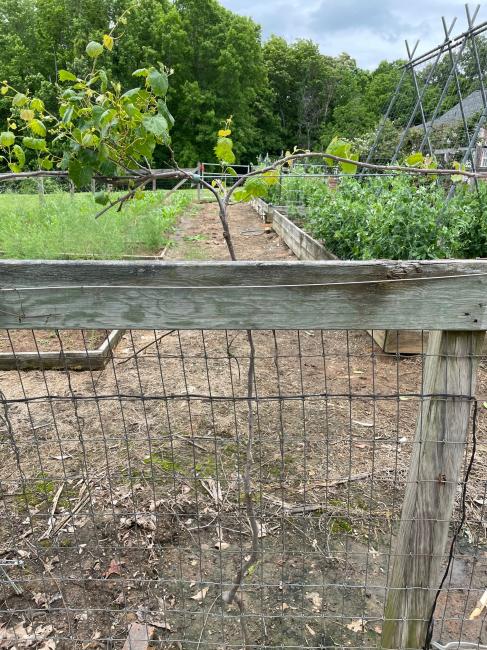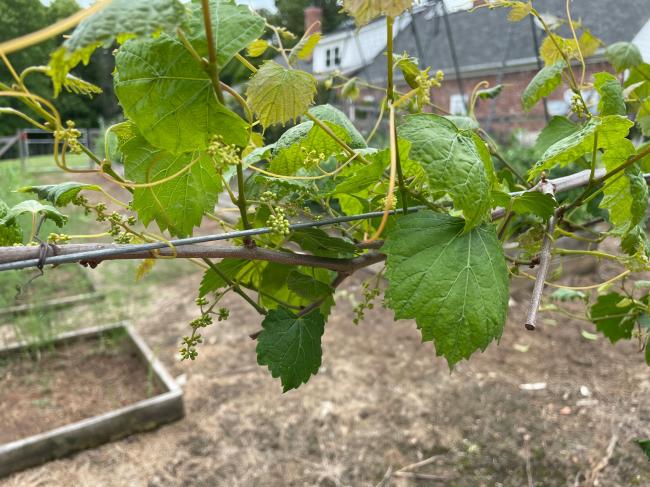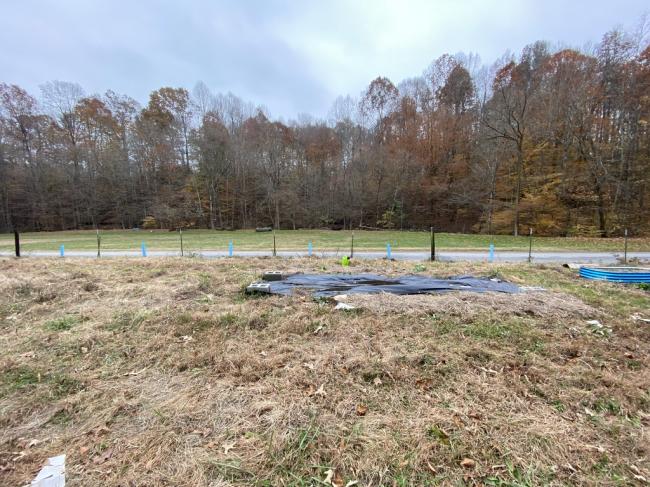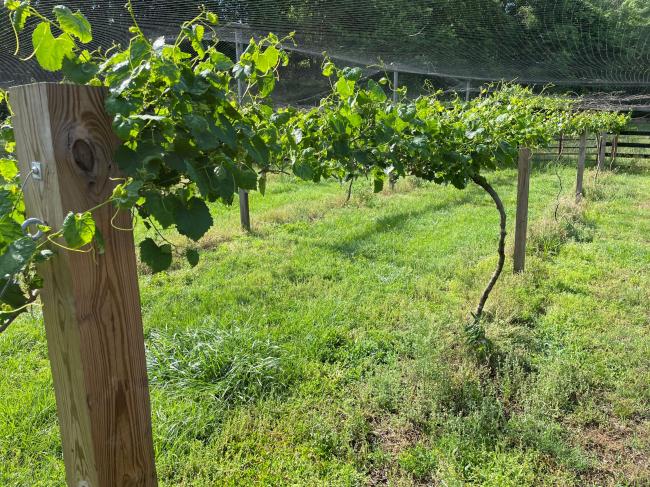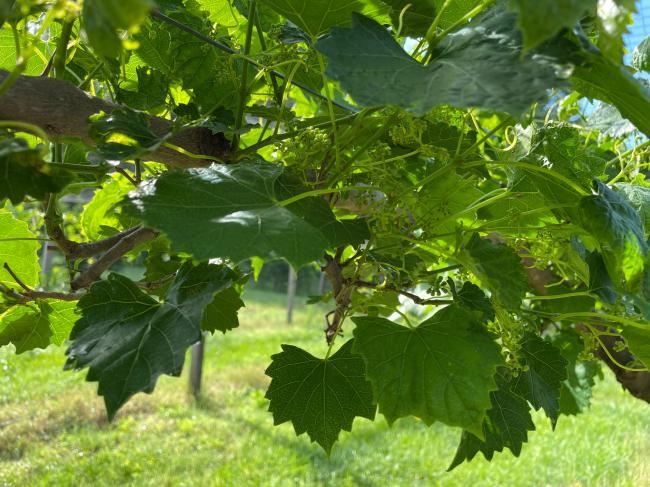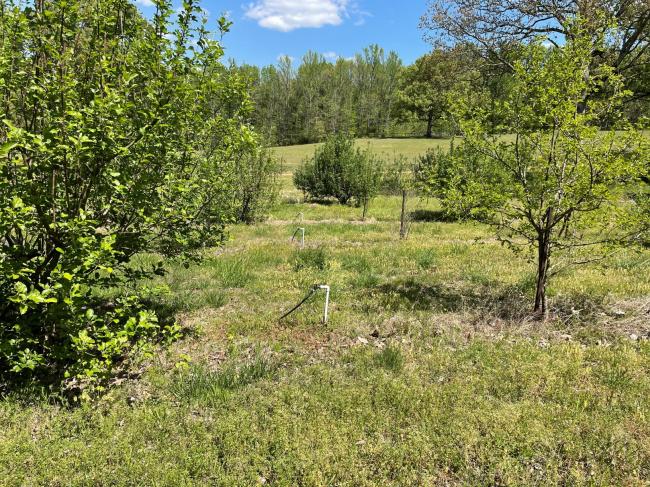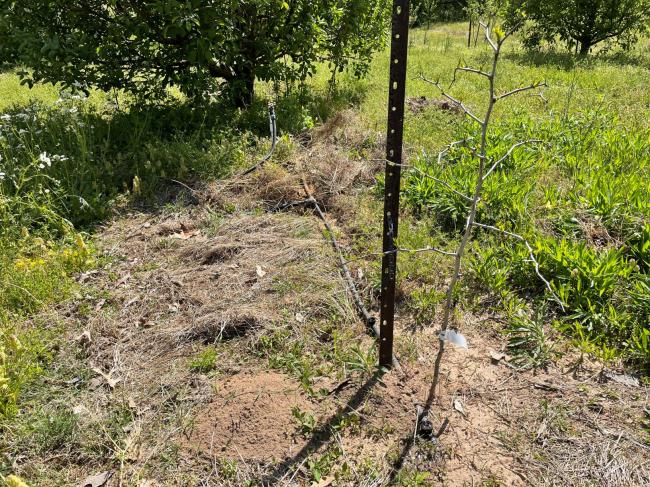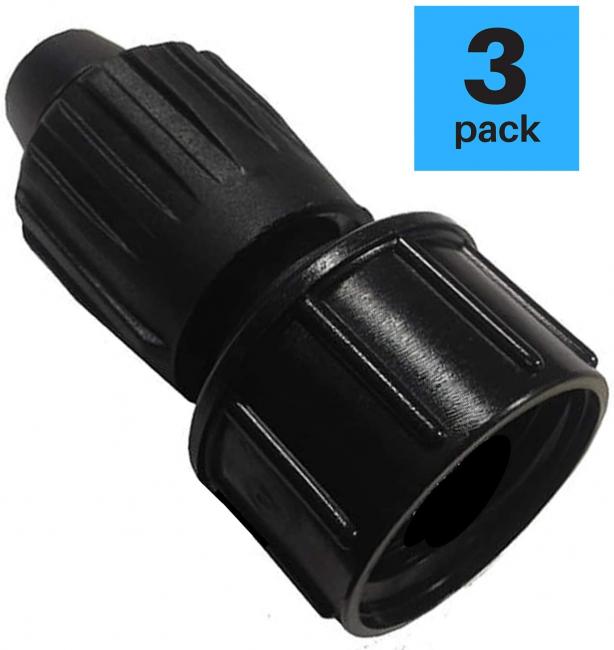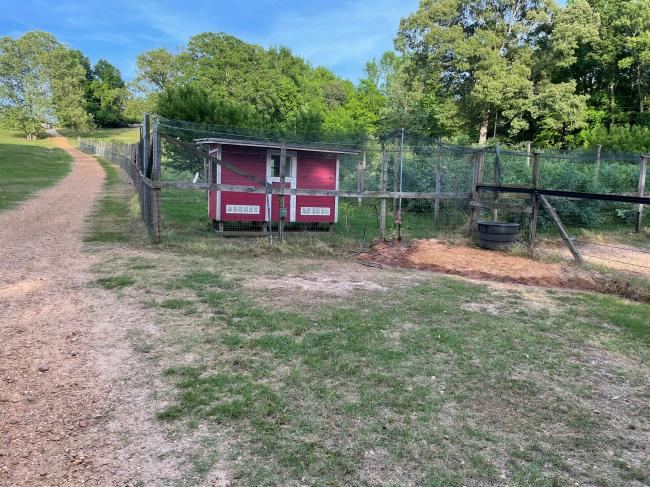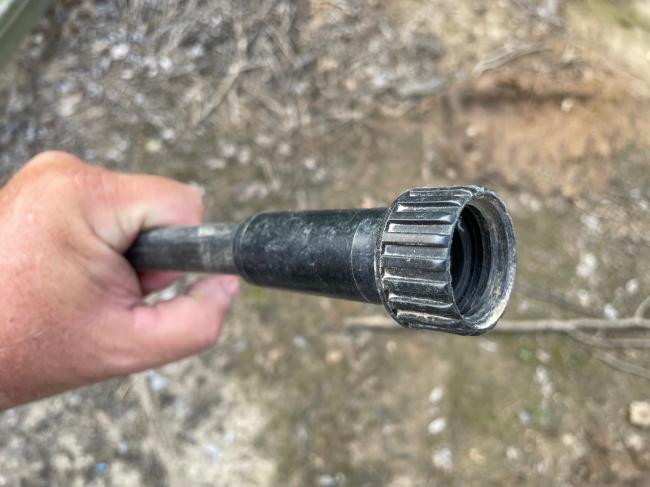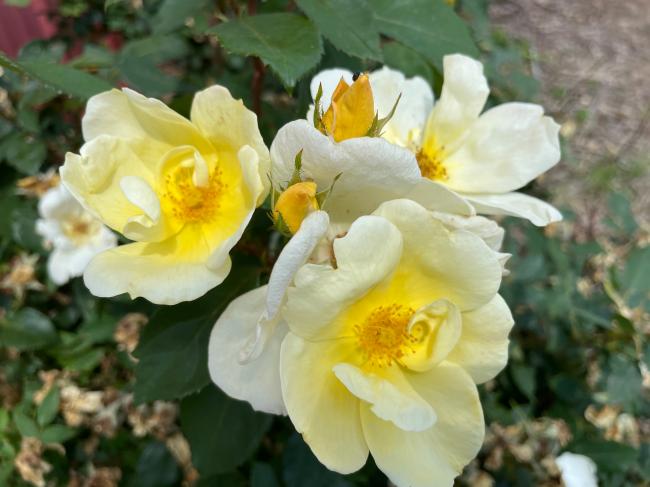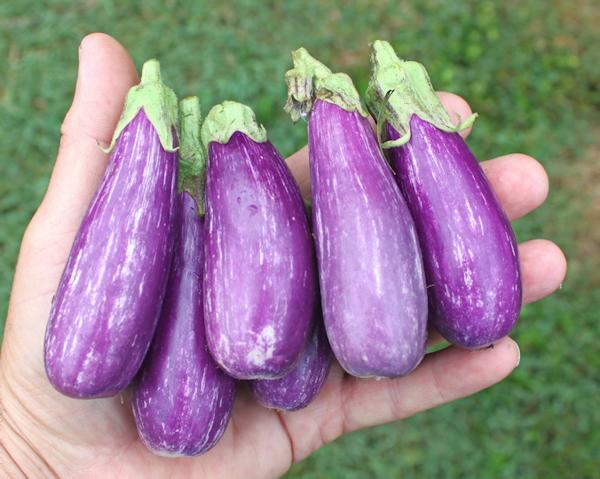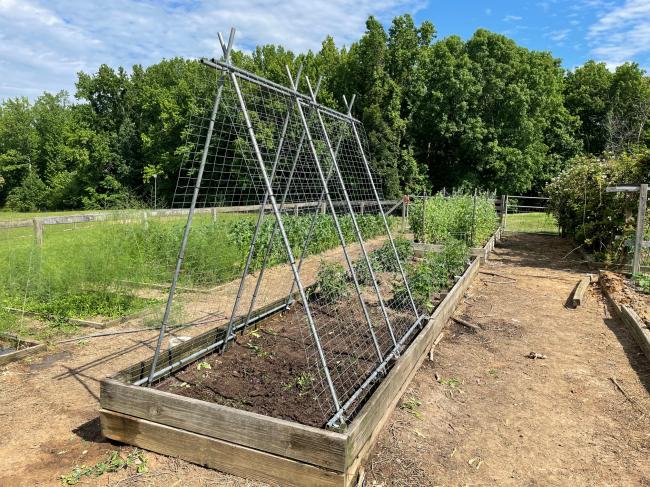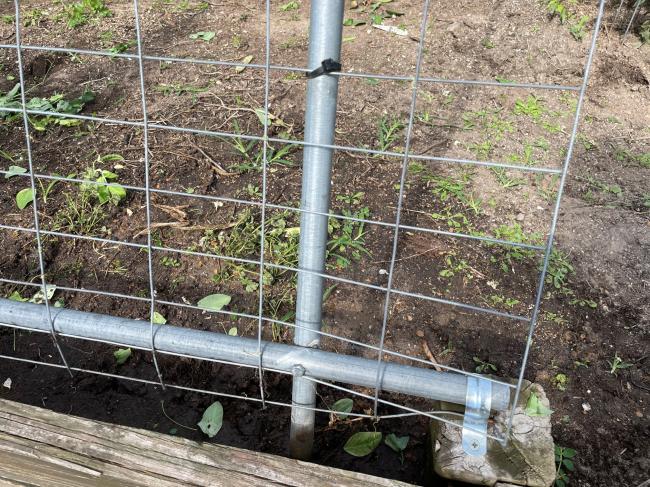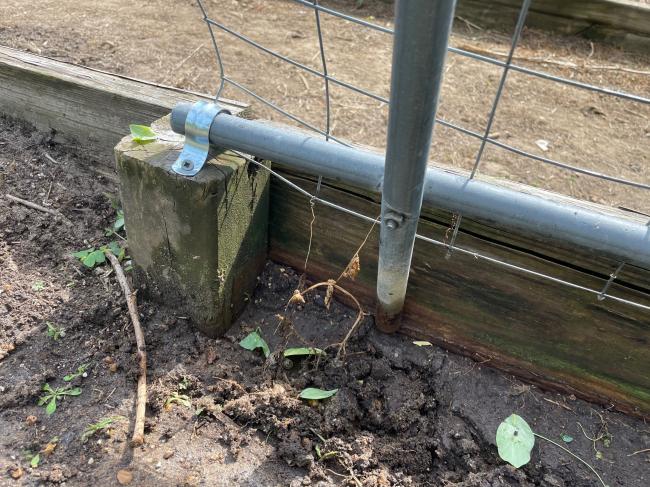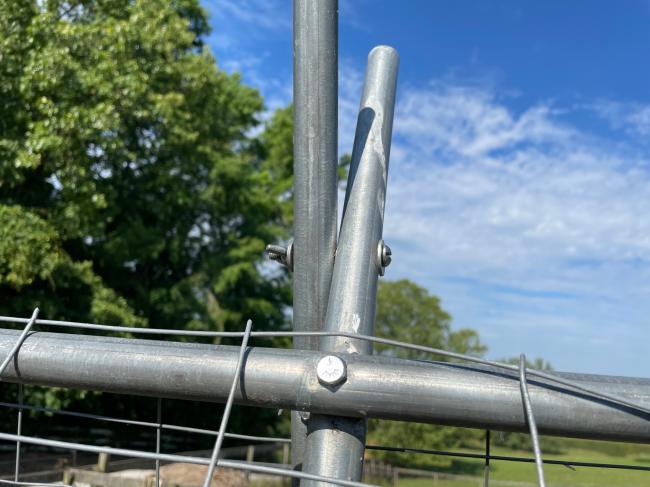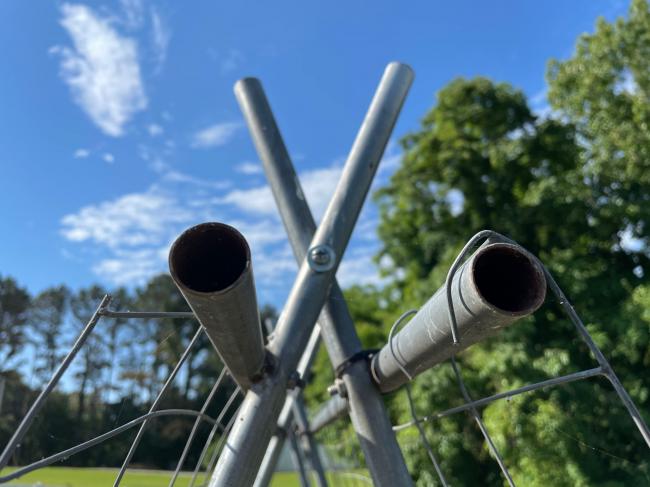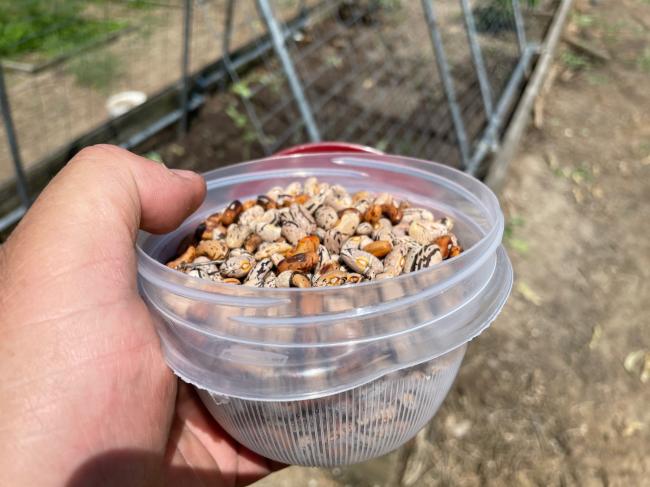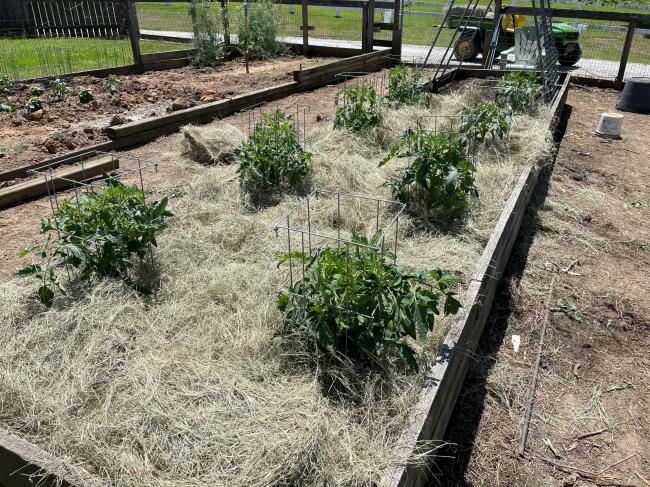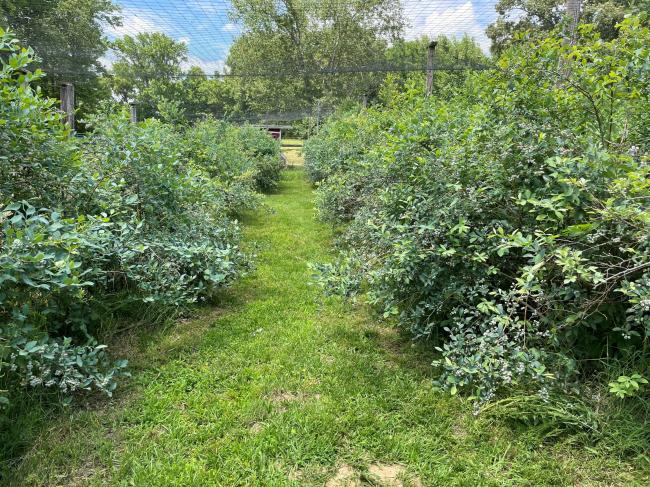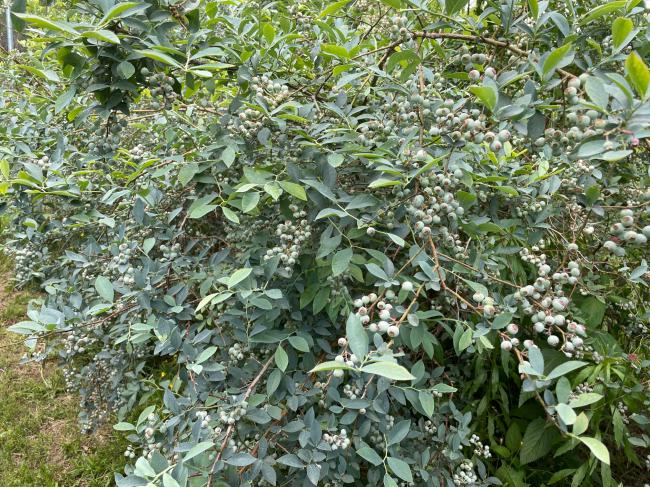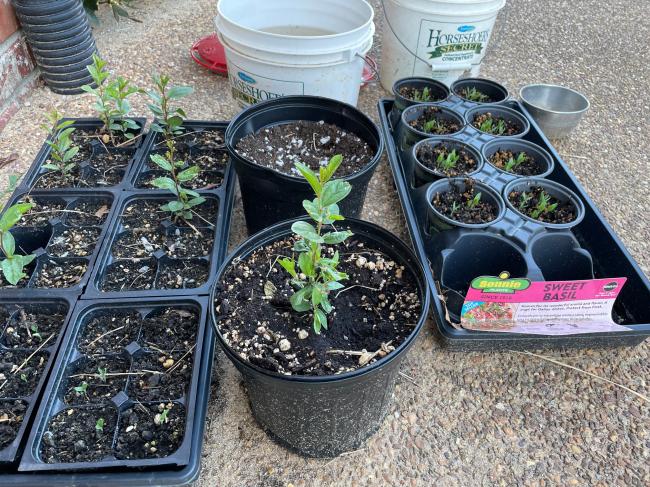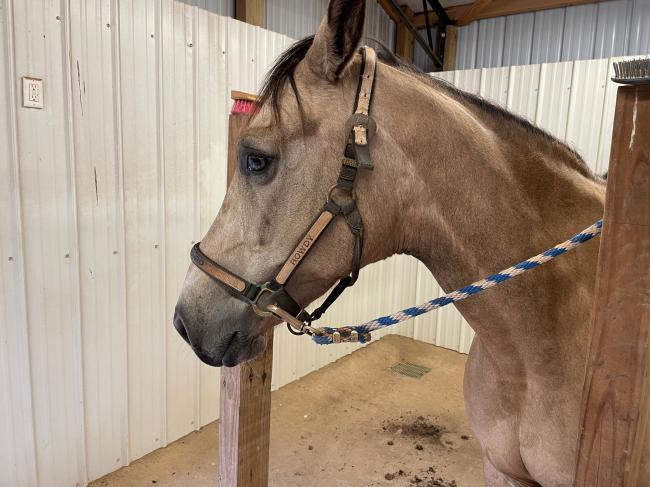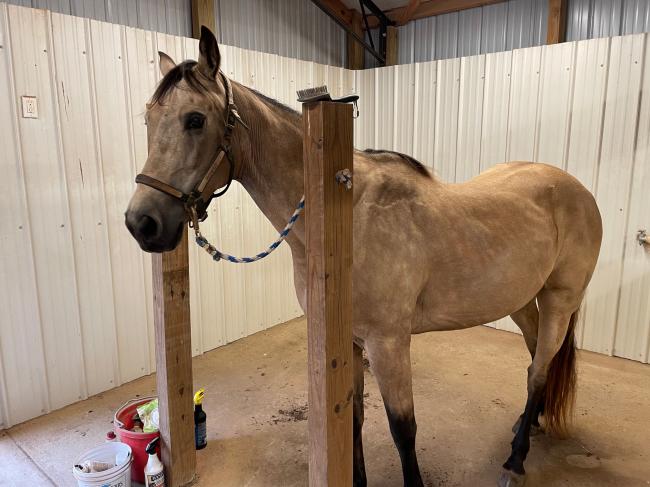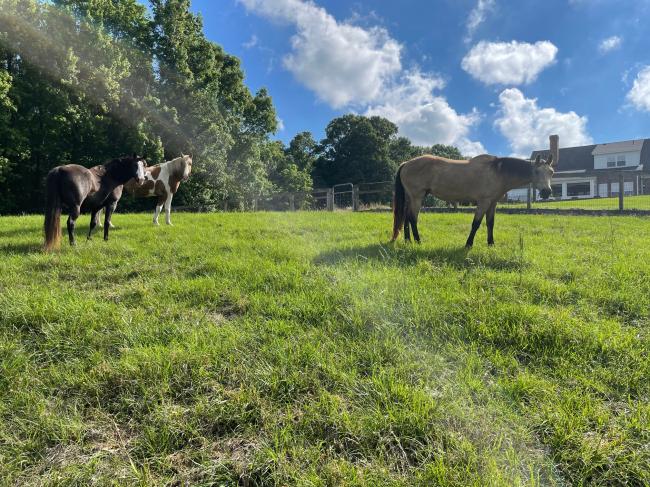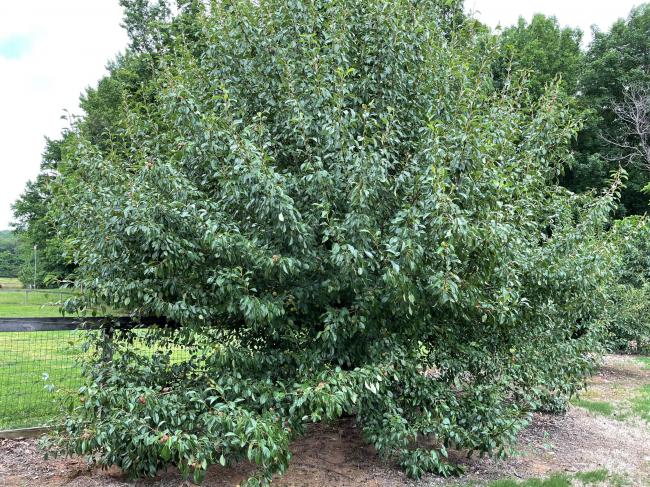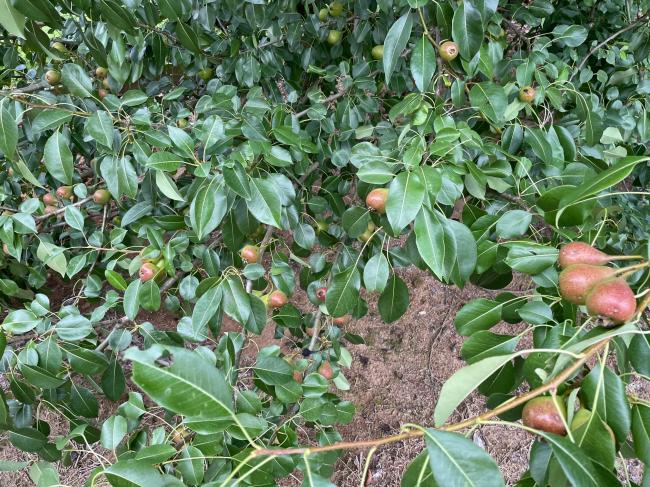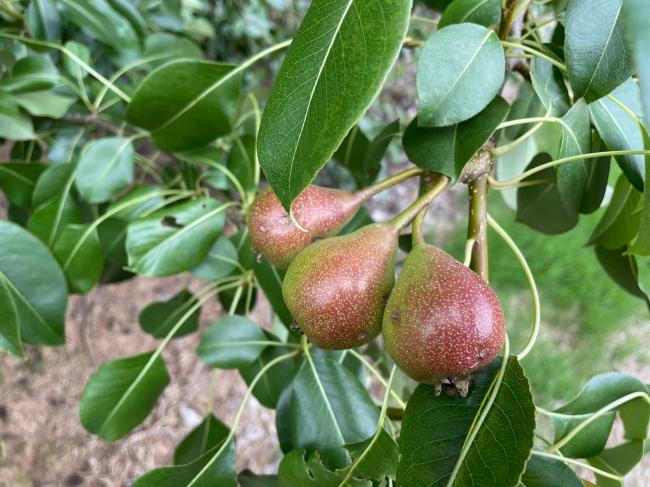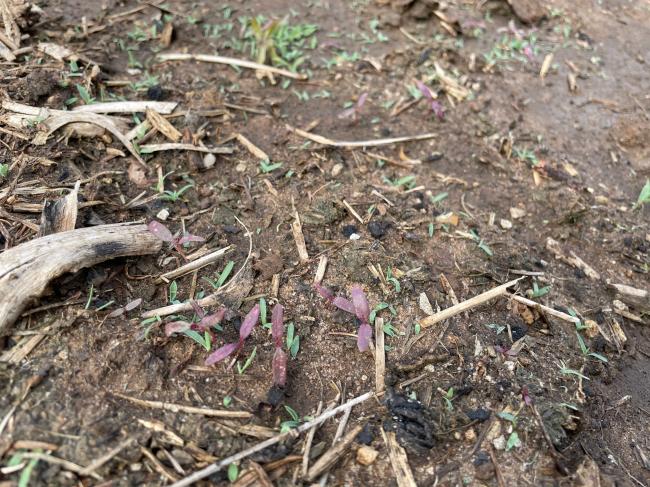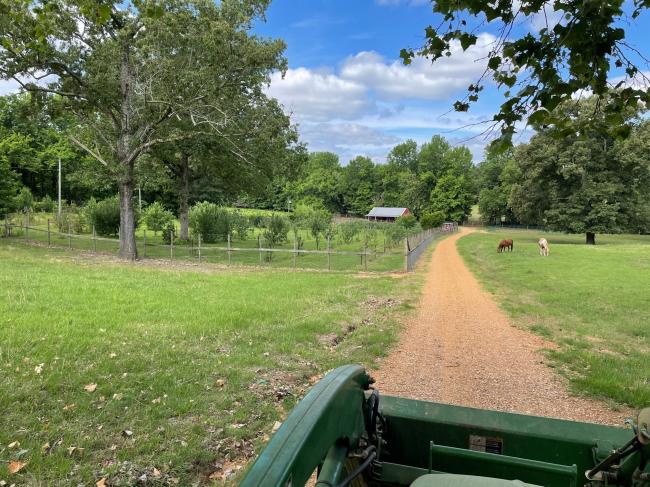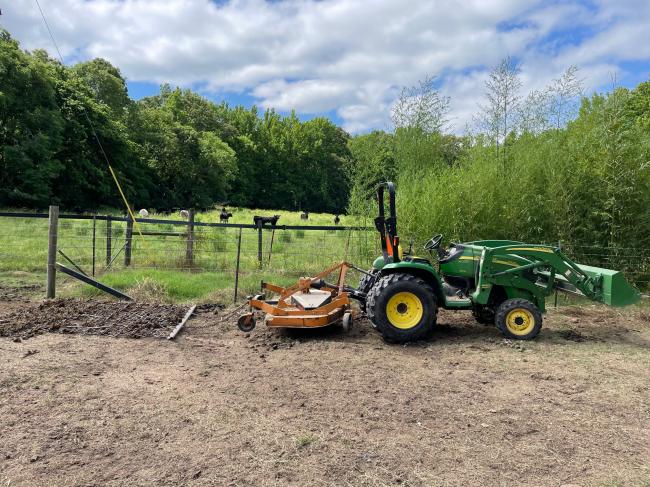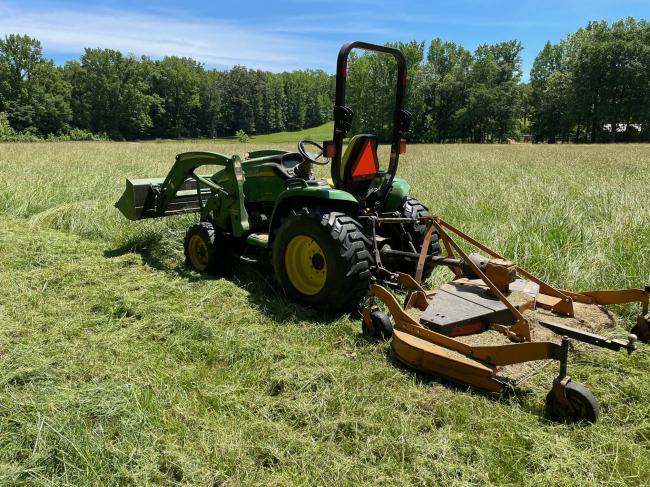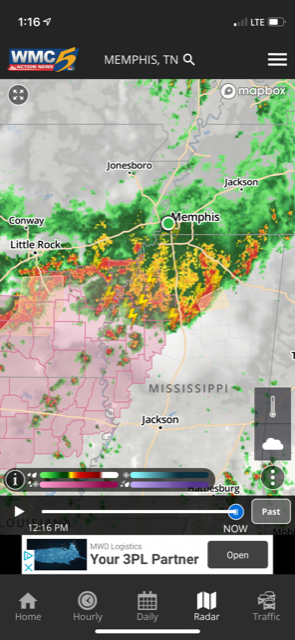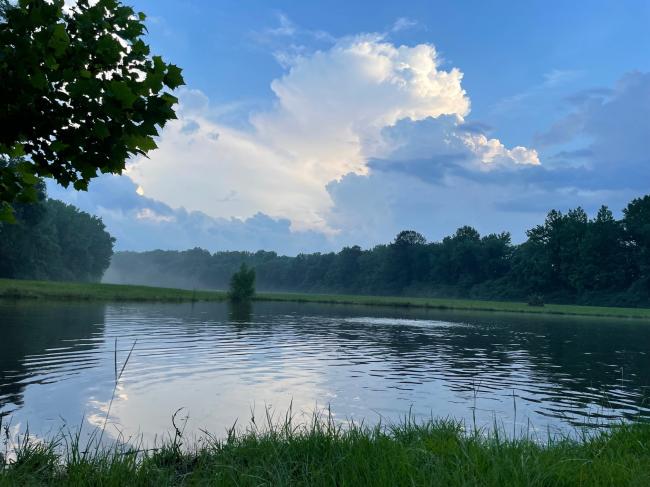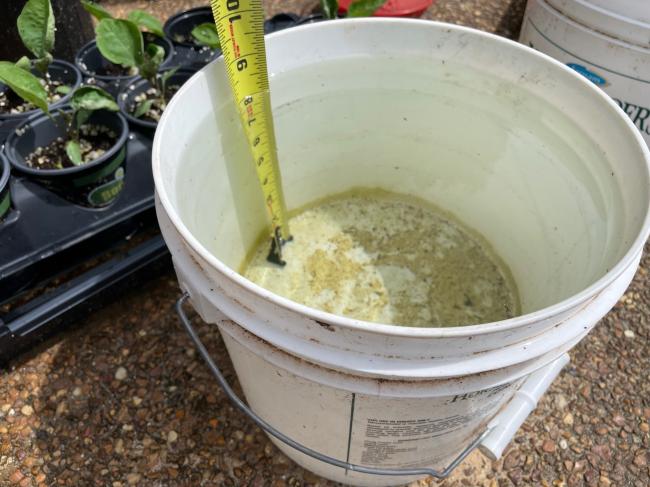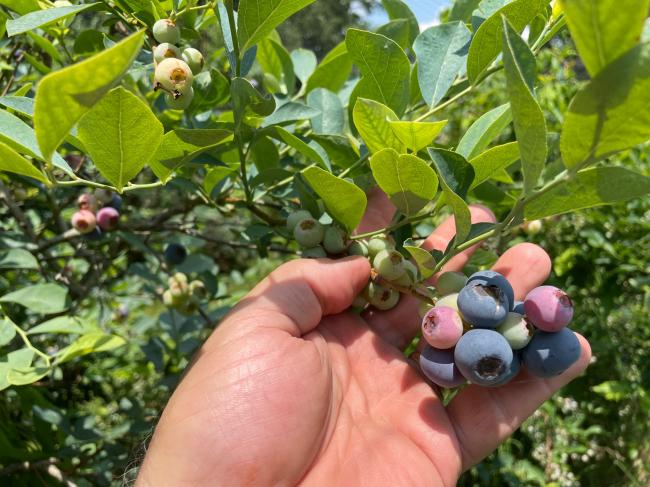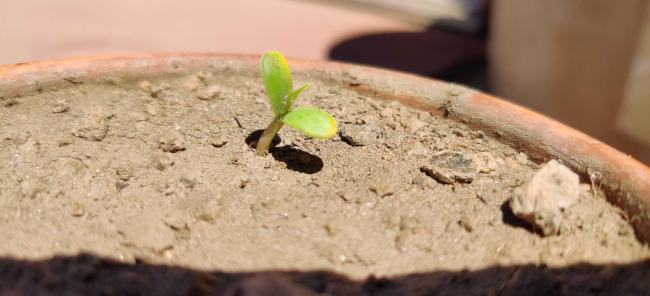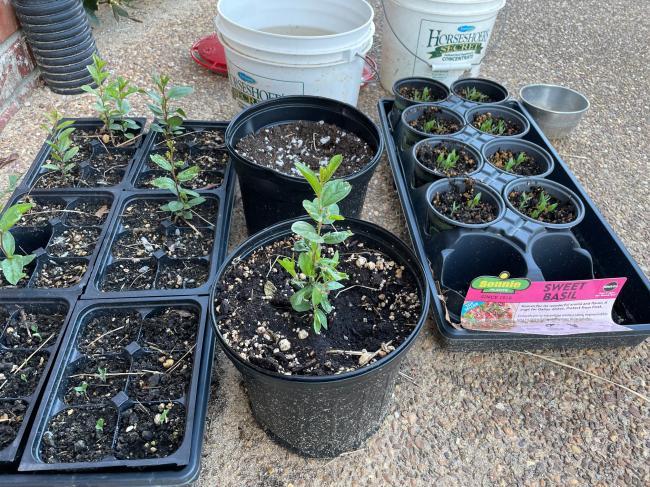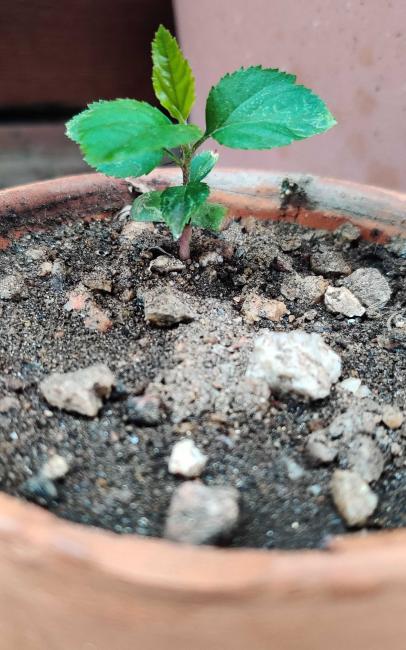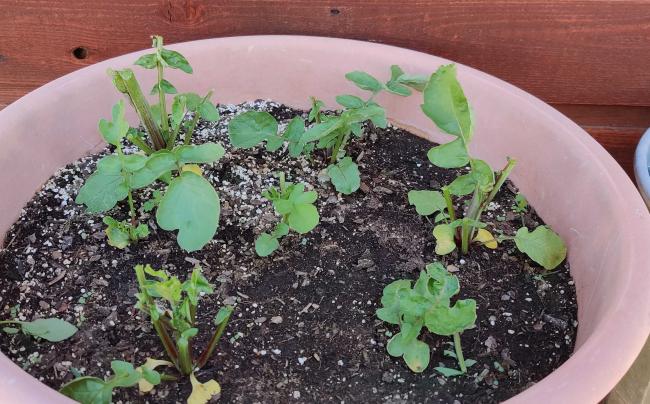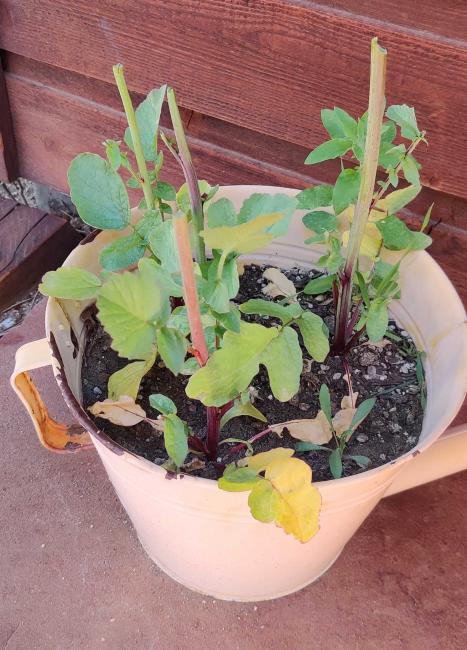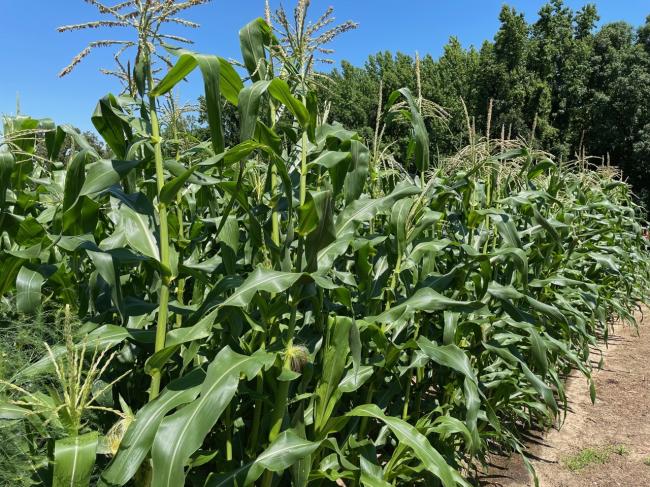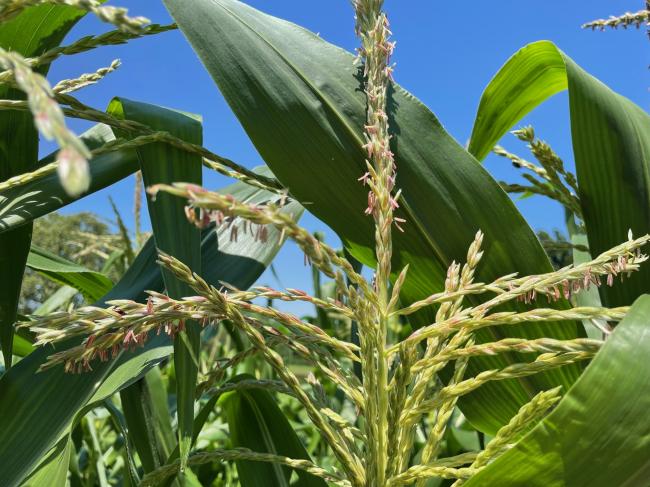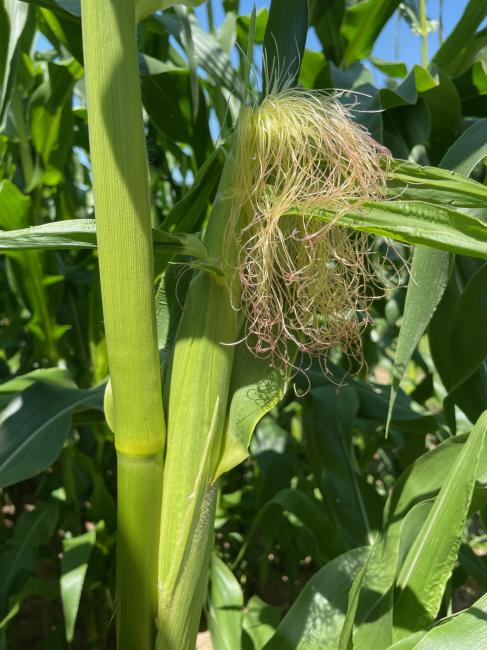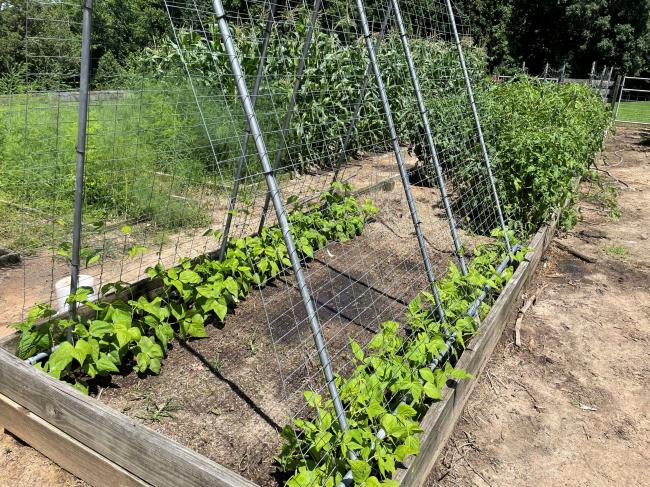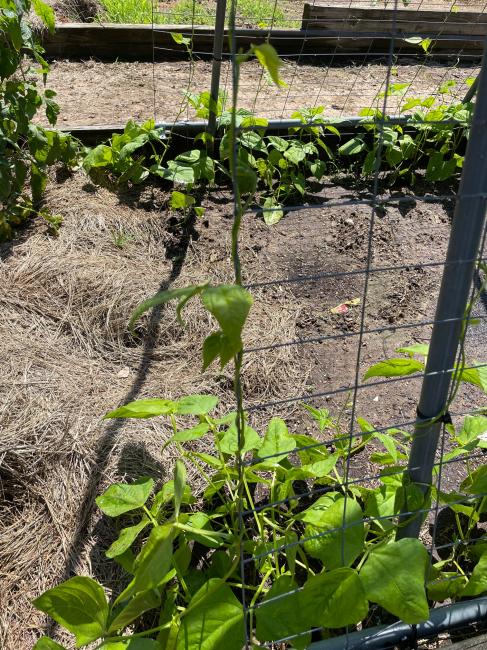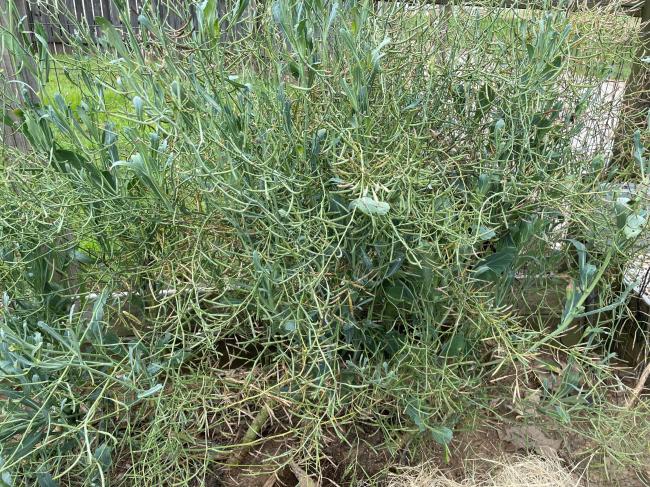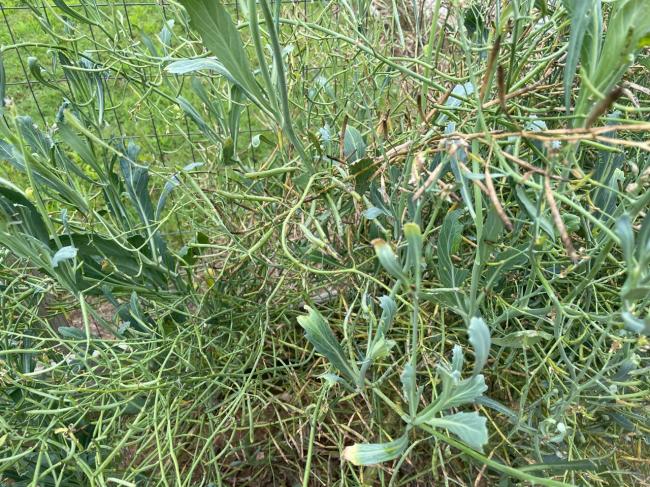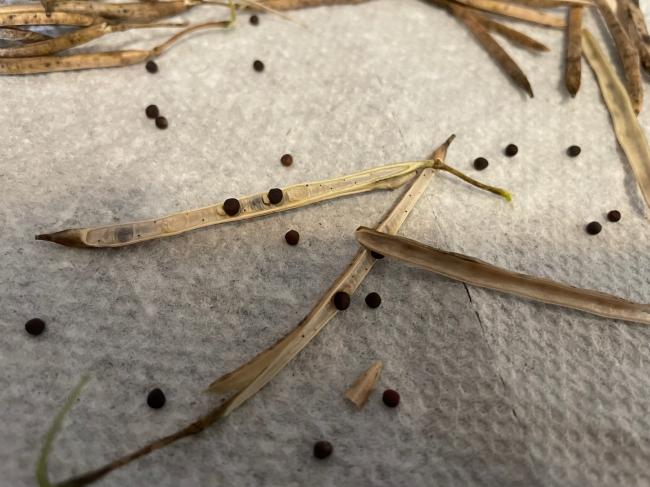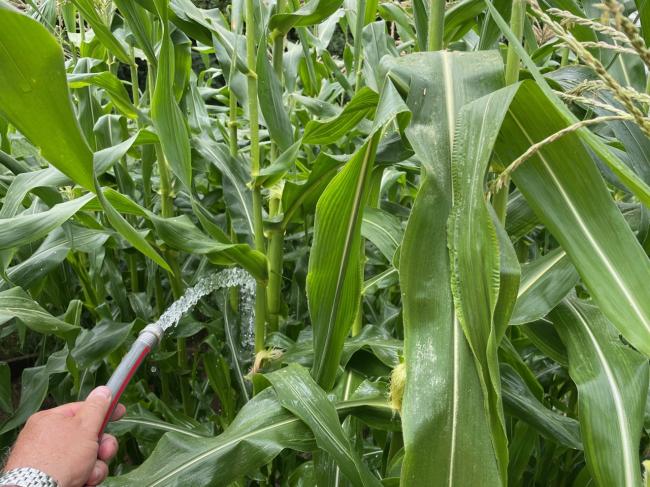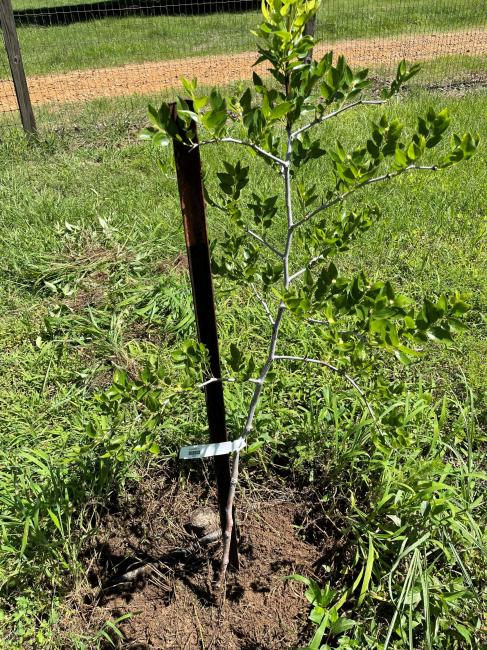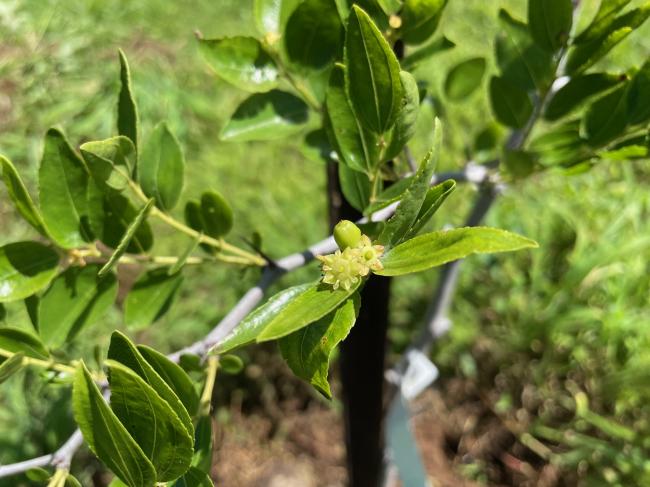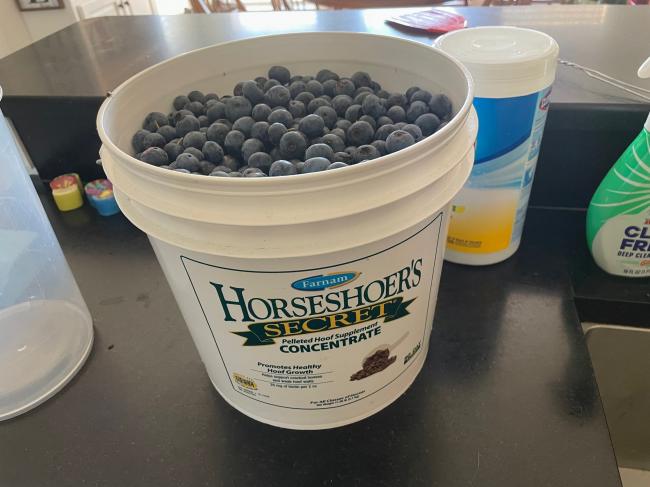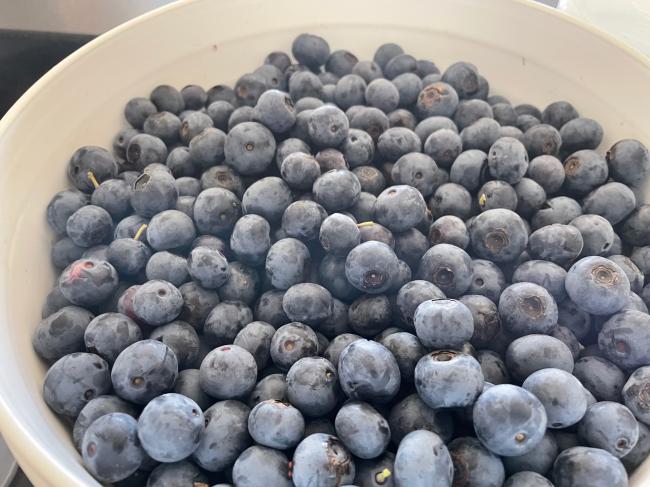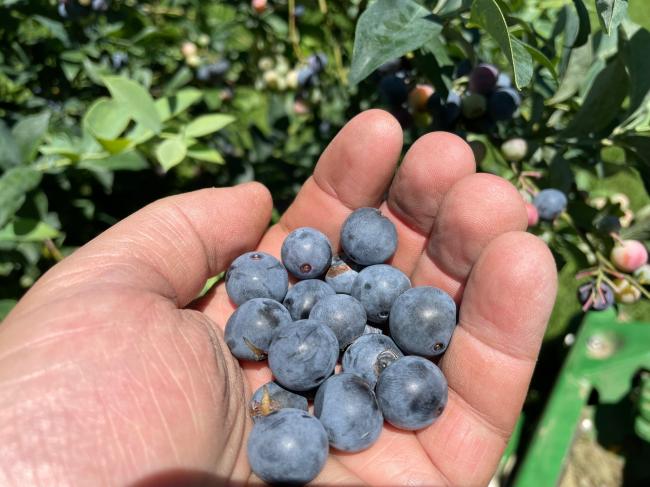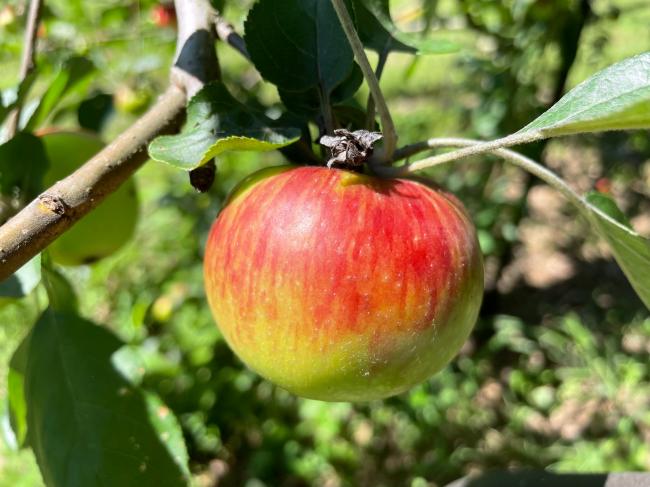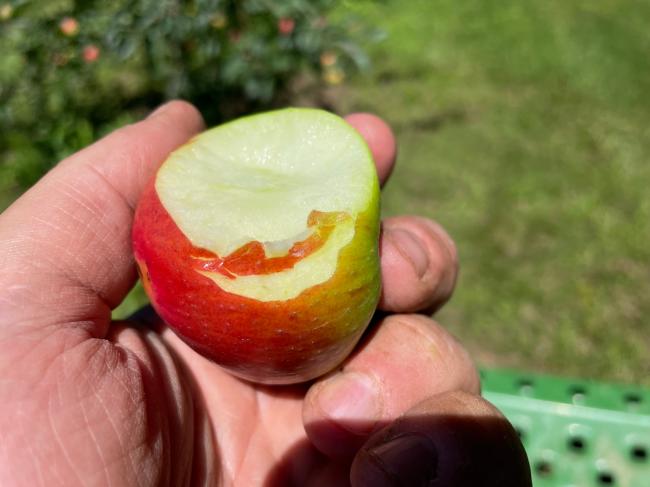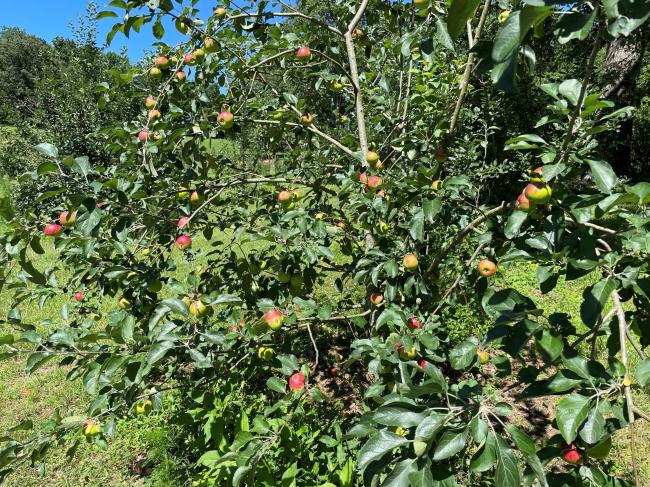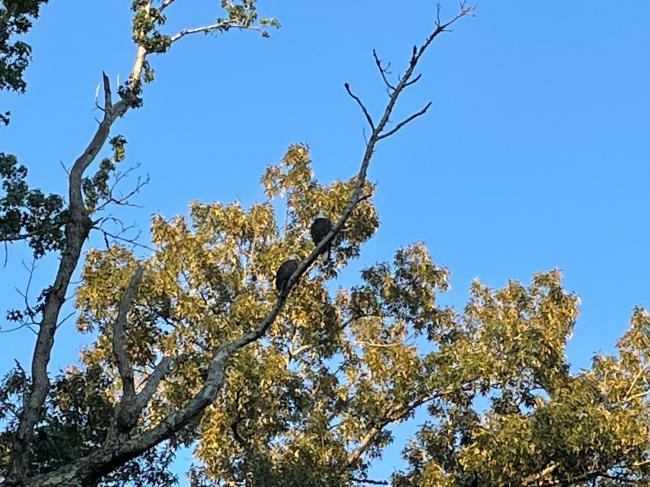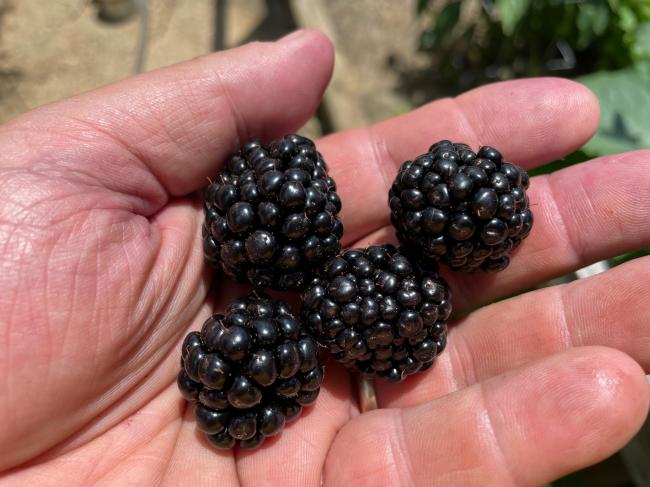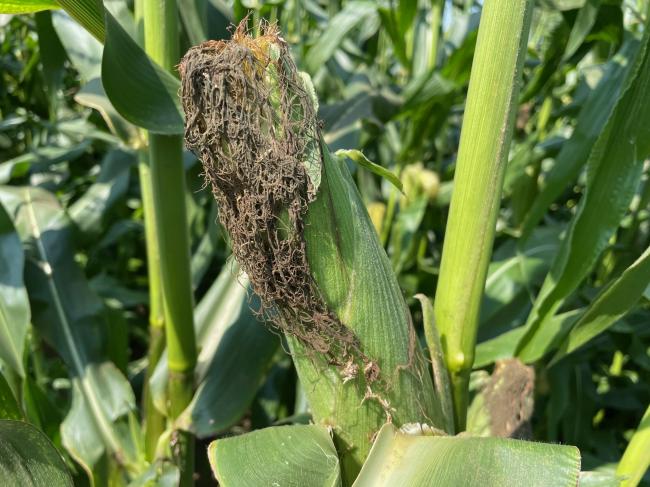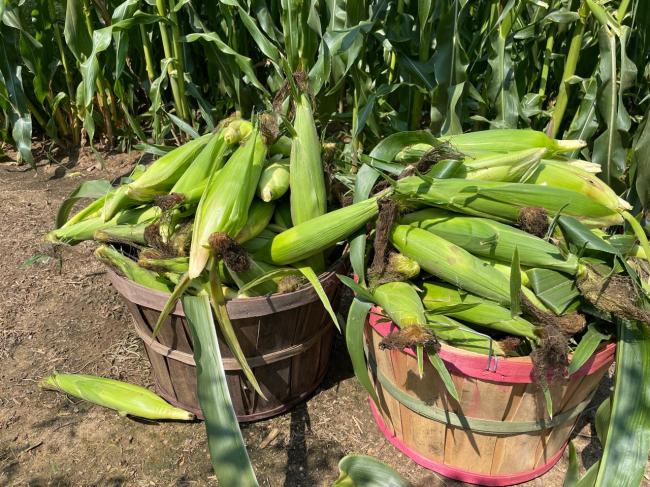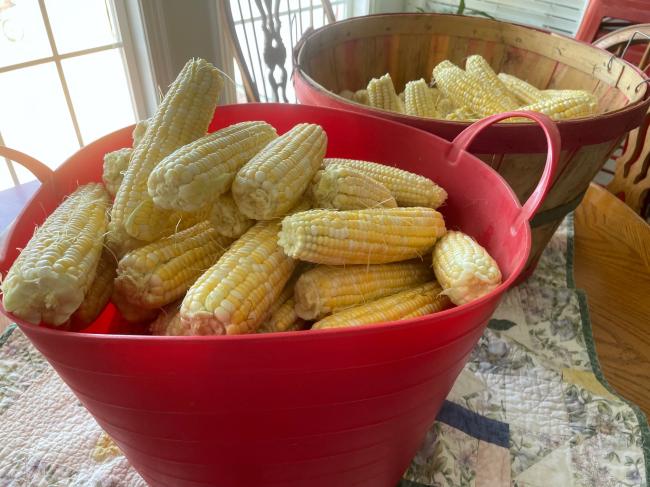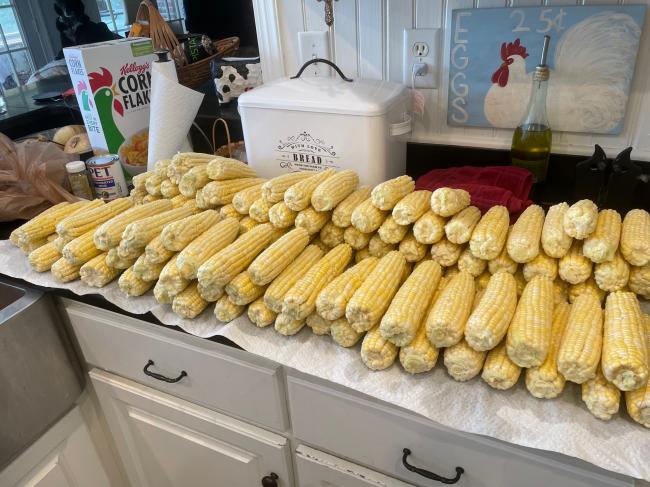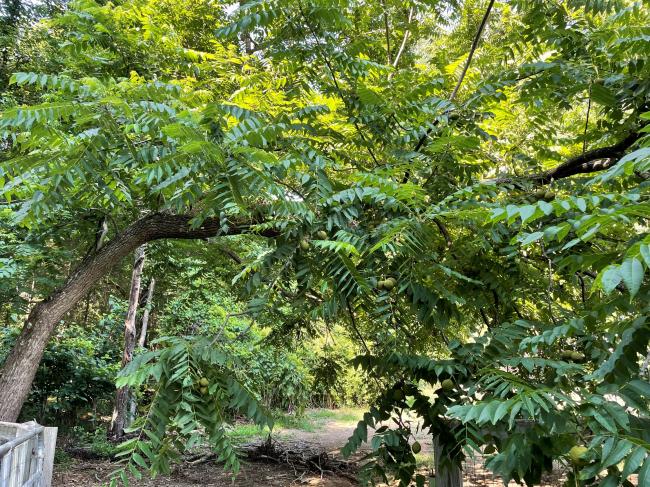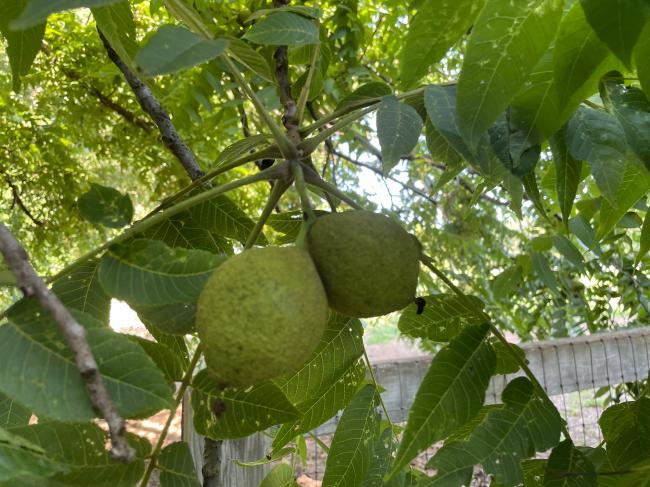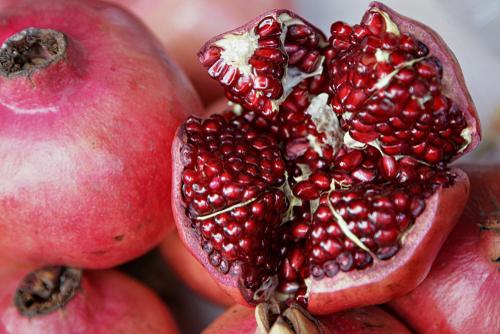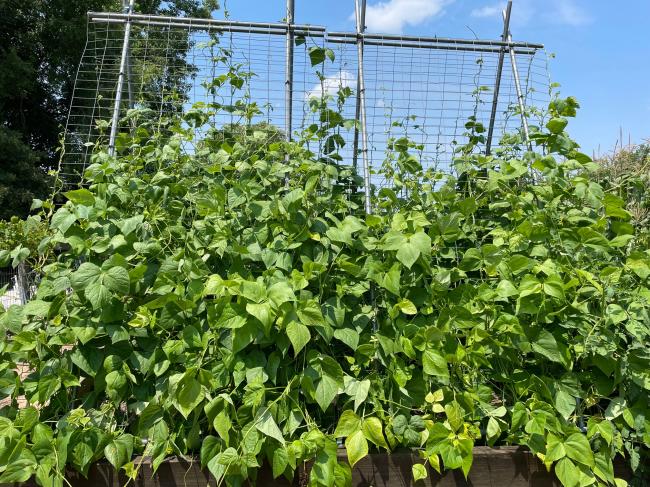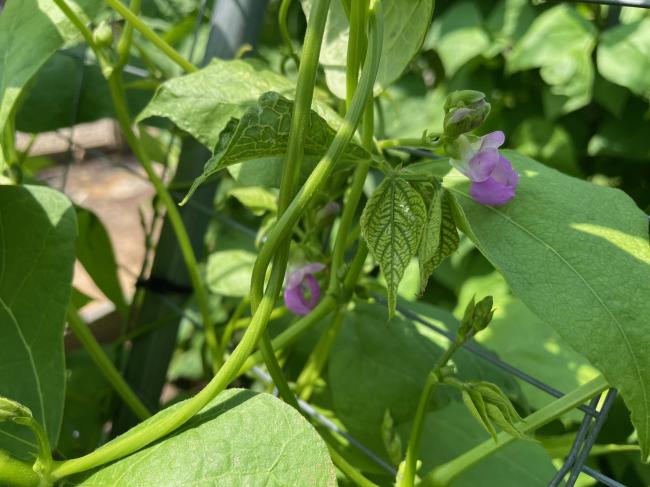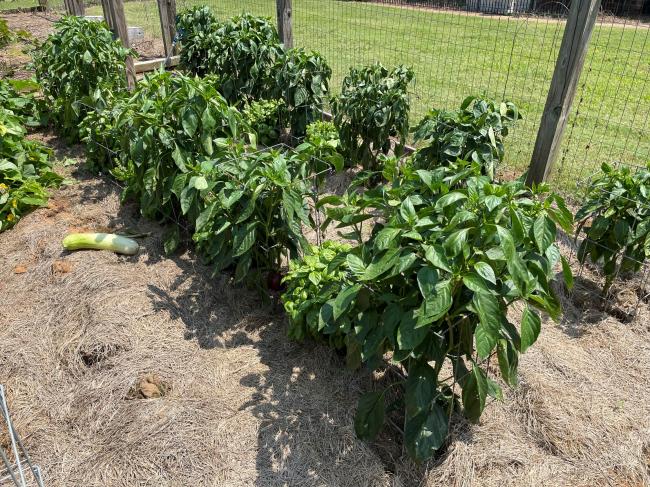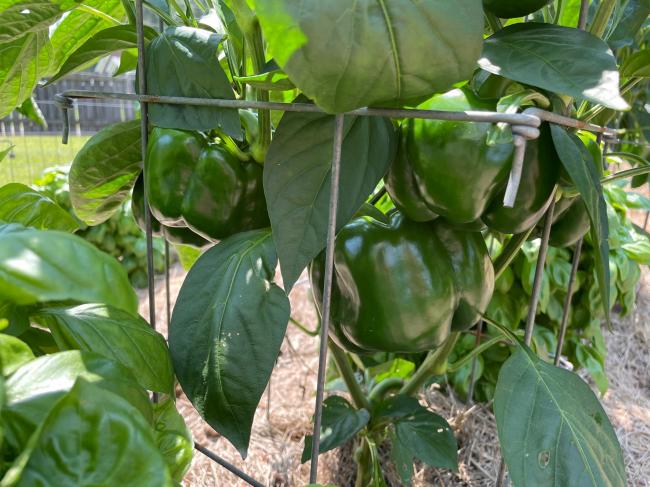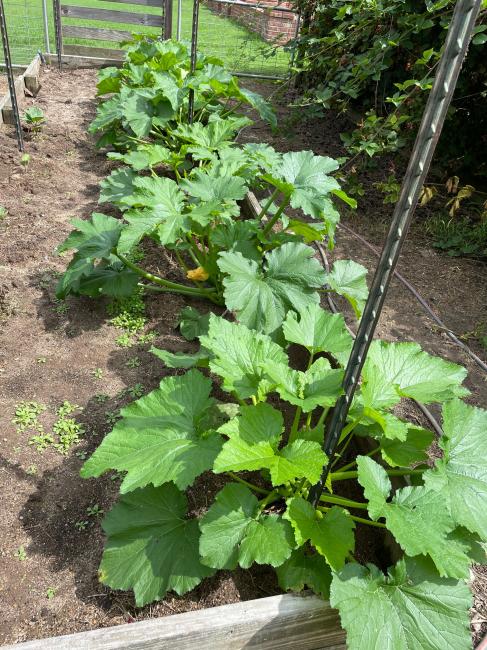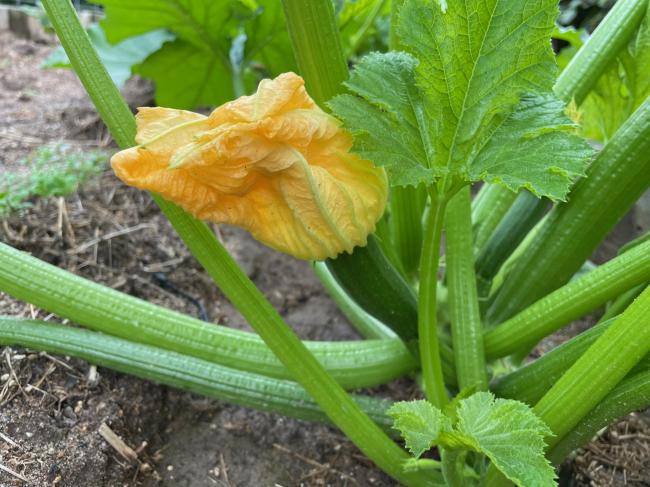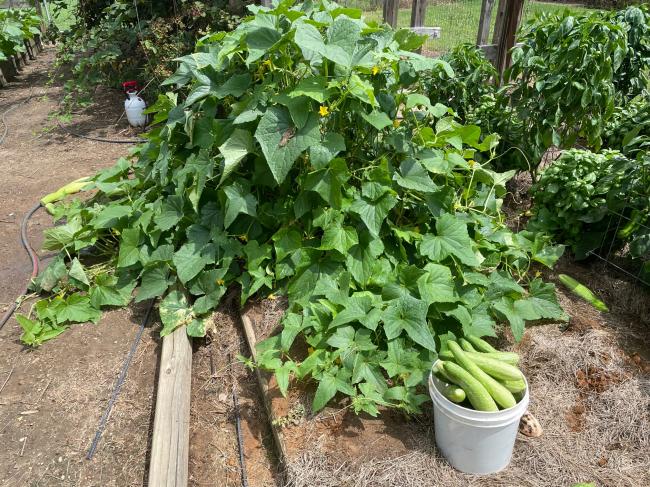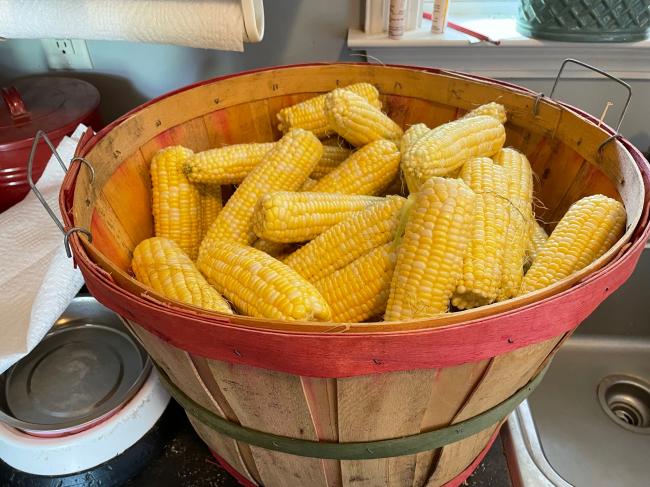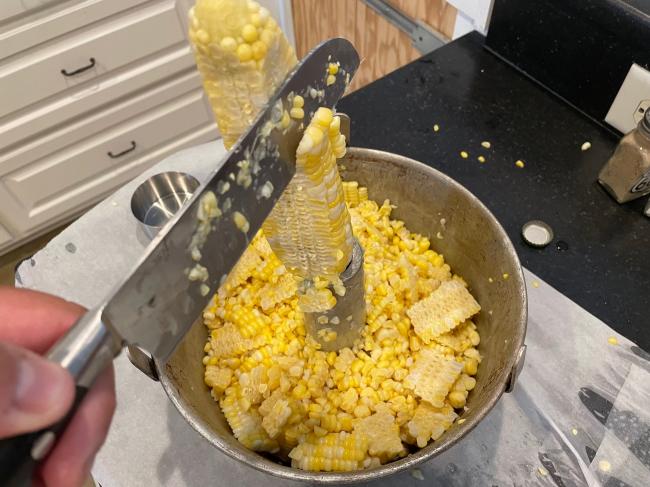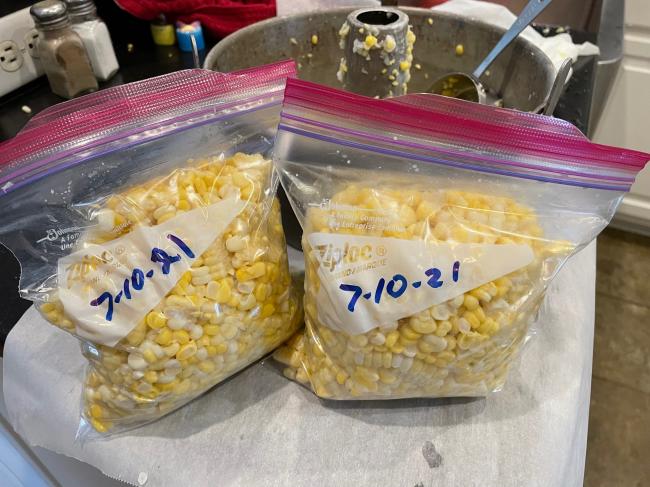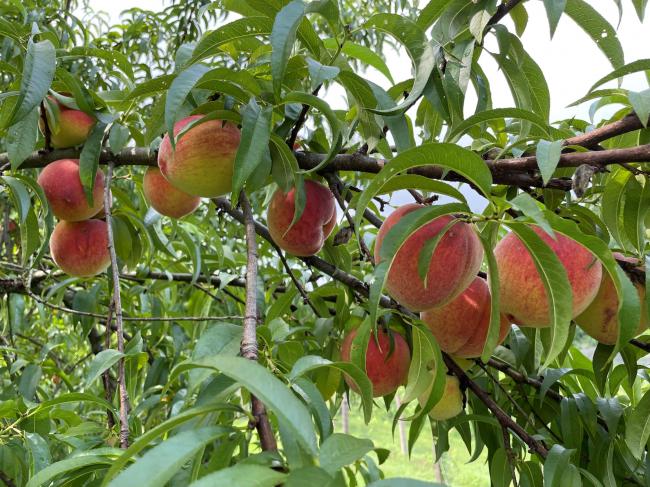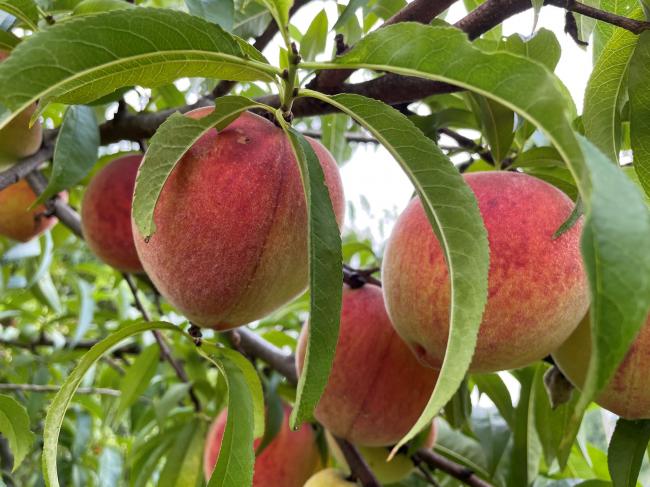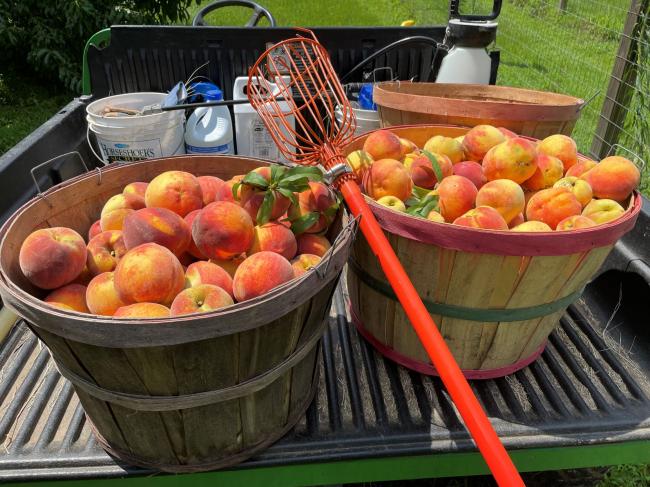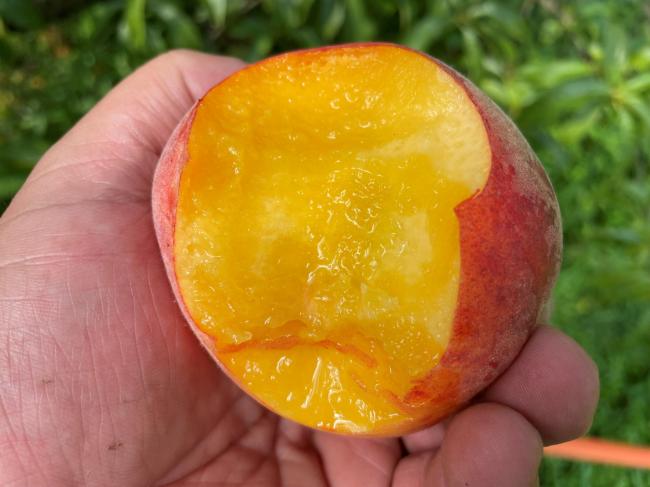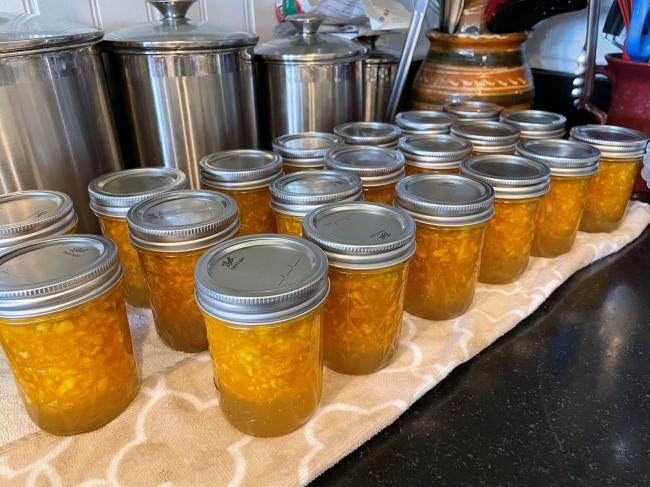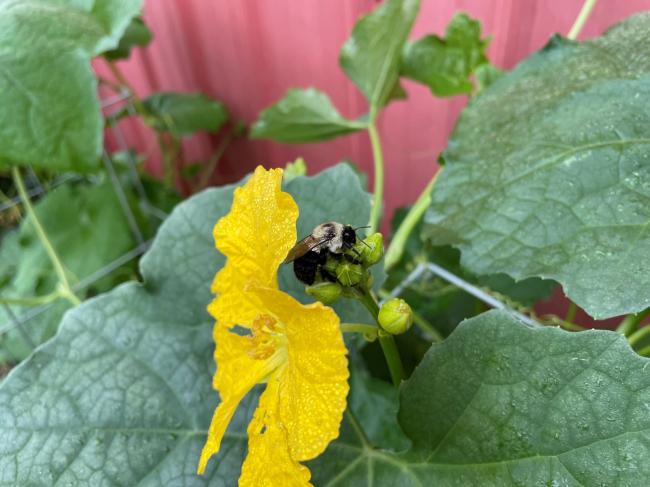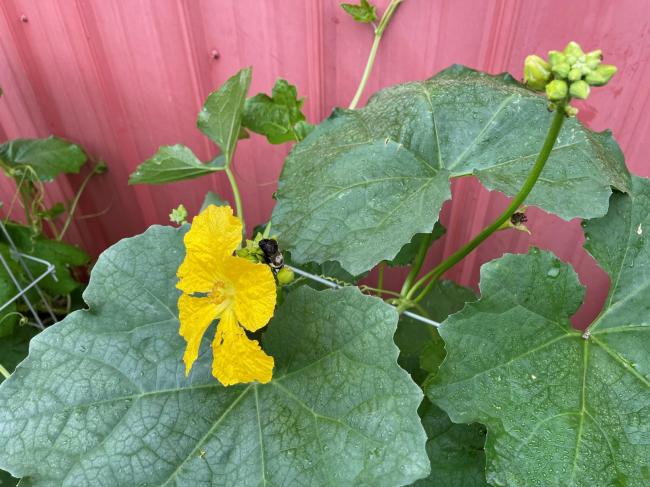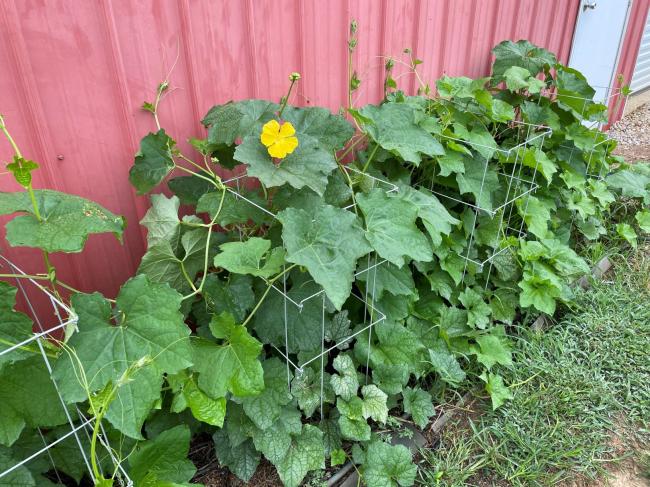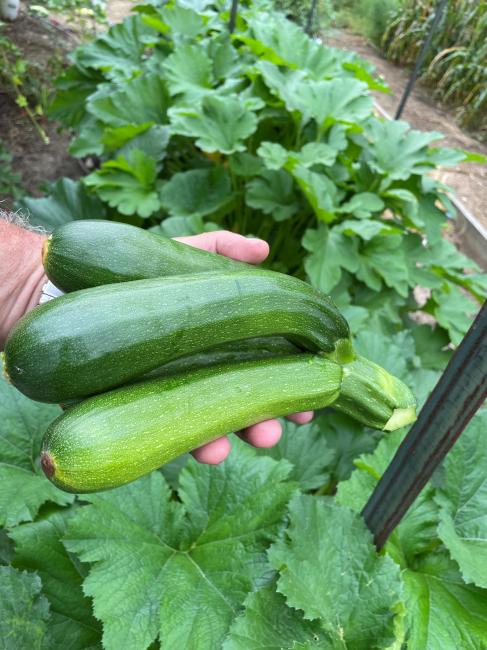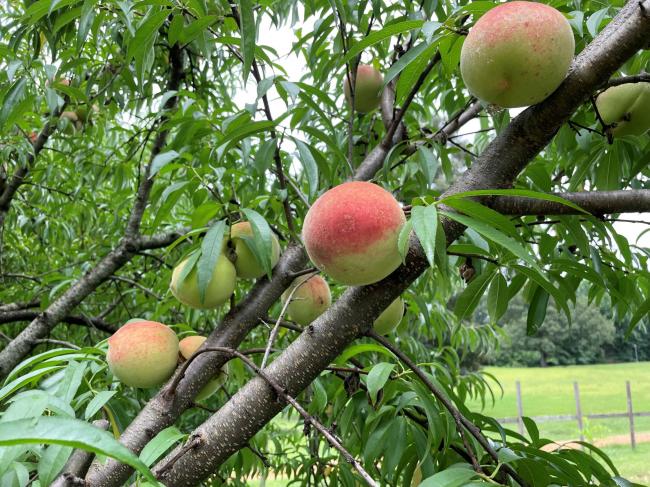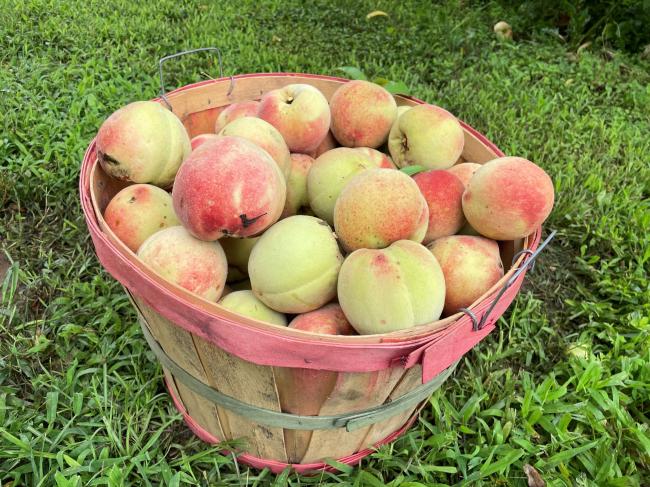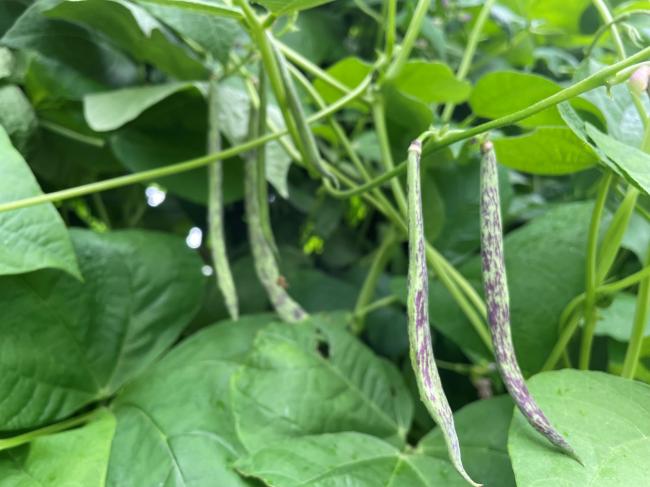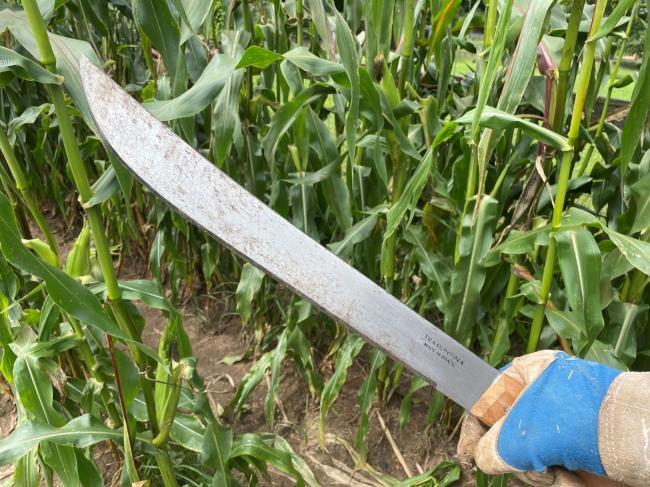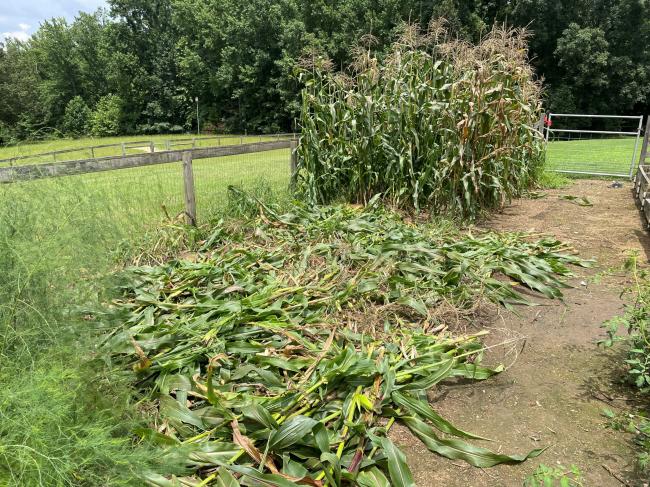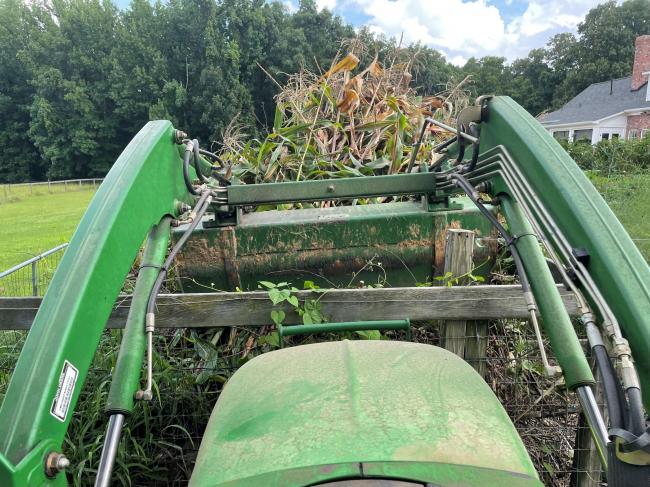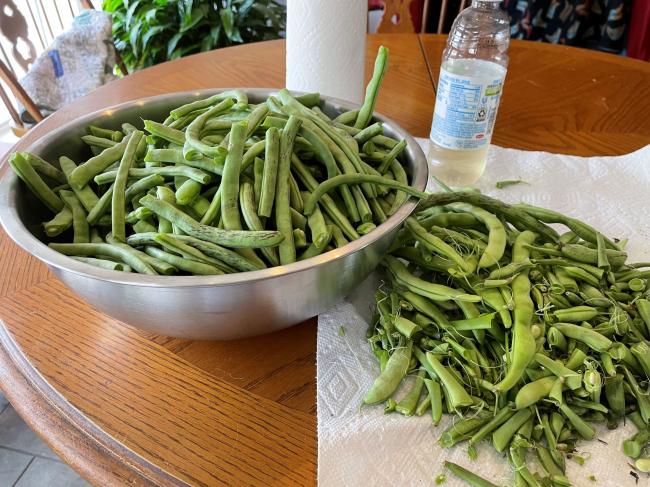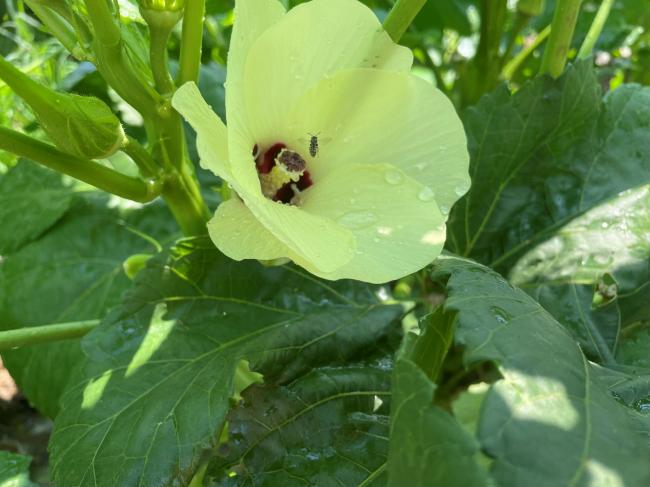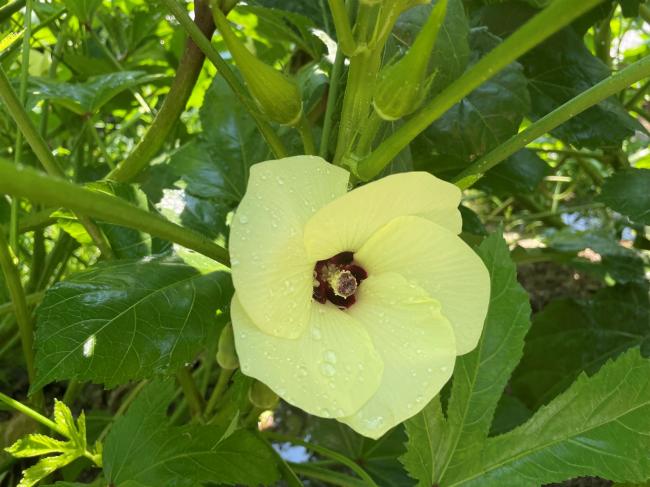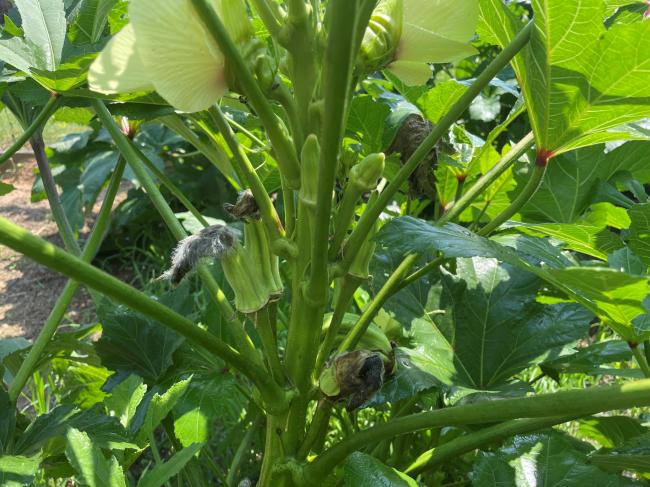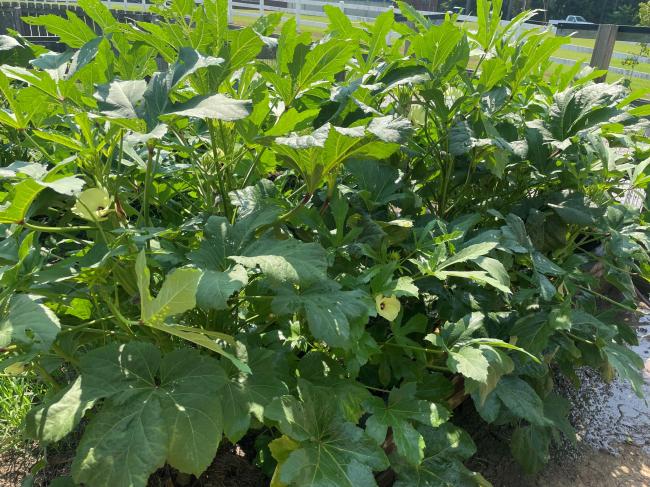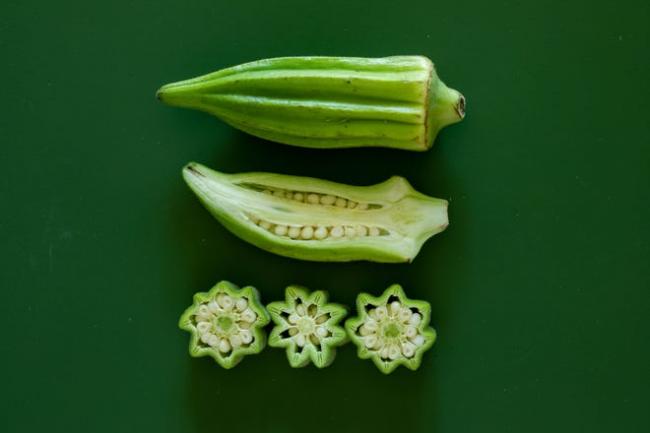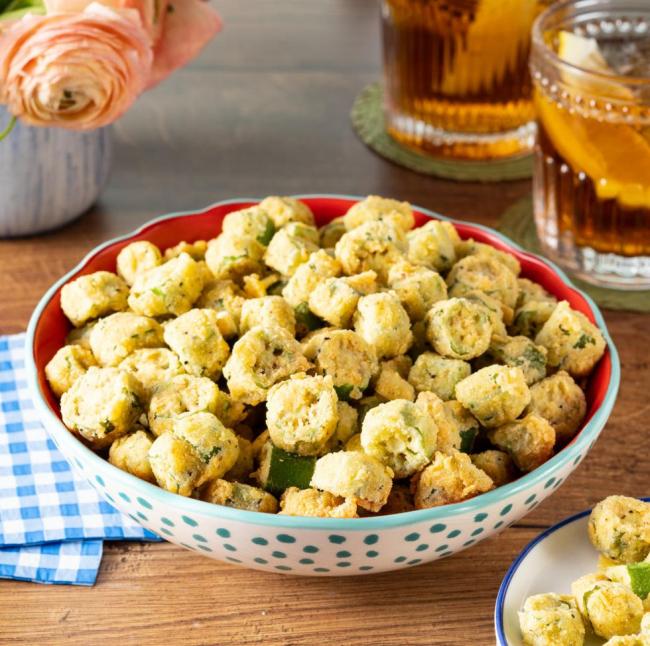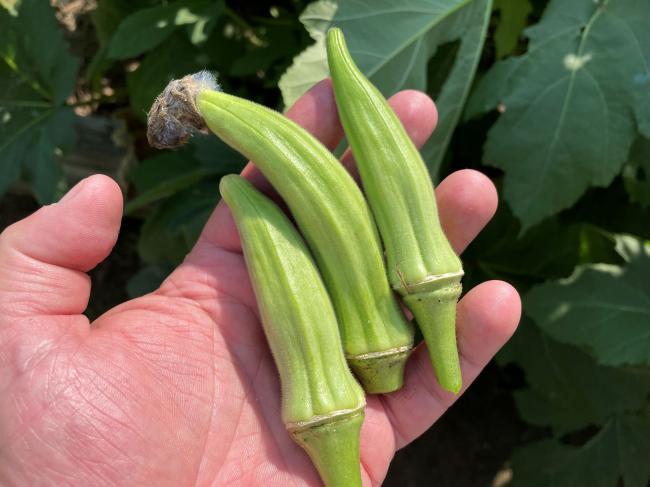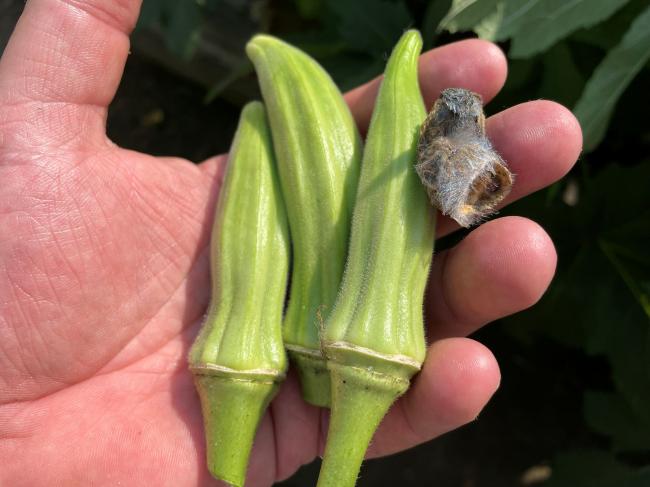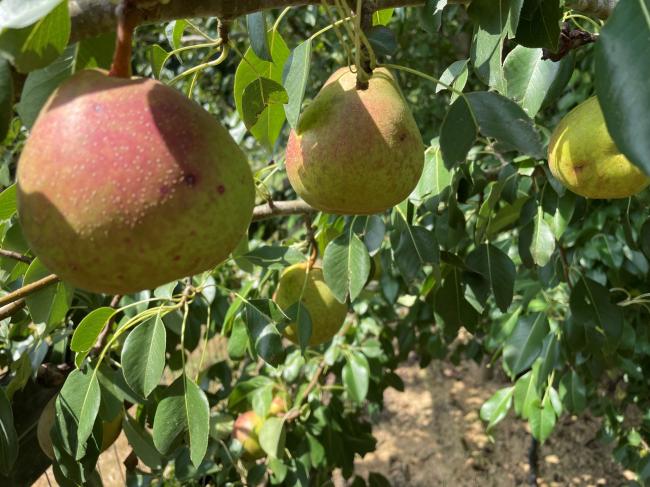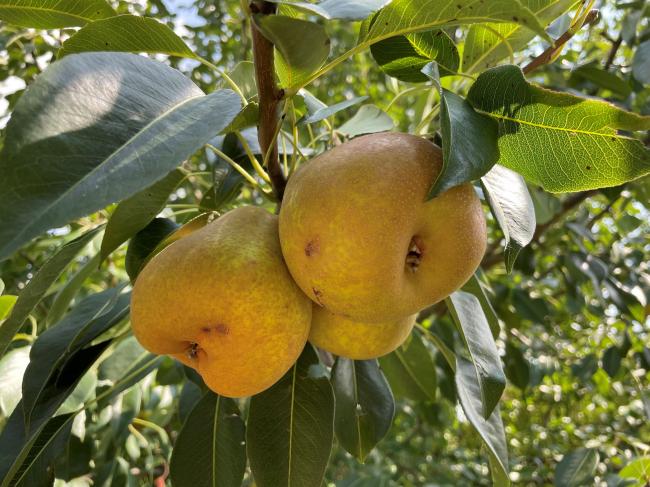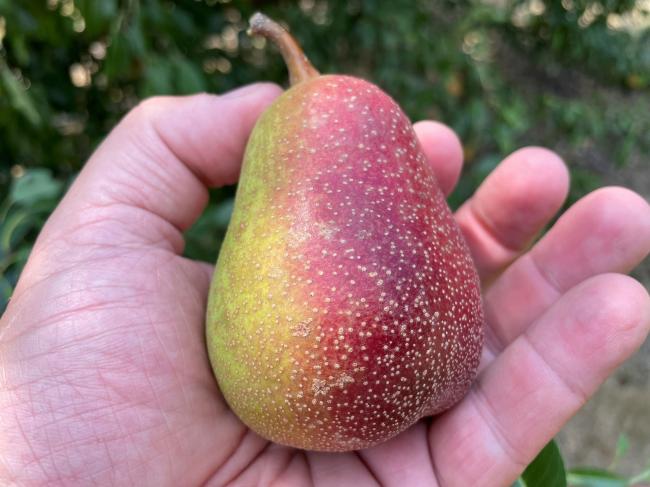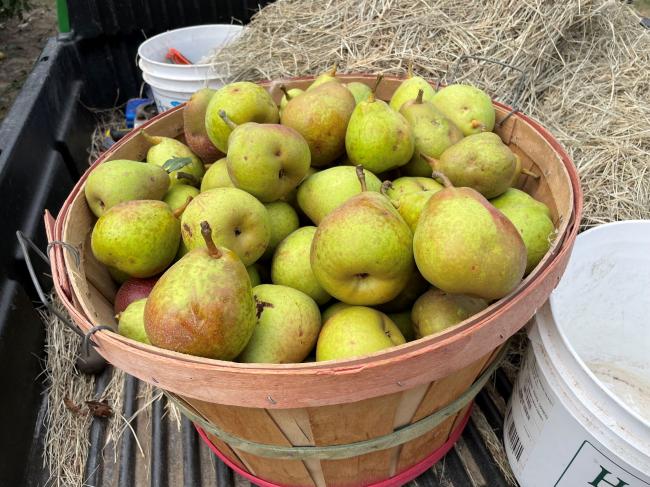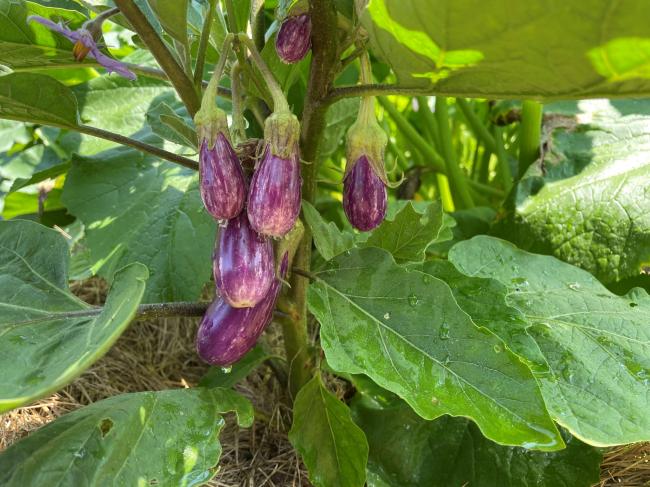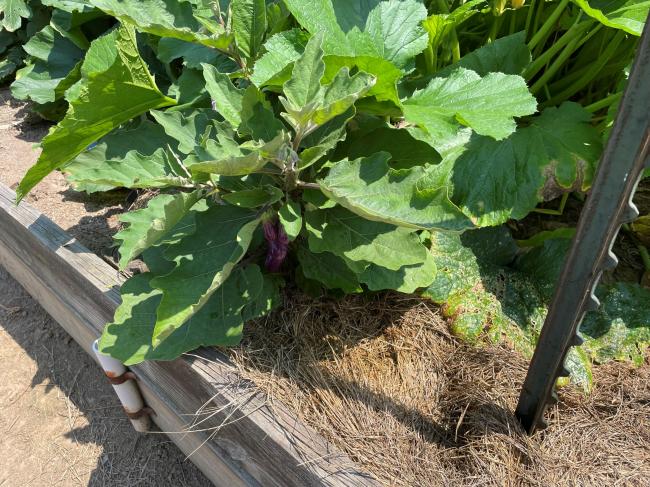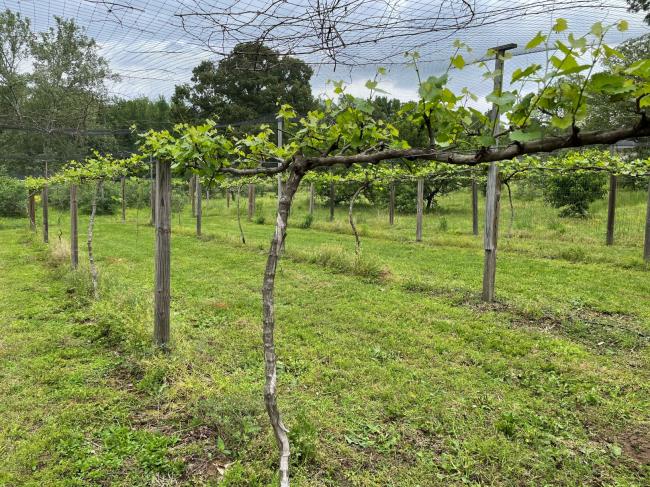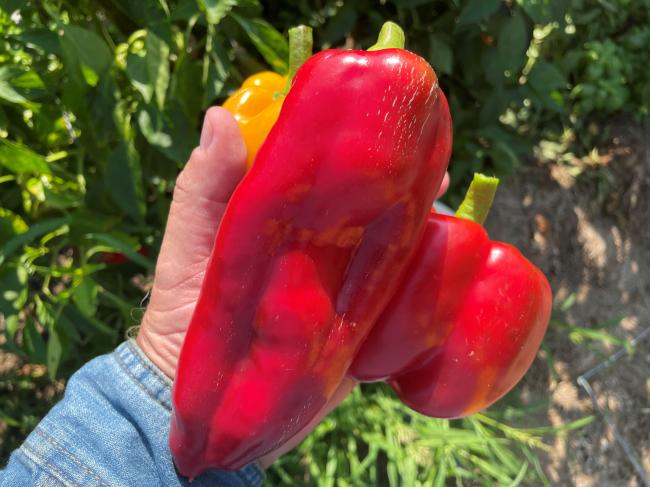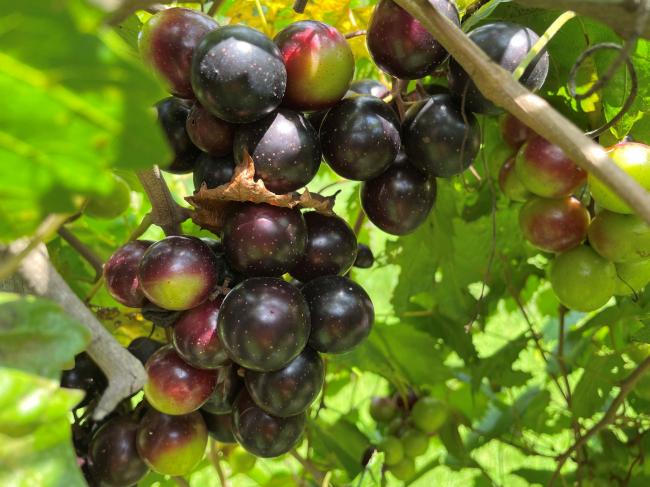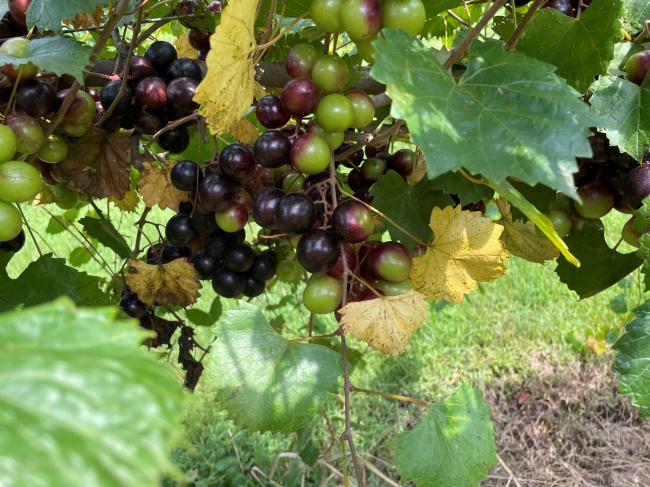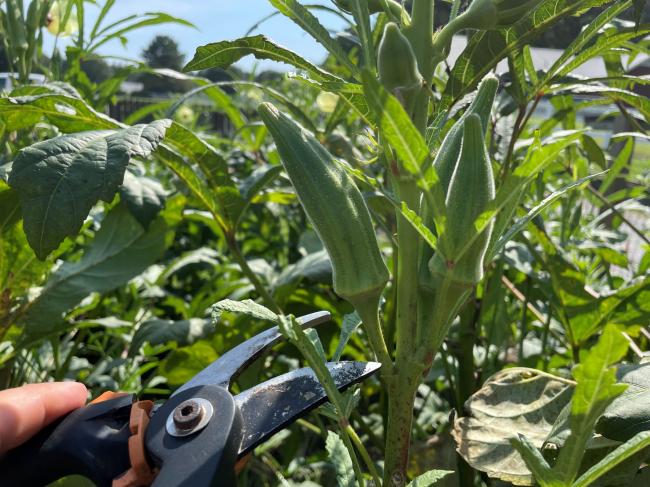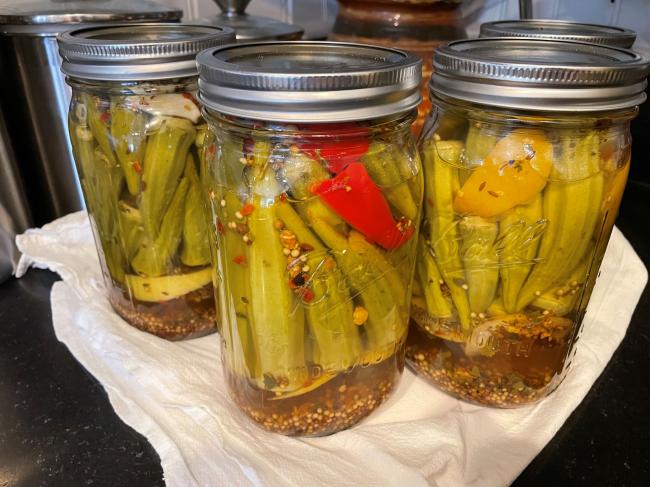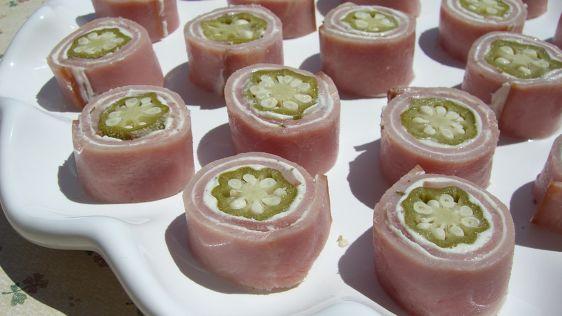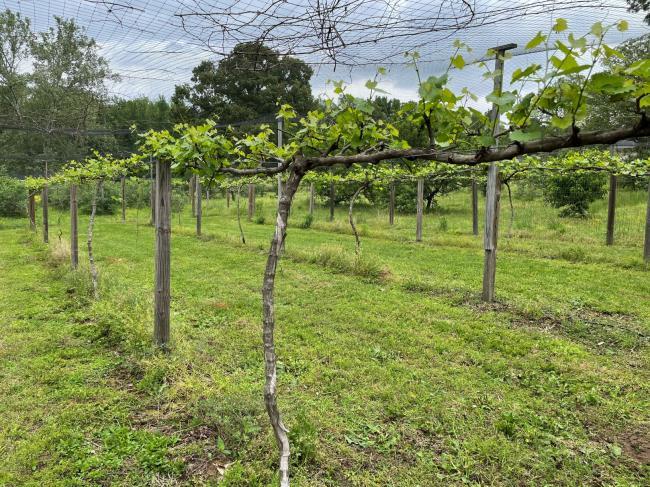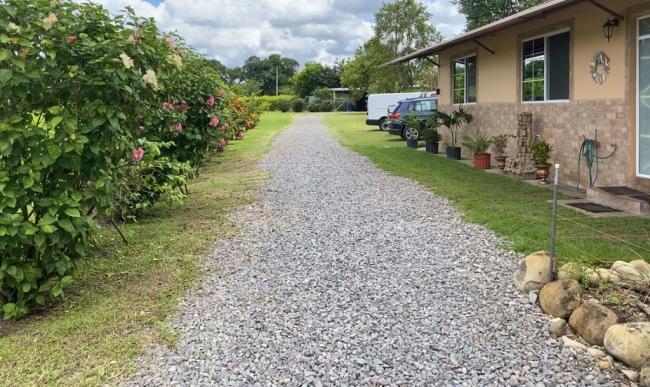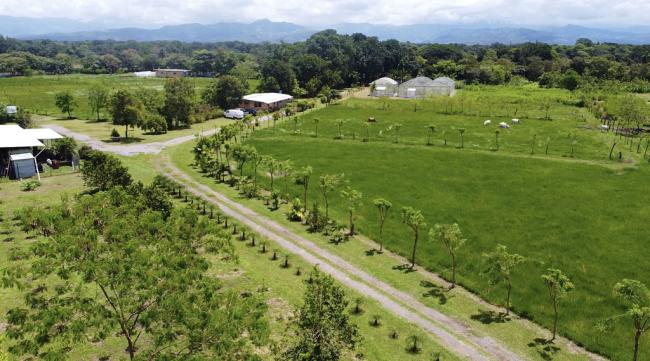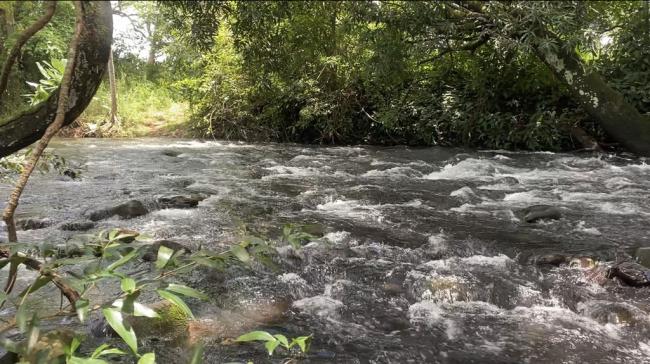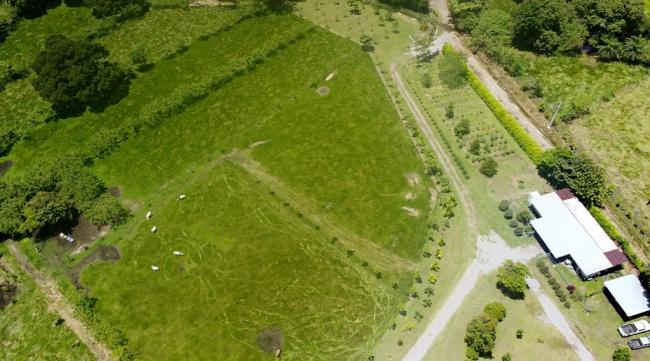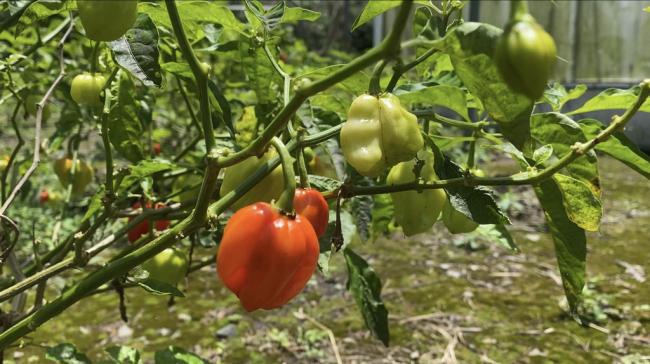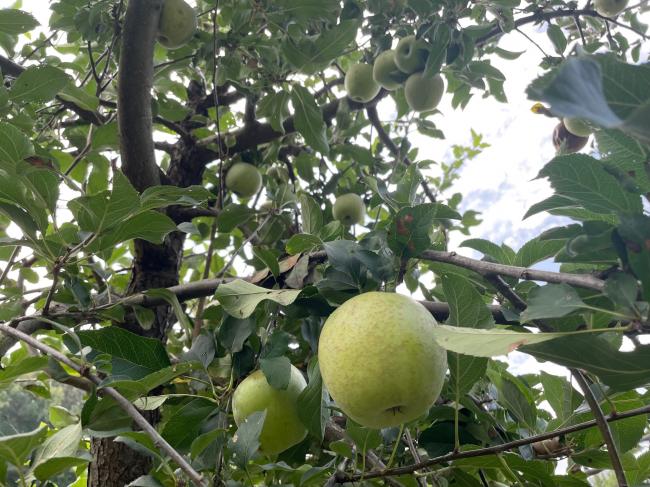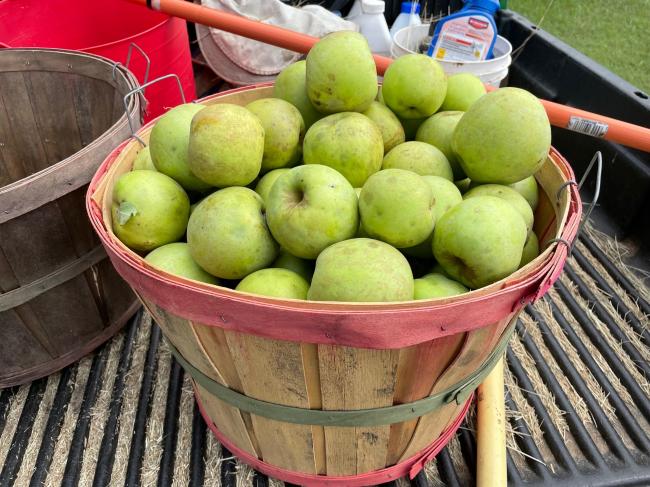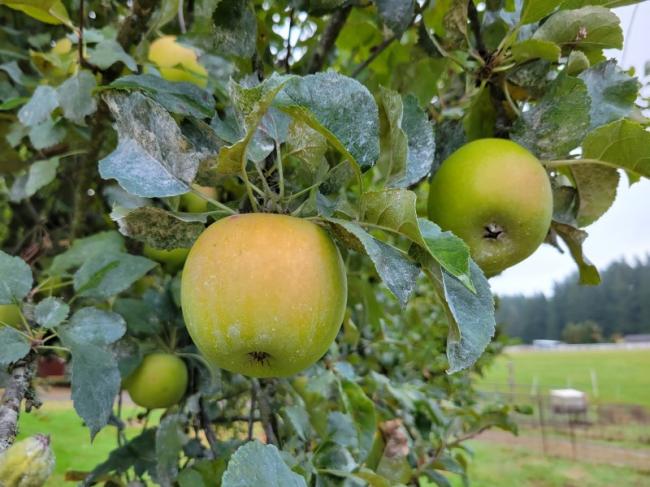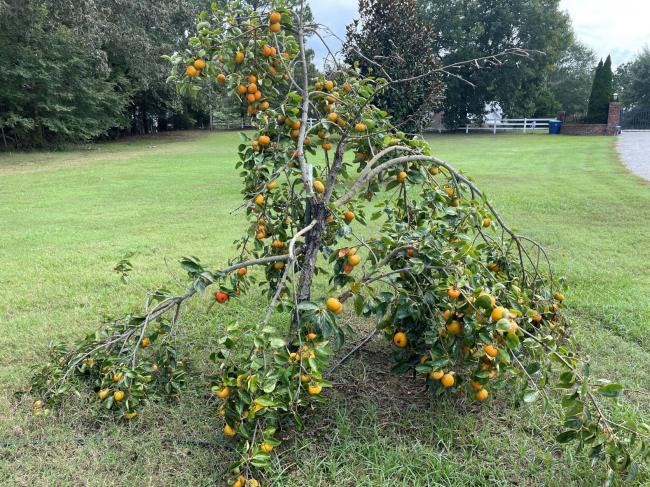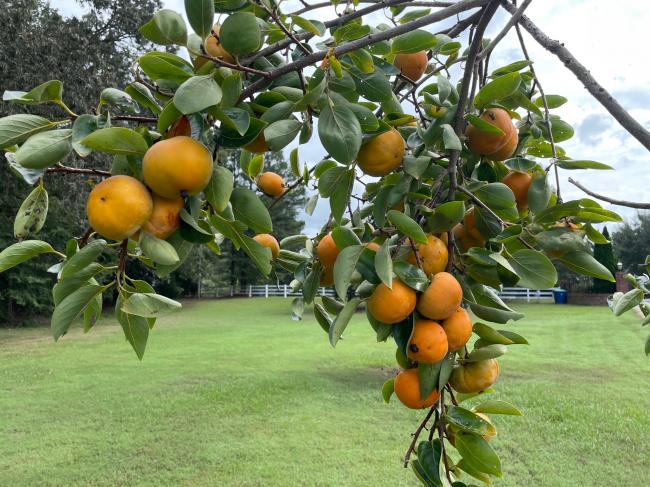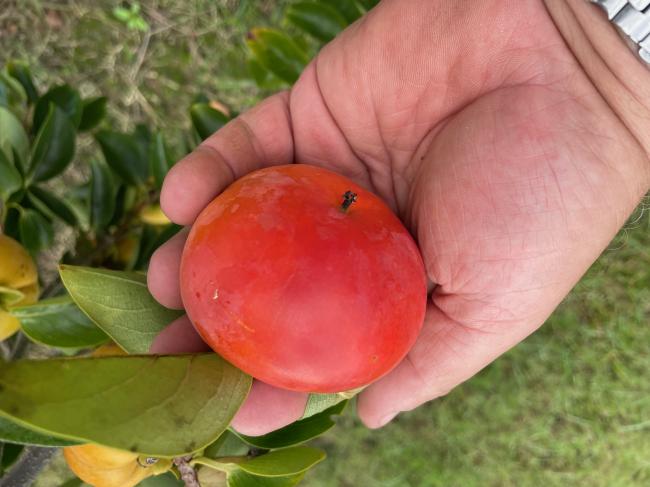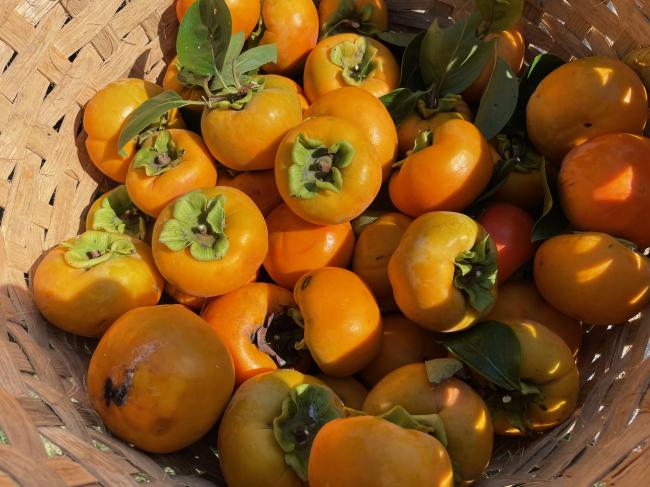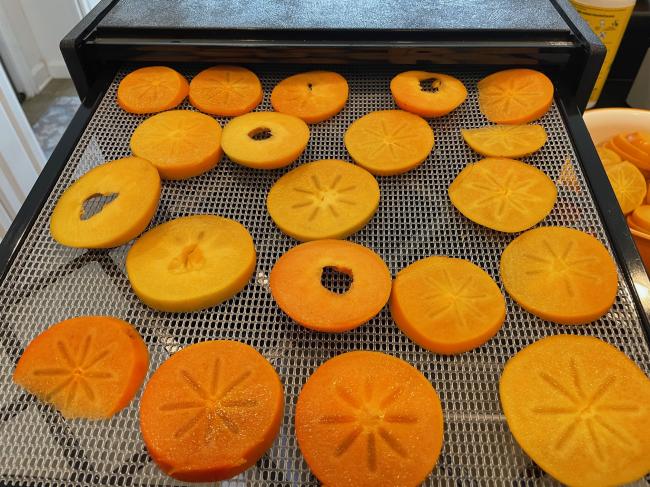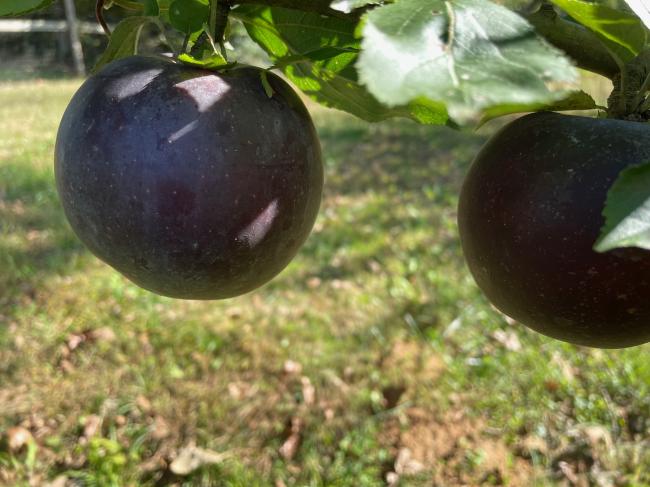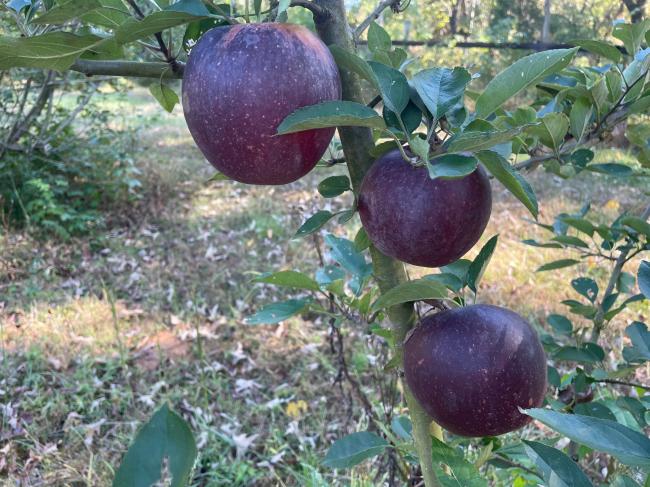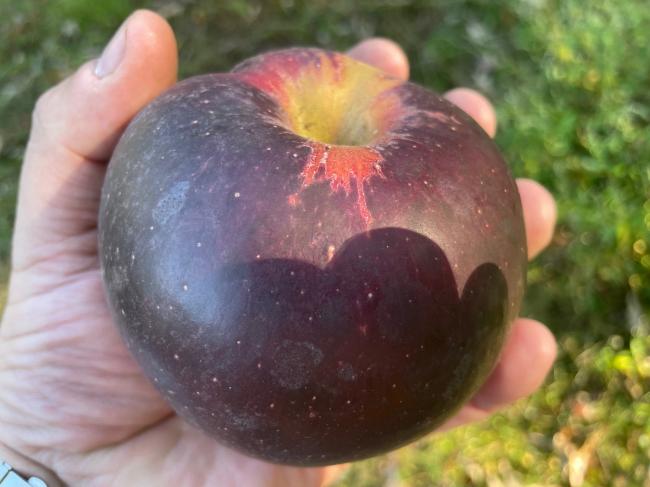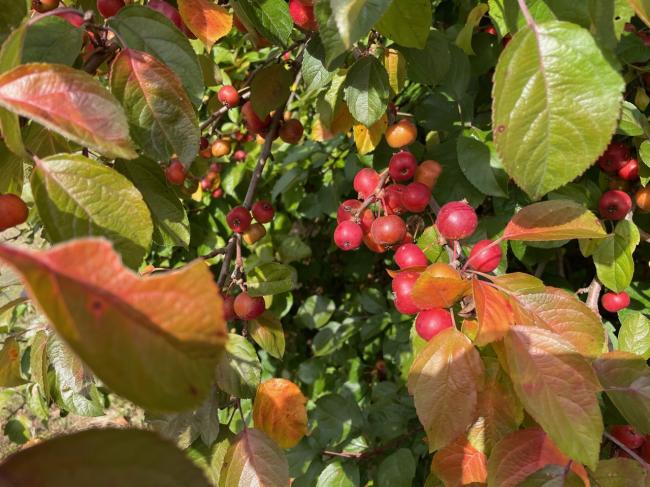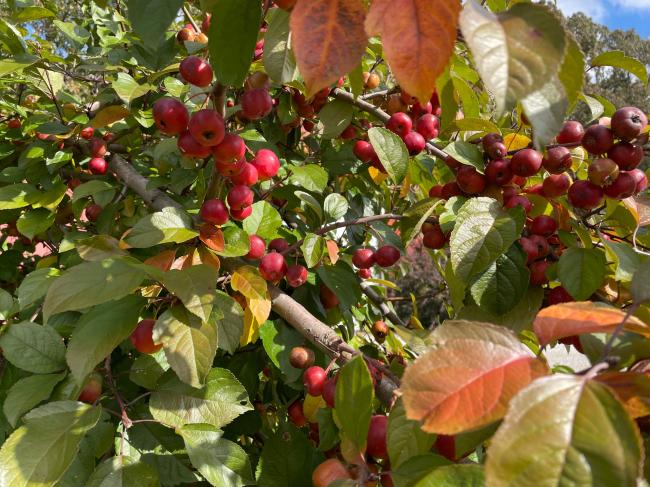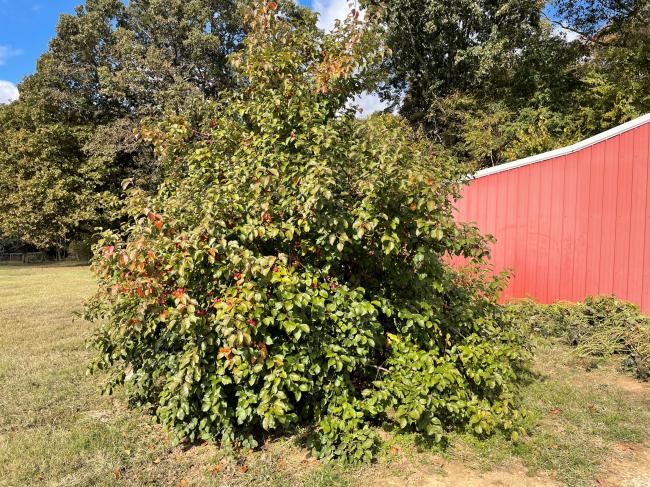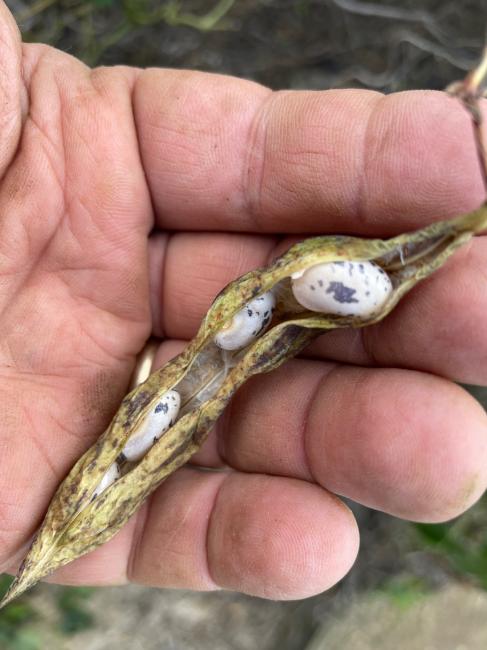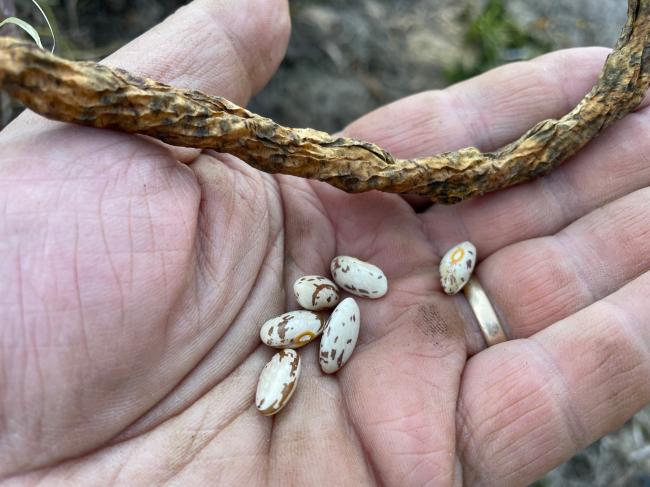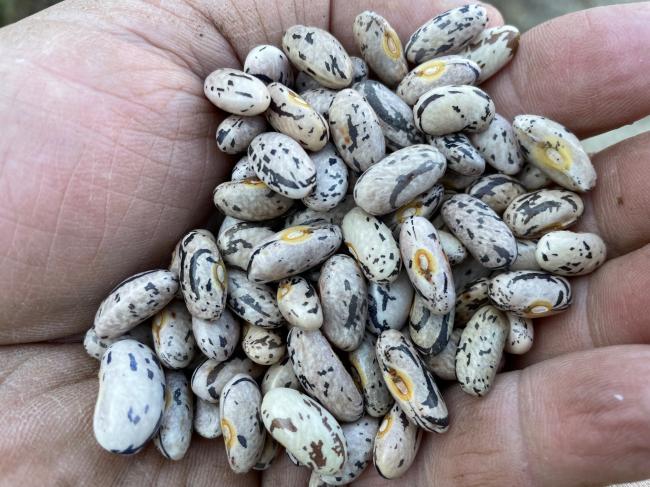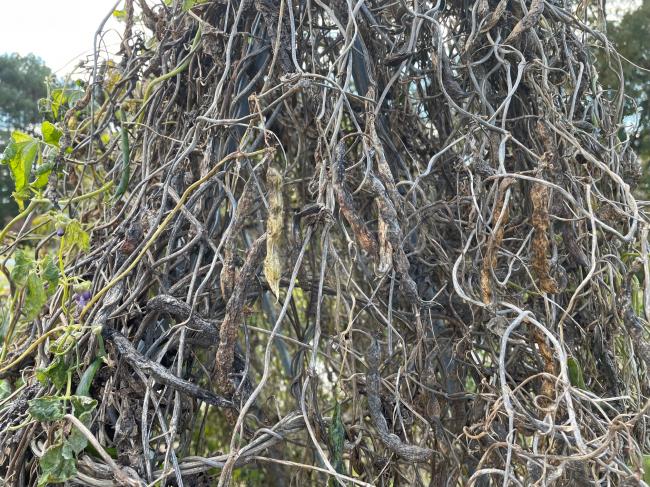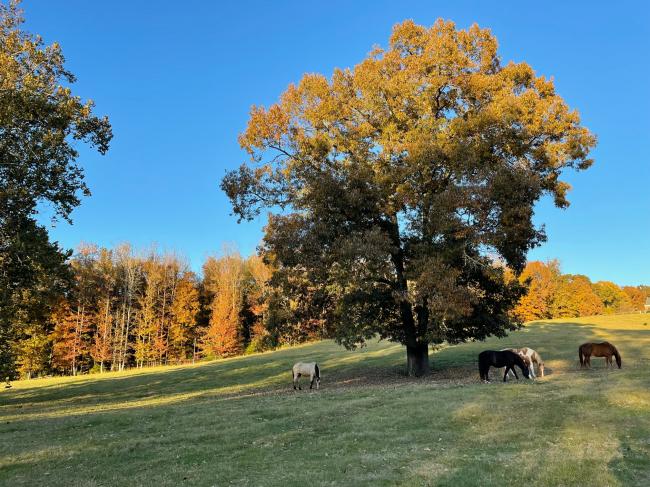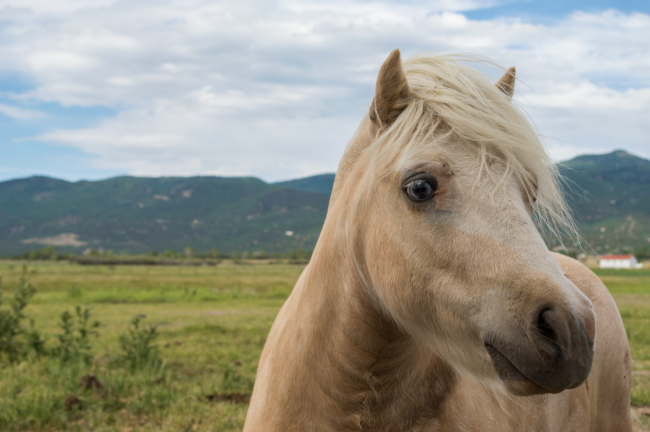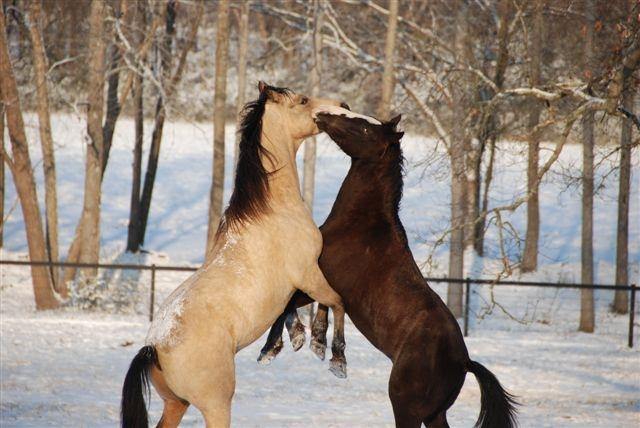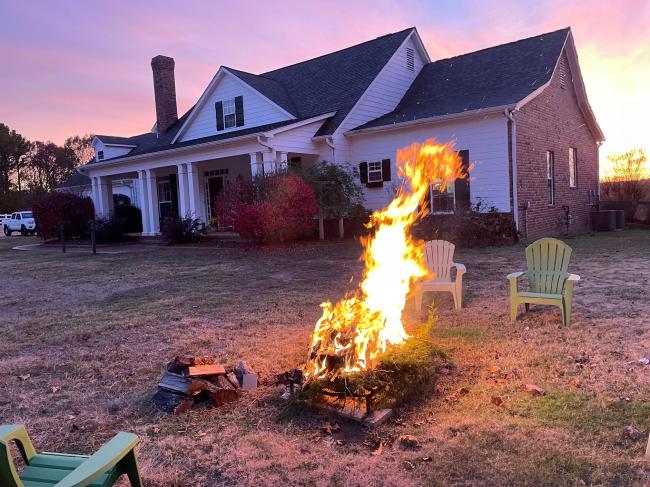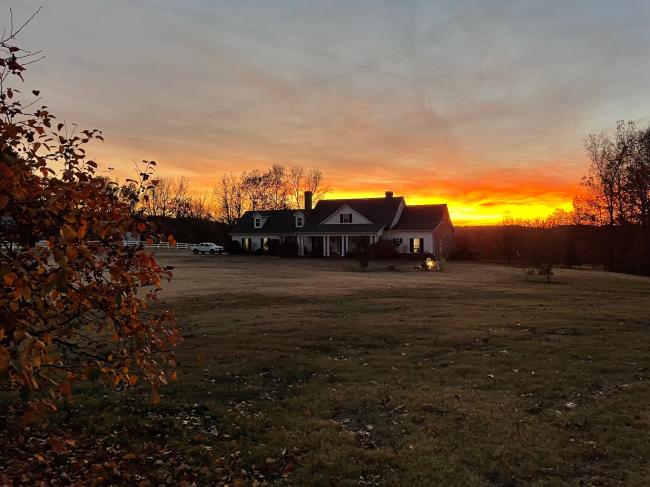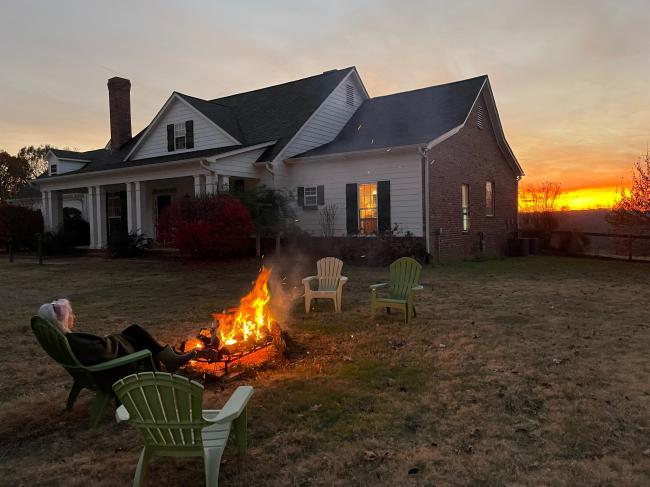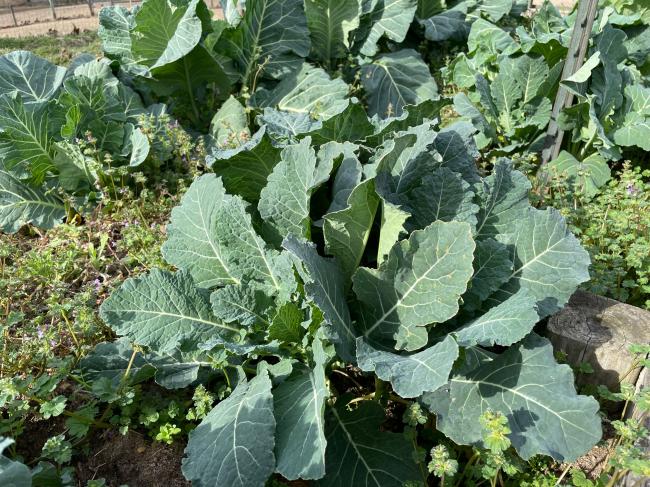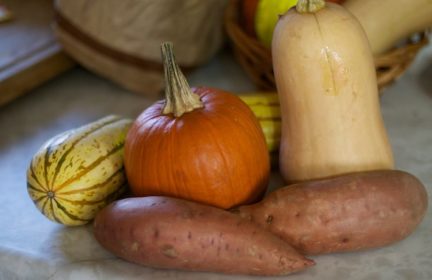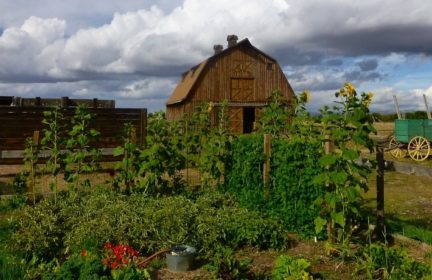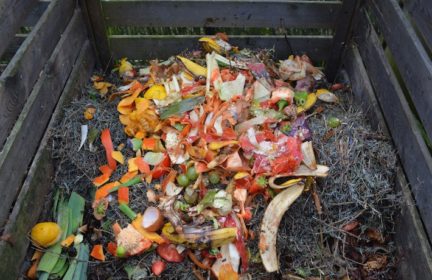Life on Redneck’s homestead
I figured I’d create a new discussion topic, where I can post pics of what goes on around the homestead, as opposed to posting a lot of individual topics as I’ve done in the past. I have 20 rural acres in northern Mississippi with most in yards & pastures. I have a smallish garden in the back yard and an orchard in my upper pasture. In my bottom pasture I have around a 1 acre pond with grain fed catfish. As a prepper, my intent is to become self sufficient during a severe crisis. With my small garden, it provides my wife & me with all the fresh veggies we can eat thru the year. I test different varieties to find the best ones for my area, and then store large quantities of that seed. Fruit & nut trees take too long to reach bearing age, so you can’t wait for a crisis to start them. Thus I have much more fruit that I can currently use, however when I retire in a couple of years, I probably will sell it a farmers markets.
So today my main chores, after grooming horses, are to turn on the drip irrigation in the blueberry patch & in the muscadine grapes, spray the apples & peaches in the orchard & to drag the horse paddock with the chain harrow. Here I’m filling my 50 gallon sprayer at my upper barn, which is in my front yard. That is a crabapple finishing blooming out front. Today I’m spraying myclobutanil fungicide (concentrated version of Immunox available at hardware stores) plus a bactericide to fight fire blight.
I have other fruit & nut trees in my front yard, such as Asian persimmons, pecans, apples & pears. Here is a pear in the side yard. Can’t really see here but it is loaded with baby pears. The pears that come off this tree are absolutely amazing. I also have climbing roses in multiple locations out front that also get sprayed.
Now headed down to the orchard. The house & front yard are up on top of a hill. I’m entering what I call my upper pasture. The orchard, paddock & horse barn are to the left. In the bottom is my lower pasture, with the catfish pond to the right. The little group of trees behind the pond is actually a large berm. My metal targets are in front of that berm & that is my shooting range. The blueberries & muscadines are at the very bottom of the orchard, next to the paddock. I enter both thru gates in the paddock.
Turned on the drip irrigation to the blueberries & muscadines and verified there are no leaks or busted joints from the winter cold. Here are the blueberries. They are so danged easy to grow & put out a tremendous amount of food. Note the bird netting, which also covers my muscadines.
Not much to see here, but this is the muscadine area. There are three trellises using high tension wire. The muscadines are just starting to leaf out.
-
Comments (369)
-
Bob - April 25, 2021
Good afternoon Redneck,
Beautiful setup ! This is not a place to evacuate from unless a main battle tank pushes you out.
Ref the tractor and the pictured elsewhere Gateraid Gocart at range, do you do your own maintenance? Do the horses have a trailer arrangement in case of vet care or are other arrangements in place ?
I’m asking this to gauge if I spend too much vehicle time and effort here and just wondering for my rudimentary comparison.
I am now in the mood for some pears !
-
RedneckContributor - April 25, 2021
This is my Alamo. I won’t leave here.
No I don’t do my own maintenance. Well, I do change oil & filters & can remove blades for sharpening but otherwise, I call John Deere, and they pick up my units. I’ve had a 2 horse trailer but I gave it to one of our friends down here, who is a vet. We don’t travel with the horses anymore so it was not being used. If I needed one, they would bring it. Our vet office is just 2 miles away. They charge per mile for farm visits, so I pay next to nothing for them to come to me.
Seriously, those pears are just amazing. Well actually, everything picked fresh from a tree is to die for. You can’t imagine what a peach straight from a tree tastes like. The apples I grow have flavors you never find in stores. They ain’t pretty like store bought but they sure taste better. I spray as little as possible and that is a fraction of the spray put on store bought apples.
-
Bob - April 25, 2021
Good afternoon Redneck,
Appreciate this information. Thank you.
Understand; I’ve had fruit straight from the tree. I guess the comparison is a sun lamp to real rays of the sun.
-
LBV - April 25, 2021
Also, store bought fruit tends to be picked unripe as ripe fruit bruises easily and doesn’t transport as well. Flavour and nutrition is nowhere near the top of the list when considering what varieties to sell.
-
RedneckContributor - April 26, 2021
Much store bought fruit has been in storage up to a year.
My biggest gripe with store bought apples is that they look too perfect. They have no flaws. That is not natural. There is only one way to get apples that look like that & that is by spraying massive amounts of chemicals on the trees & fruit.
-
-
UbiqueContributor - April 25, 2021
Redneck,
That picture where you’re driving down into the lower pasture with the horses is absolutely beautiful. It’s like a postcard.
What you and Mrs. Redneck have built is an inspiration for anyone who wants to prep and build a lovely quality of life on their own homestead.
I am so glad you started a separate thread to post the activities around your acreage. It is a bright spot in my day to see these posts. You bring a lot to the prepping table here and I am grateful to you for taking the time out of what must be a very busy life to do it.
Thank you and I look forward to following more of your adventures on the acreage.
p.s. I wanted to put bird netting up over my garden this year. I like how yours looks and I’m going forward with it this year for sure.
-
RedneckContributor - April 25, 2021
Smaller birds can still get thru that netting but that is OK. I don’t mind sharing. Its primary purpose was the keep hawks away from my chickens, back when I raised them. The gals used to spend their days in the blueberries & muscadines.
-
CR - May 7, 2021
That is truly a beautiful and productive set up! Wonderful to see a true small farm nowadays. I have had a lot of trouble with hawks after my chickens too, but most bird netting I see is flimsy stuff! I just hang pie plates in trees as a deterrent. What did you use here that holds up well? We have fierce sun….
-
RedneckContributor - May 7, 2021
Thanks for the kind words! Can’t remember the brand that I got but I got it on Amazon. Something like this. Mine has held up real well thru the years. We too have fierce sun in the summers.
-
CR - May 7, 2021
Thanks Redneck! I’ll check it out. Looks kinda like tennis netting from the pic.
-
RedneckContributor - May 7, 2021
Yes it is. Mine will let small birds thru but will certainly keep hawks out. Dumbest birds know to man are doves. They will get inside but can’t figure out how to get out. They will beat themselves to death flying into the net trying to get out. How the heck did they manage to get in?
-
Robert LarsonContributor - May 7, 2021
On the bright side, if you get sick of catfish during SHTF you have plenty of fresh doves that are already caught
-
RedneckContributor - May 7, 2021
So true but very little meat. I hunted many a dove years back and they are quite the challenge to hit on windy days. Fast & stupid. 🙂
-
-
RedneckContributor - April 25, 2021
Late each afternoon, I bring the horses in to be fed & then keep them locked in the paddock overnight. Otherwise, they eat too much grass. After that, my dog Stanley & I head over to the pond to feed the catfish. It is not unusual to see a bald eagle and just saw one again. We have a nesting pair that live close by & they figured out my catfish pond is a mighty fine hunting area. Every few days they harvest a 20+ pound catfish. Today, one is on the hunt. He/she is up in that tree overlooking the pond. It was down lower on the other side of the pond initially but I spooked it driving right underneath it.
-
UbiqueContributor - April 26, 2021
That’s a healthy looking bald eagle with all those yummy grain fed catfish to dine on. They are beautiful birds.
I like the bench you have set up by your pond.
-
RedneckContributor - April 26, 2021
They appear to be very healthy and I would think, this time of year, they are also feeding their young in the nest. Last year I saw around 5 of their immature babes that grew up. They don’t fully get their white markings until they are 4-5 years old.
That bench is my wife’s favorite spot to chill out after spending 4 days & nights caring for her mom & aunt. I’ll be planting some yellow flag water irises this next week, in the water in front of that bench. They can handle being 6 inches or so underwater. That helps keep the weeds away. They can be invasive but I’ve grown them before at another house.
-
UbiqueContributor - April 27, 2021
How nice that the eagles have a nice habitat there!
Also, you rock for pampering Mrs Redneck with a nice place and the yellow flag water irises for her to enjoy while she relaxes from caregiving. You are a kind person and very nice to your wife.
I didn’t know irises could be submerged/grow in water. Very interesting.
-
RedneckContributor - April 27, 2021
Happy wife… happy life.
Yes, there is a whole classification of plants called marginal pond plants. They can live with their roots submerged and constantly wet. You mainly see them in ornamental water gardens but I’ve had them on the margins of my previous pond before. Getting ready to order some pickerel rush. I love the purple flowers.
-
UbiqueContributor - April 29, 2021
Those are beautiful flowers. The yellow and purple will look very nice together with the green. They remind me of the yellow and purple irises that grew in our one room school yard when I went to school there.
-
-
Olly Wright - April 26, 2021
Love all the pictures Redneck!
Can I ask a few questions? What can you do with crabapples? Aren’t they supposed to be small and bitter?
And then with your blueberries do you have to weed around the base of the bushes so that the weeds don’t take all the nutrients? What other blueberry growing tips do you have? I’d love to start some berry bushes this year.
-
LBV - April 26, 2021
Crab apples are a good pollinator for other apples. Traditionally in NZ you make crabapple jelly. You could also make cider depending on the flavour of the crab apples
-
Olly Wright - April 27, 2021
Thank you LBV!
-
RedneckContributor - April 26, 2021
Many apple growers, me included, plant crabapples in amongst their apples. They are incredible pollinators and yes, a crabapple can pollinate regular apples. They bloom heavier than apples & the blooms stay longer. Crabapples are loaded with natural pectin, and you can cook them down for your own homemade pectin. Crabapple jelly tastes great, because you add some sugar but you don’t need pectin… its already there. Crabapples are very commonly used in making apple cider. Nothing worse than a cider that is too sweet. Crabapples add a nice backbone to a cider… not unlike bitter oak tannins added to fine wines.
Most apple cider back in the old days was made from crabapples. That is the natural form of apples actually. If you plant a seed from an eating apple, it will the vast majority of the time make a crabapple. Not fit for eating but fine for making cider. Think of Johnny Appleseed, John Chapman. People imagine he was planting all these apples for others to eat. Nope, he was planting seed to be used for cider. That plus, he was doing so to meet a legal requirement for possessing this frontier land. Frontier law allowed people to lay claim to land through development of a permanent homestead. Such a claim could be made by planting 50 apple trees. So in his travels through Pennsylvania, Ohio, and Illinois, Chapman would plant swaths of seeds to begin an orchard, then sell them to settlers once the land had grown bountiful.
Yes, especially when the blueberries are young you will need to weed, or possibly mulch heavily. Pine straw works well as it is acidic. Once the plants get mature, it is harder for weeds to get started underneath. But still, maybe twice a year I’ll take out the worst weeds & small trees. Don’t want to use a weedeater, as you can easily damage the trunks. Another reason is each year, the blueberries send up some new shoots and you don’t want to cut them.
Blueberries like acidic soil. Our soil leans that way a bit naturally but every so often I check the PH of the soil & when needed, throw some sulfur around the plants. I get mine at the coop & it is pellets that are easy to handle. What happens, as the pellets get wet, they release sulfuric acid slowly into the soil. I actually treated mine last fall. I have a Kelway PH meter & it is so helpful… not just for blueberries but for all plants.
-
Olly Wright - April 27, 2021
Thanks for the answer redneck. I love how all plants seem to have a purpose and something unique about them. I would have thought that crabapples were junk apples, or the weed of the apple world, but looks like there is way more to this little fruit.
That is an interesting background on Johnny Appleseed.
I know you don’t like store bought apples, but have you ever tried a Cosmic Crisp apple? I highly recommend you at least try one next time you are at the store. It is a recently created apple and is a mix of the red delicious and honey crisp.
While not my favorite, it was fun to at least try it and see how people might have liked it.
One more question… Two weeks ago I saw a blog post on here about some soil testers. https://theprepared.com/blog/how-to-use-a-rapitest-at-home-soil-test-to-figure-out-what-your-garden-needs/
I never knew how much that PH, and other levels in your soil had to do with the growth of your garden. Thank you Josh Centers for teaching me about that. I’m going to pick up a set of these and test my soil and see what I need to add. But with with your above picture redneck of that Kelway PH meter, it looks like I would want to use that because from the picture it looks like you just stick it in the ground and it tells the PH. Much easier, quicker, and reuseable than these little pills for testing PH. Is it really just that easy, just stick in the ground and read?
-
UbiqueContributor - April 27, 2021
Great Johnny Appleseed store and info on homesteading. I learned something new today. Also thank you for the kelway soil pHD info. I need to get one asap.
-
RedneckContributor - April 27, 2021
Yes, the meter is that easy. Stick it in the ground & read the meter. Maybe I’m just lazy but I never test for other soil nutrients. I can tell by looking at them when they need nitrogen, phosphorous & potassium. I know growing crops depletes those so I know to add some 13-13-13 fertilizer during the growing season. Gotta be careful adding it to young plants as you can burn them. But soil PH is hard to see. You need to test it.
It is really critical to match your soil PH to what a given plant needs. Your soil PH affects the plant’s ability to take up nutrients. With the soil PH wrong, a plant won’t take up nutrients properly, even if you fertilize. Around here, our soils are a bit acidic so farmers lime their fields to increase the PH & allow that expensive fertilizer to be used by the grasses. If a field has a lot of sage grass, that tells you that field needs to be limed.
I’ve never tried that variety & don’t recall seeing it at the stores… but I don’t shop for apples. My two favorite apples, by far are Goldrush, a modern disease resistant apple and Ashmead’s Kernel. Ashmead’s Kernel is an old English russet apple & considered one of the ugliest apples. But its flavor is so complex and unique. Everyone who has tasted mine just freak out. Here is a pic.
-
UbiqueContributor - April 29, 2021
Thank you for the tips on the soil and meter. I have never used one before so this will be a learning curve. I am reusing soil this year from a berm in the front yard that was lowered last year. It was screened and looks to be decent soil. I am going to add compost again, but maybe go a bit easier on how much. I think that could be why I had radish and beet tops but no root.
-
RedneckContributor - April 29, 2021
When I put plants into my garden, I scoop out a hole 3 times bigger than needed, fill with potting soil that has a built in fertilizer, and then set the plant. As good as my garden soil is, I’ve found I get much better results in using some potting soil. Seems to just help the young plants get started.
-
UbiqueContributor - April 29, 2021
I use potting soil with fertilizer also for my flowers. This year I’m adding some bales of it to all the raised bed planters plus the area in the very back where I am growng a wildflower meadow (about 17 x 17′).
I used fish fertilizer and it worked nicely for the veg and flowers, althougth for the tomatoes I used Miracle gro for tomatoes.
Ashmead’s Kernel is a very interesting looking apple. I have never seen one before. Thank you for posting that photo and info on it.
If I can get more room to grow, I will be planting apples and crabapples (the jelly is the best) and this info will really help out. Thank you.
-
RedneckContributor - April 29, 2021
I don’t use fancy fertilizers. I use a balanced triple 13 from the coop on everything.
-
Olly Wright - May 7, 2021
You are right, that is an ugly apple. Not something you would see in the grocery store huh? It’s all about the biggest and shiniest apples there.
I’m going to check out some farmers markets this year because I want to try out some new variety of apples and pick my favorite for my future orchard.
-
RedneckContributor - May 7, 2021
You would see it & almost every apple imaginable at the Franklin County Cider Days. My wife & I went a few years back & it was amazing. Enjoyed the trip to Boston too. It was well worth the long trip. There were hundreds of ciders to taste, great food, orchard tours where you got to watch them press the apples. All sorts of apples are available for purchase too.
-
pint of beer - May 8, 2021
while many consider the red delicious to be bland and a cheap unflavorful apple, i have fond memories of it from my youth and it’s still my favorite
-
RedneckContributor - April 27, 2021
Some people assume Johnny Appleseed was some made up character, but his story is real. Granted, he was an odd character but also was a shrewd businessman. He understood the requirements to be granted a homestead & free land and planted apples accordingly.
-
UbiqueContributor - April 29, 2021
I think he was a shrewd businessman also. His story is very interesting and makes one wonder how many others like him exist in history. People that were ingenious in their methods.
-
-
RedneckContributor - May 1, 2021
Got back from work around noon and got busy in the garden. Cleaned the bed up a bit and then planted my tomatoes. I find Park’s Whopper works well for me. Snow peas are in the background & are now blooming. Should have some tasty pea pods in a couple of weeks.
My corn came up about a week ago so today it was time to hoe the rows. Much easier if you get the grass & weeds while small. I grow G90 sweet corn which is a hybrid. Now if one was planting for self sufficiency you sure wouldn’t choose a hybrid but for now, I grow G90. It is sooooo good! But don’t worry. I have lots of open pollinated field corn seed in storage.
This time of year I have to pick asparagus every day. It grows so quick. Good thing we absolutely love it.
-
Olly Wright - May 1, 2021
You posting all these pictures of your garden and The Prepared posting all these articles the past few weeks on gardening is getting me pumped about this season!
Asparagus growing looks like someone is trying to pull a prank on how asparagus grows. It just doesn’t look right
-
RedneckContributor - May 1, 2021
Oh, that’s how it looks. The asparagus we eat is that shoot. It wants to grow tall and put out the fern like leaves you see. Last year I planted some new crowns, and those skinny shoots are from them. You don’t want to cut those skinny ones. Go ahead & let them go to fern & build up energy in the roots for next year. I keep picking till most of the shoots get skinny. That tells you it is time to leave them alone. Soon your whole bed will have ferns around 4′ tall.
When you order crowns, this is what they look like. Kinda weird to me. At the bottom of the pic, you can see where the shoots originate.
-
pint of beer - May 8, 2021
how often to you need to replace the boards of your raised beds?
-
RedneckContributor - May 8, 2021
Don’t really know. Those have been in the ground for 10 years and still doing fine.
-
-
RedneckContributor - May 1, 2021
A little discussion of growing bamboo. IMO, it is a great prepper resource if you have the proper location for it. It reproduces very rapidly for a 60 day period in the spring. You wouldn’t want to plant it next to your house or walkway. Mine is in the horse paddock, next to a cow pasture behind it. I had to fence it in because my horses in the paddock & the cows behind love to eat it. They would eat it all if given the chance. I put in 3 plants 3 years ago. The older and thus larger the underground rhizomes, the larger the plants (culms). So first year those plants grew to around 4′ tall. Second year new plants got around 8′ tall and then last year, new plants got around 15′ tall. When fully mature in around 10 more years, new plants should get 40′ – 50′ tall & around 3″ in diameter.
A bamboo plant (culm) only grows in that initial 60 day period. It will live for quite a few years but it will never get any taller on wider. So a giant bamboo that is 50′ tall, grew that 50′ in 60 days or so. I wanted to document the growth rate so I’m taking a picture of a new culm around once a week. It is at the edge of my patch and I’m guessing its rhizome is 2 years old. But it could be 3 years old looking at its diameter. Here is my smallish patch. You can see the new plants coming up.
Took this picture of out test plant 3 weeks ago, on 4-18. It is about a foot tall.
Here, a week later, on 4-25 the plant is around 5′ tall. It grew 4′ in a week.
Took this picture today, 5-1. It is now around 12′ tall, meaning it grew an additional 7′ in six days. It grew more than a foot a day.
-
Bob - May 2, 2021
Good morning Redneck,
Real good info and pictures. Thank you.
Yes, definitely, bamboo is a great prepper resource or just to know about it and it’s applicable uses for preppers.
Bamboo is one of my favorite woods although it’s deemed a grass.
For jungle survival, the green stalk section, when bended, can contain quality water. Survivalists must note not to drink any water in exposed sections of the yellow section since this is where mosquito larve dwells.
A few years ago, some ethnic Filipino in Canada researched brewing a bamboo beer.
I am now in the mood for a cigar and a bamboo beer.
-
Robert LarsonContributor - May 2, 2021
You got me reading about cold and high altitude bamboo now. It can be done!
-
RedneckContributor - May 2, 2021
Yes, it is a very versatile species. We think of it as being tropical, but as your articles states, there are varieties for cold climates.
-
RedneckContributor - May 9, 2021
This weeks picture. It has gotten so tall I’ve had to back up and get a different perspective. I’m guessing it is now around 17′ tall. The top of the fence is 5′ tall.
-
-
RedneckContributor - May 4, 2021
Cutting grass down in the blueberries & muscadines before a storm hits. The blueberries are looking great. Since I knew rain was coming, I threw out some 13-13-13 fertilizer earlier today.
Muscadines start much later. They are just now leafing out.
-
RedneckContributor - May 6, 2021
Late this afternoon, when putting feed in the horses’ stalls, I noticed something odd in the middle of Dante’s stall… about the size of a coffee saucer. Guess these birds hatched recently. I was afraid they wouldn’t move & when Dante entered his stall, he would squish them. So I was gonna put a muck bucket over them while he ate, but soon as I put the bucked down, they started flying to the side walls. I assume they were huddling for group warmth.
-
CR - May 7, 2021
So cute! It’s so fun to observe nature settling in among us! Most of the time at least…some of those predators and vermin are less charming.
-
RedneckContributor - May 7, 2021
They really are cute… and so tiny! But then again, the parents are real small too. It is not unusual to have 4-5 active nests at the same time down in the horse barn. I actually have nests all over the farm. We have a small porch at our office entry to the house & every year, barn swallows nest there… sometimes twice in the same year.
-
-
RedneckContributor - May 7, 2021
Snow peas are now ready for picking. Got enough today for a really nice chicken fried rice. Soon I’ll be picking much more as wherever you see a white bloom, that will be a pod. I really love edible pod peas and the snow peas are so tender & sweet!
-
Robert LarsonContributor - May 7, 2021
Look at this! Redneck is already harvesting and I just barely put my seeds in the ground yesterday.
Love snow peas. Our basset hound used to love eating the shells. She was a good girl.
-
RedneckContributor - May 7, 2021
Hope to put some yellow bell peppers in tomorrow plus plant my okra seed. I need to spray my apples then change to my turf sprayer. I have those danged yellow top weeds all over my pastures, so gonna hit one pasture and the front yard tomorrow with some GrazonNext broadleaf herbicide. That will be the only pasture spray for the whole year.
-
-
RedneckContributor - May 8, 2021
One of the few things I grow that isn’t edible are roses. I just love them. In our southern heat & humidity they can have disease & fungal issues… just like their apple kin. So when I spray apples, I go ahead and do my roses too. These climbing roses are out on the front fence line.
-
Alisa Felix - May 8, 2021
OMG! Those are so beautiful!
If I was a bumblebee I would live there.
-
RedneckContributor - May 8, 2021
HA. Well, we do have an exceedingly large population of bumblebees. Can’t recall seeing a lot of bees in the roses but the one thing they love most of all are blueberries when blooming.
-
LBV - May 9, 2021
Technically roses are edible and the hips can be a very good source of vitamin c. Rose hips were collected from hedgerows in England during WWII.
https://www.motherearthnews.com/real-food/seasonal-recipes/wild-rose-jelly-recipe-zm0z12aszhun
-
RedneckContributor - May 9, 2021
Yes, but my attempts at farming hopefully will keep me from eating things that are technically edible. 🙂
Many folks don’t know roses & apples are in the same family, Rosaceae. From Wikipedia:
The family Rosaceae includes herbs, shrubs, and trees. Most species are deciduous, but some are evergreen. They have a worldwide range, but are most diverse in the Northern Hemisphere.
Many economically important products come from the Rosaceae. It includes many edible fruits, such as apples, pears, quinces, apricots, plums, cherries, peaches, raspberries, loquats, strawberries, rose hips, hawthorns and almonds. It also includes popular ornamental trees and shrubs, such as roses, meadowsweets, photinias, firethorns, and rowans.
For those that don’t know, rosehips are the little fruit on roses after the petals fall. I think you can see the family resemblance of the apple.
-
LBV - May 10, 2021
I am looking at adding Scotch roses to my garden. The species pimpinellifolia, they have black hips. So I wonder it they have anthocyanin.
-
RedneckContributor - May 10, 2021
I would think so, since roses are related to apples. That is where most of an apple’s coloring comes from.
-
UbiqueContributor - May 10, 2021
LBV,
Wild roses are common in the prairies where I live. People made jelly and jam from them. We ate the petals as children on our way to school.
-
UbiqueContributor - May 10, 2021
Beautiful photos, the roses are gorgeous! Time to catch up – your gardening/grow photos are wonderful and give me hope that soon, we will be planting here. Currently -5 Celsius (feels like -8 with the wind chill). Weather is supposed to turn Tuesday and with low of +5 Celsius I can get my flowers out of the kitchen and into the prepared planters, and seed. Finally.
We have been super busy preparing everything and doing outdoor chores like lawn thatching done. We are both very sore, but at least it is with accomplishment. Today is lawn seeding and hoping that Tuesday’s forecast holds.
We are building a different sized planter with privacy screen for the North side of the back yard to accomodate berry bushes, like our native Saskatoons, raspberries and I hope, blackberries.
As an aside, I drove to two different cities on Friday and Saturday to get flowers and garden supplies like soil and compost. There are a lot shortages happening. I think more people were out on Saturday because Sunday they put in restrictions again due to third wave numbers spiking. We still have to fence the garden area, but thank goodness, we have the supplies here and a post pounder that is inbound and due to arrive in a day or so.
Keep posting updates – they give us Zone 3 people hope 🙂
-
RedneckContributor - May 10, 2021
Zone 3. That sucks! But I won’t be saying that this summer when we are sweltering in the 90s & very high humidity. But now is real nice. Highs in the 70s and lows around 50. In a few days we will see the 80s. Corn will love that.
My blackberries are blooming like crazy now. I love my wife’s blackberry jam. Planted 6 hills of okra yesterday before the storms hit. Didn’t get much else done outside between being worn out from being on the tractor most of Saturday and the afternoon rains.
Looking forward to see your planters & berries.
-
UbiqueContributor - May 11, 2021
Nice weather! Think of humidity as good for the complexion 🙂
I heard there were storms out your way – tornadoes? It was on our weather channel.
Tractor work is tiring. I remember long days as a child on one. No sun protection. Every farm family worked that way back then.
I intend to get photos once we get growing. Tonight it’s calling for 3 degrees, but I am hoping to get seeding and flowers outside the day after (if they don’t change the forecast – again.)
-
RedneckContributor - May 11, 2021
Yes, it seems the last few years, when it rains, it really storms. Every rain event is bright red on the radar. In this area, tornadoes are fairly common. Thankfully they don’t cover a lot of area, as opposed to the hurricanes they get down on the coast.
-
-
RedneckContributor - May 11, 2021
Today doing some garden work. I’m starting to put in my peppers. These are yellow & red sweet bell peppers. I’m putting them in a big bed that doesn’t have great soil, like in my raised beds. It is pretty much, just our regular old ground, which has clay & sand in it. Historically I grow corn here and sometimes the three sisters. Was going to put rice in here this year but changed my mind. So this bed will have 16 peppers and the rest of the space will be Fairy Tale eggplant. My peppers will be around 30″ apart with a basil planted between them. As I’ve stated elsewhere, I find basil is a great companion plant with peppers & tomatoes. With them growing in & amongst the peppers & tomatoes, I find I get a much better crop with much less disease. Added benefits are that we love to eat basil with our tomatoes and pesto is a gift from God. Also really attracts the pollinators.
Since this soil is not really great, I first dig a pretty big hole. These holes are about 16″ in diameter and I dig down about that deep. I then remove about half of the dirt from the hole & then chop up the remaining soil real loose, so that there are no big clods. Then I fill the hole with potting soil, with timed release fertilizer, and then mix all together. It is cheaper than using 100% potting soil but I think it makes for better plants, having a nice mix of potting soil, clay & sand. A technique I use is to berm up the removed soil on the sides. This helps later thru the year as I water with a hose. Keeps the water with the plants.
Also side dressed the corn with some 13-13-13 fertilizer. Corn is a heavy feeder, especially when you grow it dense. I will fertilize it several times until it starts to tassel. In the next week, I will come out & remove some plants so that the spacing between them is around 12″. I also transplanted a few corn plants. It is not unusual for there to be some gaps in your rows, where some seed didn’t germinate. If the gap is bigger than 12″, I’ll take my Hori Hori knife & dig a small deep hole where I want to fill. I then pick out a corn plant that is too tight & slice down around it, dig it up & transplant to the other location. If you do this at this size plant, I have real good results.
-
UbiqueContributor - May 11, 2021
Thank you for the great tips!
I learn a lot from you and can’t say thank you enough. My vegetable seed (including basil) is in the mail and should be in time to finally plant! I am so excited!
-
Olly Wright - May 11, 2021
I like your methods. Mixing potting soil and native soil, thinning out rows and filling gaps. Seem’s like you’ve done this before…
Do you have any problems with mice, voles, or other vermin?
-
RedneckContributor - May 11, 2021
Yep, done it once or twice. 🙂 My dogs dig up all the moles & voles that enter our backyard. Makes for a rutted backyard but they get the moles. Biggest issue I’ve had is rabbits sometimes getting in & eating my young shoots. Sometimes the rains will wash an area where they can get in under a gate.
-
-
RedneckContributor - May 11, 2021
Was cutting the orchard & thought I’d show you where the apples are now. This pretty little tree is about 4-5 years old & setting a nice crop of apples. This variety is Enterprise, and I recommend it for any home orchard. From Wikipedia:
Enterprise is a modern bred, late-ripening and attractive, red cultivar of domesticated apple with excellent fruit quality combined with disease resistance to scab, cedar apple rust, fire blight and some resistance to powdery mildew. The fruit is large and attractive and retains excellent fresh quality for up to six months at 1°C. Its moderate acidity at time of harvest mellows in storage, and it is best after one month of storage.[1]
Enterprise is the ninth apple cultivar to be developed by the PRI disease resistant apple breeding program and “PRI” is remarked in its name Enter”PRI”se. It has combined genetics of many selected breeds, including ancestry of McIntosh apple, Golden Delicious, Starking Delicious, Rome Beauty and the vf gene of Malus floribunda for scab resistance.
-
RedneckContributor - May 13, 2021
Was watering some of the garden this afternoon and took these pics of the row of thornless blackberries. They are covered in blooms from the very top to the very bottom… and on both sides. They are supported by 4 tension wires… 2 on the bottom & two up higher. This one row gives us all the blackberries we can eat.
-
Robert LarsonContributor - May 17, 2021
What do you think about this?
https://www.youtube.com/watch?v=FJXkLp9huus
I’d like to try it someday if I was able to get my garden up and going.
-
RedneckContributor - May 17, 2021
Robert, if only I had the time to play around with the food. 🙂
Actually it is rather cool. As a side note, the mold should also protect the fruit from insects & disease.
-
Robert LarsonContributor - May 17, 2021
Exactly what I was thinking. My grandmother’s orchard used to get picked over pretty well by worms and birds. She didn’t use any insecticides or deter the birds at all.
She didn’t like wild turkeys though. They would come every year and roost in the top of her trees and be all noisy and poop everywhere. She would run out there trying to scare them but they eventually just ignored her. So she got a super soaker to squirt them with.
Given my luck, the watermelon that i’d try and grow in that mold would only grow to the size of a grapefruit and not even benefit at all from the mold shape. haha
-
-
RedneckContributor - May 18, 2021
I haven’t picked snow peas in several days & there are plenty to pick now. The ones that are too big/old I just throw on the ground. The best way I know to determine which to throw out has to do with how they feel & sound when picked. One that is still tender feels soft & supple in your fingers. Once they get too old it feels drier & almost papery. There also is a hollow sound, where the seeds are separating from the pod. In a crisis, all would be edible but now I’m more picky.
Our temps are going into the 90s in a few days. That just may be too warm for these cool weather peas. When that happens, I’ll pull up the snow peas & plant my rattlesnake pole beans on these trellises. Now they will grow to the very top & bear until frost, many months away. I saved seed from last year & will plant that.
My okra are coming up now. I dig a bowl in the ground, which helps keep the water from running off when watered, and plant way too many seed. The smallest scoop of seed I can get from the Coop has way more seed that I would normally use. Thing is, I only need 6 plants as they will feed us all year by eating fresh & freezing. An okra plant gets huge… maybe 5′ tall & 4′ wide and when bearing in the heat of summer, have to be picked daily. So after they grow a bit, I’ll select the strongest seedling & remove the others.
Here are some random pics of other plants growing in the garden. The tomatoes & peppers are all starting nicely. The front row has two cucumbers already in the ground. The rest of the space, 4 locations, will be the home for Fairy Tale eggplant which I’ve started in propagation trays.
-
UbiqueContributor - May 18, 2021
Thank you for the great pics! Your updates and info are really helpful.
I correctly identified the pest as flea beetles instead of aphids. I updated that post accordingly and am getting a good book on North American insect and pest identification, prevention and treatment. I know now for sure where they came from also.
I also found Amaranthus as a stealth crop! The foliage is just incredible and most of it has edible seed like the amaranth you grow.
https://ipm.missouri.edu/MEG/2020/2/amaranthus/
I am thinking of planting it in the north side planters which will total 36 feet of planter once the last five (that were back ordered) arrive (which is any day now).
If it is too tall a plant, then I can easily take out the bottoms of these planters and have the amaranthus grow right into the ground.
They are beautiful plants and edible seed is a bonus. Also one of them, callallo has edible leaves.
-
RedneckContributor - May 18, 2021
My understanding is all amaranth has nutritious, edible leaves and nutritious, edible seed. Its just that some varieties have been bred for more tasty leaves & some varieties have been bred to produce a larger crop of seed. Kinda like in the bug eating discussions, there are plenty of things that are nutritious and edible… that taste yucky. I hear the red stripe amaranth tastes as good or better than spinach.
Callaloo is just another name for amaranth. You find it called that in the Caribbean… especially Jamaica. In Asia they call it Chinese spinach… hin choy.
-
UbiqueContributor - May 18, 2021
Yes, Callaloo is a Jamaican dish – that’s where I remember the name from.
It makes sense to check out all the many varieties of a plant for differences in taste, use, seed and even nutrition.
-
RedneckContributor - May 18, 2021
Yes. That is why I’m trying my 3rd variety of amaranth. I’ve grown a seed variety and now I’m trying out varieties better suited for tasty leaves.
-
UbiqueContributor - May 19, 2021
I found this info this morning while searching for information on seed sprouting. This is from a gardening website from Wales about a very long running (still happening) experiment on seed germination in the USA. You may have already heard of it, but I am including the link just in case:
https://www.allotment-garden.org/garden-diary/7294/how-long-can-seeds-in-the-ground-remain-viable/
-
-
RedneckContributor - May 18, 2021
Wanted to show a muscadine growing on the garden fence. Now my main muscadine patch is down in the orchard, where I have three high tension wire trellises. But you can grow muscadines, and other food, in other places… such as this garden fence. I strung a single high tension wire on top of the fence, to give the vine something to be wrapped around & something for the tendrils to grab. In the closeup, you can see the baby grapes and the tendrils.
For those that don’t know, the muscadine is a native American grape, that thrives in the heat & humidity of the south. It is pretty much disease & pest free, which is great for preppers. It is very common down south & I have wild varieties all around my farm. They are nice but these varieties I’ve planted have been bred for size & sweetness. They have so much more flavor than store bought grapes, but they do have tough skin & seeds. They are also larger than most any grape you can buy. They come in 3 colors… black, red & bronze. Bronze are also called Scuppernong.
This vine is starting its third year & already stretches 20 feet long.
-
UbiqueContributor - May 18, 2021
The baby grapes on the fence remind me of a couple I knew who had acreage. He was Italian and he planted grapes that trailed all around their garden fence. It was beautiful.
I can’t get over how green and lush your gardens look. What a growing environment!
-
RedneckContributor - May 18, 2021
Yes, this time of year we are normally around 80 with plenty of rain. Going into the 90s in a few days and will be dryer. Our summers can be hot & oppressive but as you say, from a prepper standpoint, it is a great environment to grow lots of things… for a long time. Having a long growing season means you don’t have to store as much of your crops. Downside is we can have more issues with plant diseases, etc.
-
UbiqueContributor - May 19, 2021
You raise a good point about the up and down side to location for gardening or living. Every prepper should know their strong or weak points in gardening.
For example, plants disease management might not be one prepper’s strong point and that person might do better in a shorter season with a heated greenhouse and less disease management.
I never thought about how a long growing season translates into less storage (probably because ours is so short). That is another bonus.
-
Josh CentersContributor - May 19, 2021
I have a barbwire fence that was here when I moved in. I’m tired of cleaning it out so I’ve started planting grapes to take advantage of the situation. I figure if something is going to grow there anyway, I might as well make it something I want. Basic permaculture rule: make the problem the solution.
-
RedneckContributor - May 19, 2021
Josh, I’ve found Roundup does wonders on fence lines with muscadines on them. It keeps the competition down. As long as you have pruned off all the leaves on the trunk, you can spray Roundup down the line. Roundup only kills what is green & growing.
-
CR - May 20, 2021
Roundup (active ingredient glyphosate) does work great, however it has significant downsides to be aware of. It’s been implicated in causing cancer and causes soil to gradually become infertile/toxic, in spite of manufacturer’s claim it has no extended soil activity. My husband is a fan of it, and I have used it very sparingly in my garden on Bermuda grass and morning glory which are very invasive weeds that spread by underground runners (tilling multiplies them.) The fence lines that my husband has used it on for 15+ years no longer grow even weeds, so we have actual knowledge of its toxicity long term on otherwise very productive soil. It’s useful applied to the very worst weeds in their active growing phase, but use caution & know the risks. Be aware that most of the research regarding its benign nature has been done and published by its manufacturers, as is the case with many other toxic substances.
-
RedneckContributor - May 20, 2021
IMO, it is no more toxic than a host of other products used by homeowners and/or farmers. Point is to be careful in how you use it and how much you use. For a farmer spraying this on hundreds or thousands of acres, yes I’d be concerned… but not on my farm.
I’ve sprayed it all my life and have never seen or heard of its toxicity in the soil. I spray certain fence lines every year and the grass & weeds keep coming back.
I’m wary of most any research. Unless done properly, folks with an agenda find the results they are looking for… be it folks saying it is highly toxic or folks saying it is safe.
I believe in using the smallest amount of chemical possible. When possible, I use none. But these chemicals serve a purpose and can be used properly & safely.
-
CR - May 20, 2021
I agree, Redneck, I use a little too, just offering a word of caution for those who may want to overuse it on food producing plants and areas. It has made our fence lines a wasteland. I prefer, and am fortunate to be able to garden (including 10 different types of fruit trees, berries, grapes, bees…) with only the slightest of occasional chemical intervention, but I fully understand its efficacy for stubborn problems. In terms of prepping also, it’s prudent for anyone to be knowledgeable in sustainable agriculture as appropriate to your area. Thanks for sharing the lovely pics of your homestead, which we all enjoy.
-
CR - May 20, 2021
I’m replying to myself here, LOL, but it occurred to me that regional differences in soil moisture likely have a significant effect on the breakdown times of chemicals. We have long dry summers here, and wet winters, rather than summer rain. It’s quite possible that Roundup degrades more slowly here as a result, hence more soil toxicity like I’ve observed.
-
RedneckContributor - May 20, 2021
I was assuming the same. However our summers can be pretty dry too. Otherwise we get plenty of rain in the other seasons. But your comment really throws me. I’ve always understood, and experienced, that it deactivates when it hits the soil. Thus, you can plant seeds in the ground, spray glyphosate over them to kill weeds, and the seeds send up healthy shoots. My experience has always been, it only kills plants that are green and actively growing. For example, in the spring, you can spray a lawn with it to kill the spring weeds that are growing, but it won’t harm the brown, dormant bermudagrass.
-
CR - May 20, 2021
You got me inspired to look up my previous research about it. Here’s an (admittedly heavy, but non-partisan) article about Roundup (Glyphosate), well referenced, and not written by the manufacturer. A number of countries have banned its use, as cited in the link. It’s way overused by corporate farming, of course. I’m glad I forbade Poison Man, my playful name for hubby when he’s wielding the sprayer, from my garden years ago.
-
RedneckContributor - May 20, 2021
Thanks for the kind words.
I made a point of mentioning Roundup because it is in the news. I actually never buy their product but get the generic glyphosate at the Coop. Not many folks know it by the generic name. I mention it because in daily life around the farm, it serves a purpose for me. But much more importantly, in a crisis where folks will need to ramp up garden space, this chemical can save a lot of time & effort in clearing land for gardens. IMO, preppers should keep a jug of the concentrated generic on hand.
Using it on or near food producing plants will simply kill them. I’ve killed many a garden plant with wind drift blowing droplets not where I wanted them. Some plants are VERY sensitive to tiny amounts of glyphosate, especially blackberries & blueberries.
-
pint of beer - May 19, 2021
doesn’t that make harvesting and pruning a bit more challenging that you have to fight with barbed wire now? gold star for using what’s available, but can’t help but think about that.
-
RedneckContributor - May 19, 2021
You know, barbed wire is not all that nasty, compared to say working with roses. Last weekend I got in amongst some roses pulling weeds and came out rather scratched & bloody. You are right, it is not the optimum way to support grape vines, but the whole point is using what is already there and ready to go. My muscadines get real bushy and the grapes aren’t up against the wire. I’d put some on barbwire and not think twice about it. But I would feel good about maximizing food output.
Fences are so underused by most. They are a great place to grow any climbing vines, such as grapes, snow peas, English peas, pole beans, etc. A 20′ section of fence could give a family a year’s worth of pole beans, with almost no effort. That same fence could grow the peas in the cool seasons too.
-
UbiqueContributor - May 21, 2021
I like the idea of using existing fencing, including barbed wire fence, for expanding production. I visualized that 20′ section of fence and how the vertical production of that area could impact harvest for climbing varieties of vegetables.
The barbed wire isn’t that bad to work with because there are gaps between the barbs. Thorned plants or some evergreen shrubs are hard on the hands because the part that is hard on the skin is tough to avoid.
Barbed wire is only dangerous is you are in the middle of crawling under it and come nose to nose with a snake and then try to back out too quickly and a little too raised up. It can be hard on the back. (Did that as a kid).
And, barbed wire is very dangerous when used as a clothes line. I actually had an aunt (married into the family) who hung her seven children’s clothes on their barbed wire fence. She used the barbs as “clothes pins.”
It wasn’t family resemblance that could cause a person to identify those children as part of the same family. It was the many, tiny holes in their t-shirts 🙂
-
rebecca - June 30, 2021
Do you ever try sun drying your extra grapes and making raisins?
-
RedneckContributor - June 30, 2021
No, I never have. Since these muscadines have seeds, I don’t think they would work for being dried.
-
Josh CentersContributor - November 17, 2021
I received my starter kit from Ison’s the other day and I’ve planted six grape vines in my fence row. We’ll see how they do!
-
RedneckContributor - November 17, 2021
Josh, did you mix male & female? Also, what is your spacing? Looks rather close to me. They say should be 15-20 feet apart. I do mine closer together, as most of the fruit grows closest to the trunk. Just means a bit more pruning in the winter.
-
Josh CentersContributor - November 18, 2021
I got their Muscadine Starter Package, which is supposed to have everything you need:
- 2 female fry
- 2 self-fertile cowarts
- 2 female summits
Supposedly the self-fertile cowarts can pollinate female grapes up to 50-feet away. Each vine is about 12 feet apart, which is a little tight, but I like close plant spacing. I put the cowarts in the center, so they should be able to pollinate the others.
-
RedneckContributor - November 18, 2021
Nice kit. I too planted mine a bit tighter than recommended but not sure that was such a good idea. My vines that escaped the trellis & grew up the outside fence & then across the bird netting above, had lots of grapes the whole length of the vines. So I now recommend planting 20′ apart, assuming you have the space to do so.
-
-
RedneckContributor - May 23, 2021
This morning I needed to fix some issues with the drip irrigation in the muscadines. I had an emitter or two that needed changing and I had a T fitting pop loose on one side. Current pic of muscadines.
-
Isabel - May 23, 2021
Is your drip irrigation system buried or on the surface of the dirt?
-
RedneckContributor - May 23, 2021
I have a water line running underground to the horse barn, down at the bottom (our house is up on top the hill). Heading down the hill, the orchard is on the left. About midway of the orchard, I put a T to run a leg toward the orchard and put an underground valve next to the drive that runs along the orchard. This valve allows me to turn on the water to the entire orchard. From the valve, the new line runs under the drive and to the far side of the orchard. It runs under 8 rows of trees and at each row, we have a hydrant sticking up. From the hydrant, the drip irrigation runs aboveground for all 18 trees on that row. These pics show the hydrants, looking toward the drive, and the drip line attachment to the hydrant. A newly planted jujube is in the front & an older apple behind.
From the T, the main water line runs down to the chicken run, to the horse barn & T’s over to the pond. Right outside the chicken run, I have a frost free hydrant that I use to fill a horse trough. I also have another garden hose that runs a few feet toward the blueberries. From there, it attaches to drip irrigation which runs above ground down each of the three rows of blueberries. Two rows are capped off & at the end of the 3rd row I buried the drip line under the gap between the blueberries & the muscadines. It comes aboveground at the first muscadine row, and Ts off to feed the other two rows of muscadines.
So to water the orchard, which is around 150 trees, all I have to do is stop the Gator on the drive down to the horses & use a tool to turn on the underground valve. I usually run it for 24 hours. As long as all 8 hydrants are turned on, which they normally are, all trees in the orchard get watered. The beauty of drip irrigation is you waste no water and it actually uses very little water. I have two 2 gallon per hour drip emitters at each tree. So in an hour, each tree is getting 4 gallons of water, which my sandy soil can easily take up. Over the 24 hours each tree gets 96 gallons of water that soaks deep into the ground. In an hours time, the orchard only uses 600 gallons of water, which causes no issue for my well.
To water the blueberries & muscadines, all I have to do is unhook one garden hose from the frost free hydrant & attach the one that runs the drip irrigation. I too leave it on for 24 hours. I generally run this irrigation on a different day than the orchard.
Out at the T that feeds the orchard, I have a 2nd valve that is used to drain the system in the winter. So with the water to the orchard off, I open this drain valve & a lot of water drains from the system. I then close off 7 hydrants & I go to the hydrant farthest away and attach a compressed air tank to it & when that tank is opened it pushes out almost all the water in the underground run. What little is left is down deep & the above ground hydrants are dry… and thus can’t freeze. Since my orchard is on a slope, at the end of the 8 rows, I then unscrew the end caps which drain the above ground lines.
Hope I didn’t confuse you. 🙂 But to attach a drip line to any garden hose or faucet, all you need is a simple fitting.
-
Isabel - May 23, 2021
That’s quite the system you have there! I didn’t know that so much water was required. Those plants are thirsty! Thank you for the explanation
Are you a self taught man or were you raised by family that taught you how to run a farm like this? It’s pretty impressive and way out of my league and comfort zone.
-
RedneckContributor - May 23, 2021
I’m self taught. It is really not out of your league. Anyone can do it. Start small, learn from your mistakes and then keep going… and growing. I can help you with any questions or concerns.
I am giving them a lot of water, but our soil is very sandy. If your soil was less so, you could get by with less. I could cut the water in half by changing out to 1 gallon per hour emitters but mine seem to be happy with what I do. It is key that you deep water. You want their roots heading deep into the soil, not hanging around the surface hunting for shallow waterings. Also you want the water to spread out from the tree so that you are watering a much larger area than just right next to the tree. Such a long watering does that. That allows the plant’s roots to spread far away from the trunk.
This first pic might explain the layout better. I’m standing across from the horse paddock. You can see the frost free hydrant that I use to water the horses & run the drip irrigation for the blueberries & muscadines. For reference, the blueberries start behind that trough. Behind the coop & the blueberries is the orchard. You can see the drive coming down the hill and the valve for the orchard drip irrigation is about halfway up that fence line.
I just took the second pic to show how you connect drip lines to your hoses or faucets. It is a simple compression fitting that uses no glue. I use lots of these. For example, each of my 3 beds in the front of the house uses one. I start on one end of the bed with such a fitting, then run the drip line down one side of the bed & then come back. Wherever I have plants, I place emitters. I’m not a fan of drip hoses that leak uniformly down the length. I think they waste water. With this you just lay down the drip line & inset emitters where needed.
-
Isabel - May 24, 2021
I am in awe! I would have just sat under the tree with a hose.
Spreading it far away from the tree and allowing the water to sink in deep is genius to build some good strong roots.
-
RedneckContributor - May 24, 2021
Ha! You would have been sitting for a long time, with 150 trees in the orchard and all the other growing things needing water. 🙂
Hey, I’m no genius… far from it. That is just simple agriculture. When you water, you want to water long, slow & deep. Frequent shallow watering is bad for plants. That keeps their roots up close to the surface where they can dry out quicker plus not provide proper support.
Seriously, most home owners can use the same drip irrigation I use. So easy, at it sits on top of the ground, you don’t have to be precise and it is extremely flexible for what you need done. All it takes is a hose fitting, a roll of tubing, some other fittings (couplings, Ts & 90s), drip emitters, a punch to put the hole in the tubing for the emitters, and an end cap.
-
-
Oldprepper - May 23, 2021
Oh how I wish……. you have the perfect set up…I love it…. and am envious!
-
RedneckContributor - May 23, 2021
Thanks. My intent is not to make anyone envious. My main intent is to show fellow preppers how I do what I do, with the intent of helping them with their journey. Anyone can grow their own food. Start small & then expand if possible. My other intention is to show the beauty of nature. I love roses. These are in front of my upper barn.
-
Isabel - May 24, 2021
Those are beautiful! Do you ever cut some and give them to Mrs. Redneck?
-
RedneckContributor - May 24, 2021
These yellow are Knock Out and they have real short stems, as do my climbing roses. They don’t lend themselves to cutting. At one point in our lives, we did a lot of cut flowers & of course I would bring her a couple dozen long stem roses for special occasions. But as we aged, we reached a point where cut flowers didn’t make a lot of sense, as they die so quick. I guess it was around the time we moved to the farm. So now we just grow beautiful plants & flowers all around the house & property.
I built a nice trellis on the back side of our front porch, right behind our swing and planted another of those pink climbing roses seen out front. My wife keeps pots of blooming annuals on our back screened porch. Our front beds have other annual flowers, more roses, hydrangeas & other flowering trees.
So no, I don’t do cut flowers anymore. If we have guests over, my wife sometimes will do a floating bowl with the roses & hydrangea blooms.
Does this mean I’m not a romantic anymore? We have been married 42 years. I do water everything. 🙂 I guess we have changed. Now what makes her happy is when I help plant her annuals & when I grow things she loves or is interested in. For example, a few weeks back she was talking to someone raving about a tiny eggplant called Fairy Tale. That night I ordered seed & they are coming up now in propagation trays.
-
Isabel - May 24, 2021
You totally are still a romantic! That is so sweet!!
-
Robert LarsonContributor - May 25, 2021
Haha those things are pretty cool looking
-
RedneckContributor - May 25, 2021
Supposed to be very sweet & tender. No big seeds and you eat the skin.
-
-
RedneckContributor - May 25, 2021
We have gone into the 90s lately and my snow peas just don’t like it. They are a cool weather crop. With this damn climate change, our springs have gotten much shorter. As opposed to fighting it, I just adapt. So I yanked out all the snow peas and am getting ready to plant Rattlesnake pole beans, which love the heat & humidity and will bear immense amounts of green beans until heavy frost. They will climb all the way to the top of the trellises. I saved he seed from last year’s crop.
So I wanted to show how these trellises are made. They are very lightweight, don’t rust, are very strong & can hold the heaviest of produce (cucumbers/squash) and are cheap to make. All you need is metal conduit, a drill, some bolts, some fencing wire and some wire ties. They are simply two rectangular panels held together at the top with a bold & wingnut. The two panels hinge from that bolt & thus you can adjust the width to the width of your bed. Now once these get loaded with vines, a strong wind can cause issues, so I just screw in a few pipe clamps. You can purchase everything at your local hardware store.
So here are two trellises side by side. You could obviously make one big one but this gives me more flexibility. I can stand up in the center and I’m 6’1″. Make them any size that works best for you. You want to use fencing with wide gaps so that you can reach through. I used fencing I already had on hand otherwise I would have got some with even bigger gaps. These have been outside now for 6 years but would only take a few minutes to remove from the bed. By removing the long bolts & wingnuts, you could take the two panels apart and store flat.
Here are pics of a corner joint, showing front & back. You can see the bolt holding the corner together and can see the clamp holding the trellis to the bed. Also note the wire tie holding the fencing to the conduit frame.
These pics show the top. Note the bolt holding the conduit frame together & the longer bolt with wingnut holding the two frames together. That becomes a joint which hinges to make the unit as wide as you need. Note also how you can cut the fencing so that you have a long piece of wire left so that you can bend around the frame. That just provides even more support for the fencing.
-
Olly Wright - May 25, 2021
Which direction is your trellis running? Does one side get the eastern sunlight and the other side get the western sunlight in the afternoon? Does one side grow better than the other?
-
RedneckContributor - May 25, 2021
One side faces mostly east with the other facing mostly west. I’ve never seen a difference. Just as much is produced on the inside as the outside.
-
-
RedneckContributor - May 25, 2021
Planting the Rattlesnake pole been seed that I saved from last fall. Only used a small amount so will cook the rest for dinner.
Pruned off the lower growth on the tomatoes & mulched the bed with hay. The mulch helps keep the weeds down, cool the roots from the hot Mississippi sun, helps hold in soil moisture and keeps the soil from splashing up on the lower leaves during rain or watering. A lot of tomato disease is in the soil & gets on the plant from this splashing. That is why I cut the lower growth & mulch.
-
Robert LarsonContributor - May 25, 2021
Mulch is something I learned about this year from one of Josh’s articles and now again from your post here. Love this site!
I can’t wait to have a garden and to be able to add hay like this. I hate weeding, and the lower amount of watering required is a bonus.
Where do you get hay from?
-
RedneckContributor - May 25, 2021
I have four horses, so I order hay each year & have it delivered & stacked in my upper barn. I get 450 bales each year. You can pick up individual bales from your local Coop.
-
Josh CentersContributor - May 25, 2021
I just put chopped leaves (throw them in a garbage can and put in a string trimmer) or a thin layer of grass clippings down between plants.
-
RedneckContributor - May 25, 2021
That’s too much work for me. 🙂
-
-
RedneckContributor - May 25, 2021
Took these pics of blueberries while cutting the grass there & in orchard. Gonna have a nice crop.
-
UbiqueContributor - May 26, 2021
Catching up and great photos/info.
A bit of info re the vegetable and herb seeds I planted. The conditions changed and I was concerned that the seeds wouldn’t germinate. I had resigned myself to reseeding, however, tomatoes, some of the veg seeds and basil are sprouting and growing well.
These aren’t the old seeds that I am germinating at the end of May as an experiment. But it is an interesting bit of prep info to know that the seeds can germinate under those conditions.
We are down to 1 degree celsius tonight, -1 degrees (freezing) tomorrow and 2 degrees Thursday.
I tented everything in plastic yesterday morning before leaving town and fingers crossed this will protect the annual flowers and seeds. It is supposed to return to normal temps after this and if this holds true, I will be planting May 31.
Fires have been knocked back because we are finally getting rain.
-
RedneckContributor - May 26, 2021
Amazing to think we are already in the 90s… and you are at freezing.
Yes, my corn surprised me by germinating because a few days after I planted the seed, we had a cool spell. That cool spell really impacted the amaranth but not the corn. I assume it is because the corn was planted about an inch deep & the amaranth was on or right below the surface.
The current issue of Mother Earth News has an article on native American corn & how it can be used to deal with modern weather patterns. One was a 60 day corn, called Pima. Also goes by Tohono O’odham. It comes from the desert area and doesn’t need much water. I looked to get some seed but seems you have to be native American to get it. But I thought of you when I read this article. A short, fast growing corn could be perfect for your climate.
IMO, every prepper should subscribe to Mother Earth News.
-
UbiqueContributor - May 26, 2021
This year has taught me flexibility in gardening. I was better organized than last year and the weather tossed it up in the air.
The problems and pitfalls are comparable to prepping in general. We think we have it figured out and then there is the curve ball. Gardening is a good way to practice for that experience.
I am going to do some reading about seed germination. It is good to know that in a crisis, seeds affected by cooler temperatures might still be viable. Actually, as I type this, it is making sense. Seeds are supposed to be stored at cooler temperatures. Maybe it isn’t the germination that is the issue for the higher temperature recommendation, but rather what happens after the seed germinates and begins to sprout and grow?
Mother Earth News are the best resource for gardening and other innovative aspects of simple living.
Maturation and hardiness are major criteria now in my seed selection. You are right about the short, fast corn for this area.
I am planting “Gaspe Flint Corn” which originates with the Mi’kmaq (pronounced “MigMaw”) Indians of eastern Canada. It matures in 65-75 days and is considered very vigorous. So, we’ll see how that goes.
The Maine Organic Farmers and Gardeners have a good website and this link describes the Gaspe Flint Corn. It is also a great article on the history of corn. Bonus, there is a photo of an old corn sheller from 1800.
https://www.mofga.org/resources/corn/seeking-flint-corn-propagators/
Native Seeds, an heirloom seed organization appears to sell to everyone so maybe Pima and Tohono O’odham are available for you to buy? They are currently sold out of flint type corn, but maybe they know of another group who is interesting in selling seed to keep the seed going.
https://www.nativeseeds.org/blogs/blog-news/pima-60-day-corn
-
Roland - May 26, 2021
Years ago my friend told me about his apple orchard down in Mexico. They would have a freeze every so often after the trees started to bloom and the workers would have to stay up all night lightin fires under the canopies to create some warmth and keep the blossoms from dyin.
-
RedneckContributor - May 26, 2021
I can’t imagine the expense & effort to have such a system. I don’t fight mother nature.
-
UbiqueContributor - May 26, 2021
Redneck, I forgot to ask you earlier – Have you ever used Nemantodes as an organic way to fight flea beetles and other pests?
I got an email this morning from one of my seed suppliers on the West Coast about them.
https://www.westcoastseeds.com/blogs/garden-wisdom/predatory-nematodes
I am going to order some to see how they work, but wondered if you had ever tried them?
-
RedneckContributor - May 27, 2021
No I never have. Might be a good idea. Let me know if you see any results.
-
UbiqueContributor - May 27, 2021
I will do so if I can ever get these things. They just sent an email and none in stock. I am going to contact them and find if/when they are back in stock.
So far I haven’t found anything negative about them at all. The only negative reviews were from people who didn’t read the instructions on how/when to apply them and clogged up their sprayers.
Will let you know how they work.
-
UbiqueContributor - May 26, 2021
That is dedication. What an amazing story of a person trying to save a crop.
Thank you for sharing that Roland.
-
RedneckContributor - May 26, 2021
Have you have ever seen the movie, A Walk In The Clouds? Imagine a fat, old man acting like a butterfly. 🙂
-
UbiqueContributor - May 27, 2021
I had seen this movie years ago. Yes, they were trying to save their crops.
Okay, instead of a butterfly, you could imagine yourself as a tough old eagle soaring down to pluck off those whippersnapper butterflies. That’ll teach them for prancing through your garden 🙂
-
-
RedneckContributor - May 27, 2021
Just showing a little propagation area where I start from seed. The little plants just coming up are Fairy Tale eggplant. I’m starting them in cells because the seeds are very tiny. With tiny seeds, they can get damaged or killed from watering as they first erupt. This way, I can monitor them closely & they get their water from the bottom tray.
The taller plants are jujube seedlings. They are getting big enough to start transferring to my gallon pots. They will spend all this year in the gallon pots. Since they are seedlings, when they mature their fruit could be small & not real sweet, so this winter I will cut some scions from my Li & Lang jujube in the orchard. Then next spring, as these start to awaken, I’ll graft these seedlings into Li & Lang, which are supposed to be very tasty & nice sized. Soon as the grafts take, they will be planted in the orchard.
-
RedneckContributor - May 29, 2021
On Saturday mornings, after I feed the horses, they get groomed. It includes brushing of their coat, combing the mane & tail, picking the mud from hooves & applying fly spray. They all are well mannered. This is Rowdy, who is a Kentucky Mountain horse, in the wash rack.
-
Bob - May 29, 2021
Good evening Redneck,
Rowdy is a beautiful pet !
-
RedneckContributor - May 29, 2021
Thanks. We think so too. He is quite the character. He loves coffee and when my wife feeds in the mornings, he has to share.
-
UbiqueContributor - May 30, 2021
Rowdy is a beautiful horse and sounds like quite the character.
Did he have surgery on his upper left shoulder? It looks like a horizontal line up in that area.
-
RedneckContributor - May 30, 2021
No, no surgery. As a buckskin, his coat tends to dapple naturally. Generally dapples are circular or splotchy looking but with him, sometimes he develops those lines.
Here is a pic from this morning. They headed up close to the house after their feeding. Not a good pic as I’m shooting into the morning sun. Lots of times the horses, especially Bucky (the darkest one), like to play with our dogs along the fence line. Bucky will run up & down the fence with a couple of dogs chasing, jumping & barking.
-
-
RedneckContributor - May 29, 2021
Some pics of an Ayers pear. I can’t wait for these to finish out. These are the most delicious pears I’ve ever eaten. Very sweet and not gritty. Just one tree can feed a normal family.
-
Henry Tubbs - May 29, 2021
Redneck, are you supposed to keep that tree that bushy? Would it benefit from some pruning?
-
RedneckContributor - May 29, 2021
I prune my apples & peaches, but not the pears. Mature pears generally only need light pruning, where you remove diseased or damaged branches. IMO, that makes them a great addition to any home. They can still set a nice crop of fruit without pruning. If you note, it has plenty of young pears.
Also, this tree is not in the orchard but in the side yard of the house. I would rather it be big & lush than heavily pruned for fruit production.
-
Henry Tubbs - May 29, 2021
Thank you for the explanation
-
UbiqueContributor - May 30, 2021
Beautiful pear tree. And a bonus that the pears aren’t gritty. The tree has beautiful foliage and it is also nice that pruning isn’t necessary. I like that it is left to be natural in it’s growth.
-
RedneckContributor - May 30, 2021
The point I like to make to folks is you can grow plants & trees that are beautiful… and yet still provide food. Amaranth, for example is beautiful & used by many as accent plants in their front beds, without knowing they are a food source. My blueberry patch turns the most beautiful red in the fall. Most of what I grow is edible but not everything.
-
Josh CentersContributor - May 30, 2021
I set aside a little room in my beds for amaranth this year. I started some “Chinese spinach” in flats and transplanted it, seeded more “Chinese spinach” in that row, and I seeded some Golden Giant in another bed. I’m not sure if any of it has geminated yet. We keep having cold snaps, which is screwing up my garden.
-
RedneckContributor - May 30, 2021
Amaranth likes it warm. I had to replant mine because I started it too soon. My replant is just now germinating. I seeded directly in the bed.
All the amaranth I’ve grown germinates as purple shoots. Makes them easy to differentiate from the weeds.
-
RedneckContributor - May 31, 2021
Here is a pic of my red striped amaranth coming up in a bed. It is purple, like every other variety I’ve grown. Makes it easy to separate it from the weeds.
-
-
RedneckContributor - May 30, 2021
I keep my horses up at night in their paddock. I do so to restrict how much grass they eat, otherwise they put on too much weight. That means at least once a week, I have to drag that paddock with my harrow to break up the manure. First pic is heading down the hill to the paddock, with the orchard on the left. Note I have removed the sprayer from the tractor & put on the mower. Tomorrow I’ll cut the bottom pasture.
-
RedneckContributor - May 31, 2021
Cutting the bottom pasture.
-
RedneckContributor - June 5, 2021
While cutting grass in the back of the orchard, I decided to film this wild muscadine growing on the fence line. This one runs around 40 feet down the fence next to my commercially developed muscadines. I noticed it a few years ago while putting up the muscadine trellises and decided to leave it. Wild muscadines grow all around my property. I ran a drip irrigation line over to it, so it now gets water when the blueberries & muscadines get watered. I also pruned it last winter to open it up some. Soon I’m going to have to prune it some more, where it heads into the muscadine patch. It is very aggressive with its growth.
Note all the young grapes. I hope they mature and hope they got pollinated by the males in my patch. This big wild muscadine has never set any fruit so that tells me it must be female. A female muscadine must have a male to pollinate. In my muscadine patch, half of the plants are male and my hope was they will also pollinate the wild one. At the end of the video you can see the commercial muscadines in their patch & further down, the blueberries.
-
Olly Wright - June 5, 2021
You’re right on the aggressive growth, that thing looks like it’s taking off.
Do you feel like you have enough pollinators in your area?
Would you consider using a paint brush to brush against some male plants then brush against some female plants to pollinate manually or is that too much work for what you might get out of it?
-
RedneckContributor - June 5, 2021
These muscadines can get huge here. They grow up huge trees, especially in the woods. Kids like to swing on their vines, like Tarzan.
No I don’t have time to baby my plants, so they either pollinate naturally… or not at all. There are several males in the patch plus that very first muscadine you see on the fence, is actually a male I planted last year. Might take a few years for my muscadines to get up to size but pretty soon the pollination issue should be solved. I also planted some males in other places around the farm where I have very large wild muscadines. For some reason, seems all my wild are female.
-
-
RedneckContributor - June 11, 2021
Its been quiet on the farm the last week because of the rain. I had light rain last weekend that sent me inside. Since Tuesday we have had around 7 inches here and some places a few miles away have had 12-14 inches. I hoped to get some work done this afternoon but we had another storm come thru. They are calling for more rain tonight & tomorrow. I know many folks around the country dealing with drought would love to have this rain.
I know many folks consider our hot & humid summers as a negative for the south. But the advantage is, that hot, humid air is what generates all our rain. All it takes is a cool front to come across the country & when that cool, dry air meets our warm, wet air… rain masses form. When that cool front stalls, as it has done this week, we get one rain mass after another lined up along that frontal boundary. We get our hot, wet air from the Gulf of Mexico, about 400 miles to the south. Here is a screen shot of the local weather radar on Tuesday.
Today the ground & air is just completely saturated with water. The air is so thick, it feels like you could cut it with a knife. All the windows in the house are fogged over. There is so much humidity in the air, there is a rather heavy haze. Took this pic a few minutes ago, after feeding the catfish. You can see the haze against the trees in the distance.
-
Bob - June 11, 2021
Good morning Redneck,
That’s a real good weather map by WMC out of Memphis. They properly used the color coding for contrast rather then the older blending shades method.
Plus, that’s a real clear picture showing the haze. Even I could see it with my visual imparments.
Our darn hot and humid summers – add the hurricanes – definitely involved our south producing some quality and quantity world famous agricultural products.
I’ll still go for our uncomfortable Southern weather and climate than the northern ice storms and that white stuff.
-
RedneckContributor - June 12, 2021
Yes, I keep their weather app on my phone and where there is red, it is raining at over an inch an hour. As I went to bed last night, another big red blob was over my location and it was raining very hard again.
I’m with you. I can handle the heat & humidity but the extreme cold & snow are too much for me. We were stationed in Minot North Dakota back in the early 80s and experienced a few years of that extreme northern weather.
I just wanted folks to understand that there was a positive to what many always have considered a negative… the south’s heat & humidity. Those two create rain.
-
RedneckContributor - June 12, 2021
This bucket was empty last weekend. Showing 8 inches in it but since the water is so near the top, I don’t doubt some splashed out in the downpour last night. The storm last night was the heaviest rain we have had all week.
-
-
RedneckContributor - June 12, 2021
Was out in the garden pulling out all the English peas. Their time is up as it is really warm now. Temps will be in the lower 90s with very high humidity thanks to all the rain we have had lately. Heat index is around 100. I had to come in & cool off before planting my zucchini seeds. Right next to this bed are the blackberries. The plants are loaded and the blackberries are beginning to turn red. When they turn black… oh my!
-
Robert LarsonContributor - June 12, 2021
I had a blackberry bush growing up and there was nothing tastier than some fresh ones right off the vine. Your video can already make me taste them!
I’m sure you are going to freeze some, but do you make blackberry jam as well? That’s good stuff.
-
RedneckContributor - June 12, 2021
My wife makes blackberry cobbler, blackberry jams & jellies & she does a jam that is half blueberry & half blackberry. Plus some go straight into the freezer.
-
-
RedneckContributor - June 13, 2021
Looks like blueberry season has started.
-
Olly Wright - June 14, 2021
Do the ones near the center stalk or the end of the branch ripen first? Or is it just random?
-
RedneckContributor - June 14, 2021
Mostly, I’d say the ones on outside stalks and on the end of a cluster ripen first. However, the position of the stalk has not a lot of influence. Pretty soon we will be picking all over the plants. My black lab, Stanley, picks the lower ones. He is rather picky and only gets those perfectly ripe. 🙂
-
-
Olly Wright - June 14, 2021
It’s not much, but I thought you might be proud of me. I bought an Opel apple at the grocery store – not the best tasting, but you encouraged me to try different kinds. This apple had like 15 seeds, so I thought I would try sprouting some seeds from it. I placed about 14 seeds in a wet paper towel folded over and placed that in a zipper bag in my fridge for a month. When I opened it up a month later, 10 of the seeds had little sprouts growing out of them.
I placed 5 sprouted seeds in one pot and 5 in another. After another three weeks or so, I only have one that is coming up. I don’t call many things cute, but this little sucker is cute.
One pot that I have is a metal pot with some holes at the bottom, and one pot (as shown in the picture) is made of terracotta. It was interesting that the terracotta pot dries out twice as quickly as the metal pot because it is porous.
I’m planning on leaving the little apple tree going in there until it is probably 3 inches tall and then I’ll repot it into a larger pot. If it gets to be 6-10 inches tall, then I’ll look into planting it in the yard.
-
RedneckContributor - June 14, 2021
Yep, it is a cutie all right and I am proud of you. 🙂 I personally would let it get much taller than 3 inches before transplanting. You have the room & you want a good mass of roots before you transfer. I prefer starting seeds in small plastic cells. Then I will either direct plant in the garden or transfer to larger plastic containers.
I had similar luck sprouting jujube seed this spring. With about 50 seeds, I ended up with 6 plants that are now in one gallon containers. I learned a lot from the experience & think I will do much better next spring.
Now keep in mind, your cutie plant will not be an Opel apple. Only way to grow an Opel apple would be to graft a scion from an existing Opel tree onto your grown up cutie. Most apple seed will usually produce a crabapple but you never know. My jujube are the same. My plan is to cut some Li scions from the orchard next winter & then graft those scions onto my 6 seedling plants.
-
Olly Wright - June 14, 2021
Thanks for your advice and sharing your knowledge with me. I will wait until the plant is more mature before transplanting and look into grafting if it gets to a decent size.
Thanks for telling me about your 50 seeds that turned into 6 plants. That would have been discouraging for me to see, but if that’s how things work than it’s good to know. I’m sure with some more experience you will be able to turn those 50 into 25 in the future.
-
RedneckContributor - June 14, 2021
By no means am I saying you need to graft your cutie tree. I’m just letting you know apples don’t breed true… same as humans. Could be exciting seeing what variety you end up with. If you do, it will be 100% your variety. No other like it on the planet.
-
Olly Wright - July 5, 2021
Here’s an update on the apple tree. Oh how they grow! Doesn’t even resemble the plant in the previous picture a month ago.
I’m going to have to make a wire mesh protective screen over the apple tree because some deer came through the other day and decimated my radishes.
-
RedneckContributor - July 5, 2021
Nature is just amazing. I’m so glad you are enjoying being a part of it.
-
-
RedneckContributor - June 15, 2021
Updating some garden pics. The corn is now 6-7 feet tall and is tasseling.
The rattlesnake pole beans have germinated and are climbing the trellis.
-
CR - June 17, 2021
Love all the garden pics, Redneck! Quick question on the trellis, one of my most hated tasks is stripping a trellis of vigorous plant matter at the end of the season.
What’s your method, and have you ever tried just putting your trellis on the burn pile & scorching it clean? I’m thinking of making some like yours to try…
-
RedneckContributor - June 17, 2021
Wow, Thanks for the kind words. I have no special technique in stripping the old plants off the trellis. I usual start at ground level, and grab a handful of vines & just pull. I would never burn my trellis. First of all I’d loose my plastic wire ties that keep the fencing on the frame. Then I’d be mighty concerned the fire would then cause the metal to rust. If it is at the end of a season, you could just leave the growth on the trellis & most would rot off or at least be real easy to remove the next year.
-
JB - June 17, 2021
Do you have raccoon issues where you live? Heard they love corn
-
RedneckContributor - June 17, 2021
Yes, racoons are all over the place here. They are the main reason I stopped having chickens. They killed most of my gals. I don’t believe in killing an animal that is simply doing what it is meant to do. So I’d trap them & haul them 15 miles down the road to release. But I still couldn’t get rid of all of them.
They will most certainly ruin a corn patch but thankfully they haven’t messed with mine. My garden is in my backyard & that fence you see in the pics separates the garden from that yard… that has 9 dogs in it. 🙂 My dogs have 24 hour access to the backyard, so I’m sure their presence keeps the racoons away.
-
Bob - June 18, 2021
Good morning Rednexk,
Are your area’s racoons deemed rabid by thr authorities ?
Yesterday had to go to the big town to get some different brands of chocolate bars for a pending talk and show. This specialty food store had some jars of blueberry something. Was thinking to myself: “What’s the blue equivalent of red dye number 2 ?”.
Your blueberries are beautiful !
-
RedneckContributor - June 18, 2021
I have never heard of any rabies around here. The racoons I’ve trapped certainly weren’t.
The blue dye that I put in my 50 gallon sprayer when spraying the yards is mighty potent. When I’m done spraying, my hands & arms look like a Smurf and they stay that way for a couple of days.
Blueberries are a beautiful plant & fruit. The leaves turn the most beautiful, bright red in the fall. Everyone should grow a patch of blueberries in my opinion. They come back each year, need almost no care and put out huge crops of berries that are much better than anything you can buy.
Blackberries require a bit more work because their canes die after the 2nd year, and they need to be removed from the new growth. Nothing too hard but just an extra step.
-
CR - June 18, 2021
Blueberries are great, but if your soil is not acidic in my experience they will not grow without a bunch of fuss & inputs. A fun alternative is Saskatoon berries (also know as June or Serviceberries). They’re a super food, look kinda like blueberries, don’t really taste like them, but are yummy & super easy to grow. I put some in well over 10 years ago, gave them a couple drippers on the water line, and have harvested berries ever since with literally zero more care. Just put up a couple dozen jars of jam from them. Our roasting hot summers and mild rainy winters don’t bother them, even though they’re actually from the Midwest & northern prairies. Mine are about 8 feet tall & wide without pruning, spraying, pests or any other issues. Would be beautiful along a fence line.
-
RedneckContributor - June 18, 2021
I’ve never grown serviceberries but they should be a great option for folks. However, from my experience, making your soil more acidic for blueberries is no big deal… certainly no bunch of fuss or inputs. Every few years, I simply throw out some pelletized sulfur around & under the plants. The conversion from sulfur to sulfuric acid is a slow one, so you really can’t harm the plants if your dosage is off. I do the same for my other acid loving plants, such as azaleas and rhododendrons. Many plants perform best when their soil is at optimum PH, so I have a quick soil tester which I explained above. For acid loving plants I add the sulfur… for alkaline lovers I add lime.
Curious if you have ever grown blueberries? I’m curious why it was such a fuss to take a few seconds to throw out the sulfur? Seems I’m always adding some additive to my plants, be it fertilizer, PH additives or say calcium for my tomatoes. I’ve never considered that much of a chore so I’m curious why you consider it a bunch of fuss? Because from my experience, the soil is very slow to change back to more alkaline.
-
CR - June 18, 2021
Honestly, I’m a lazy & cheap gardener, and am uncomfortable with the level of chemicals we’re exposed to everywhere already, so I avoid them in my garden. I respect & applaud your successful management of those beautiful acres, but our styles do vary quite a bit I think. I tried blueberries several times at different properties & could never get them to thrive. My version of heavy wood chip mulch, drip watering, & benign neglect works fine to grow lots more than we can eat of different fruits & veggies that need little to no input to thrive, so if something requires any degree of fuss I move onto another option or variety. We have good soil & climate here, and little fungal type issues, so I can get away without sprays etc. except for a couple coats of copper sulfate in winter on the peach & nectarines for peach leaf curl. I do seasonal careful pruning, and pull or knock down non edible weeds, but not much else. I have bees & livestock, so their contribution helps, but still fits within my easy, inexpensive, sustainable approach.
-
RedneckContributor - June 18, 2021
Here in Mississippi, with our heat & humidity, I’m accustomed to having to add something here or there to help it grow. But like you, I am striving to find plants that require the least amount of help. That is why I started growing jujube, as apples need too much chemical & work. I quit growing squash because the danged bugs were too aggressive & required too much chemical to control. But the blueberries take care of themselves, except for the occasional treatment with sulfur. They don’t require fertilizer and no disease or bug attacks them. I’ve never pruned mine. They do appreciate a good watering & mine are on a drip system. Turned it on yesterday evening & will turn off when I get home.
Most pics I see of serviceberry show it as a small tree. You have to prune yours to get that low, dense growth?
-
CR - June 18, 2021
I hate squash bugs too, ick & stinky to smoosh. That’s great your blueberries are so trouble free! I have the Saskatoons (never pruned so they’re just big bushes, easy to pick), raspberries (planted where they get some shade from the heat, and a compatible variety for my zone), thornless blackberries, grapes, newly planted kiwis (so fun, the entire plant is fuzzy!) and a wide variety of fruit trees and some seasonal veggies. With so many varieties available to buy, some good research has always been my first step to get something easy & well suited to my microclimate & type of care. I find that specific location has a huge impact on vigor, and when properly planted, minimal care is enough. For example, just put in an avocado last year (Mexican varieties can take frost down to 18 degrees or so). It’s an “understory” tree by preference, so its selected location is slightly under & south of a huge burr oak to benefit from its shelter. It’s grown from about 3 feet tall to about 7 feet tall & bushy in just over a year with nothing added but mulch, water & sunshine. I do toss random quantities of wood ash & livestock bedding under my trees as I have them on hand, but it’s very unscientific. My chickens get some access also, as seasonably appropriate so they don’t do harm.
-
Bob - June 18, 2021
Good afternoon Redneck,
Well received.
Thanks.
-
JB - June 18, 2021
Are the coons not too happy about being relocated? do they put up a fuss the whole time they are in the cage or do they settle down and are scared?
-
RedneckContributor - June 18, 2021
Guess they are a lot like people… some are a pain in the arse & some are compliant. Mostly they are just scared & move to the back of the cage. Some older ones get a bit feisty. With those, I’m real careful in handling the trap & very careful when releasing them. They are beautiful creations & very intelligent.
I attempt to live in harmony with nature. Many times that means nature takes from me but that is all part of life. The bald eagles on my property are likewise beautiful & majestic… but they have taken almost every one of my large catfish. In a crisis, at least for a short while, I will not be so interested in living in harmony with nature.
-
-
RedneckContributor - June 19, 2021
An integral part of learning to be self sufficient is the gathering of seed from your open pollinated foods. This is one of my collards I planted last fall. It produced all fall & into the winter. This spring I took out most of them & planted okra in their place. I left a few to go to seed. Each plant makes hundreds of little bean pods. Once they turn light brown & dry out, the seeds are ready. The pods, at this stage are very easy to open, as they are ready to open up naturally & spread their seed. Amazes me a tiny little seed such as this, can produce such a large, vigorous plant than can produce hundreds if not thousands of calories each.
I love to eat collards, as does my wife and her relatives. They are an integral part of my survival garden plans, providing lots of food & extremely high nutrition during the cool weather months. This fall, when the okra plays out, these collard seeds will go back into the garden to start the cycle all over again.
And here is a pic of me in amongst the corn giving them some water. Since the plants are so large now, at this stage I’ve got to get in with them. Cool thing about corn is that their leaves will funnel water in toward the stalk. They don’t waste any rain or water. Corn is a thirsty plant, especially during the tassel stage & during pollination. The silks on the ears are mostly water. Since this is a small plot, I baby my corn by fertilizing 3 times during the growth and try to make sure it gets water once a week. This increases my yield significantly. Plus, I just love working in the garden. 🙂
-
CR - June 20, 2021
Very impressive! What are your favorite ways to fix collards? We need to eat more of our greens…
-
RedneckContributor - June 21, 2021
Southern style, where you add smoked pork (ham hocks for me) & simmer for 3-4 hours in chicken broth. I discuss prepping & cooking them in this discussion:
https://theprepared.com/forum/thread/fall-gardening-great-food-great-practice-for-survival-gardens/
-
CR - June 21, 2021
Thanks, will check it out…
-
-
RedneckContributor - June 22, 2021
I was doing some weeding in the orchard & was surprised to see that the young jujube, that I planted this past winter/spring, are already setting fruit. Be interesting to see if they abort later or stay on till ripe.
-
RedneckContributor - June 22, 2021
Blueberries coming in.
-
CR - June 22, 2021
Yum! Lots of good nutrition there!
-
-
RedneckContributor - June 22, 2021
Cutting grass sometimes has its perks. The apple variety is Redfree and it is my earliest apple. It is a bit smallish but is nice & sweet, with some tartness and is very crisp & juicy.
-
RedneckContributor - June 22, 2021
I feed the channel catfish each afternoon. They look forward to their feeding.
-
Henry Tubbs - June 23, 2021
Redneck, how do they find the little food pellets after the moment when all hell breaks loose? They are flipping around so much that I don’t know how they find any food.
They sure look happy though, thanks for the vid
-
RedneckContributor - June 23, 2021
I think they have exceptional eye/mouth coordination because even during that initial mayhem, I note many are getting the food. As they spread the food, and as I throw extra further away, they quieten down a good bit. Many skim the surface with their mouths open, vacuuming up large amounts of food.
Normally I do a better job of dispersing their food but since I had my iPhone in one hand, I was pretty limited on throwing out the first bucket of food. But even with me throwing the food using both hands, they always explode right in front of the dock.
My bald eagles have decimated the very large catfish. These younger guys appreciate the lesser competition.
-
Henry Tubbs - June 23, 2021
I’ve only had little goldfish and beta fish and they would do that vacuuming of the surface as well.
I guess you are right about exceptional eye/mouth coordination, because if they have to be extremely quick and accurate to catch bugs that are going to fly away if they sense any danger, the catfish would have had to evolve to be lightening quick. A pellet of food doesn’t stand a chance.
-
Olly Wright - June 23, 2021
Cool video. How does it feel when you fill your hand full of feed and place it down in the water??
If you haven’t done it yet, you should!! They want to give you little fish kissies and say thank you.
-
RedneckContributor - June 23, 2021
Ain’t a chance in hell. Not worried about a little nibble but their 3 fins, one dorsal & 2 pectoral are a different matter. When extended, they are hard as a nail & sharper than one. My hands have gotten punctured several times thru the years while handling them. Those fins actually have venom glands and they release the venom when a fin punctures some skin. It is rather painful & easily get infected. So I wouldn’t take the chance that one might stick me in the midst of their feeding frenzy.
Just got done feeding the catfish & both adult eagles were over watching the pond.
-
Olly Wright - June 23, 2021
Never knew their fins were so dangerous. That is good you aren’t trying to hand feed them, because with how nuts they go you for sure would lose a finger.
We should have a caption contest for that eagle picture.
“There we go… goooooddd…. fatten up the little fishies. We feast tonight!”
-
RedneckContributor - June 24, 2021
Catfish aren’t dangerous in that they don’t attack. Some folks think their long whiskers sting you. Nope. I’m just saying, watch out for those fins. If you mishandle one while holding it, you will know real quick.
The eagles are exceptional hunters & seem to take a fish whenever they please. The shoreline around the pond is littered with skeletons of their past prey… all fish 20 + pounds. It is rare to see both eagles at the same time. When I first headed to the pond, only one was up in the tree. As I got closer, the other eagle flew in. They don’t mind me driving up underneath them.
Many times, after they are done feeding, the only sign that they have been hunting is a flock of buzzards cleaning up the balance of the kill. They leave nothing but the bones.
-
-
RedneckContributor - June 24, 2021
We are starting to pick blackberries.
-
RedneckContributor - June 27, 2021
They are sooooo good!
-
Robert LarsonContributor - June 27, 2021
Those look delicious! It seems like you will have a bumper crop of those this year.
-
RedneckContributor - June 28, 2021
Maybe not as many as last year, but more than enough for us. Looks like flea beetles got in there and hurt some of the plants. I sprayed with Spinosad, so that should take care of them. And yes, they are delicious if you pick them at the proper time. We give each one a little tug. If there is any resistance, it stays on the bush no matter how black. When they easily release with that gentle tug, then they are completely ripe. If you taste one that looks like these but doesn’t easily release, it will be good, but it will have a bit of tartness. One that releases easily is completely sweet with a wonderful blackberry flavor. Last night for dinner my wife made a peach & blackberry cobbler. May sound odd for a dinner but we had lots of ripe, fresh fruit… so why not? 🙂
Yesterday morning I picked blackberries and some apples. My wife & I picked around a bushel of peaches and another gallon of blueberries.
-
Robert LarsonContributor - June 28, 2021
Here I am at the grocery store looking at a couple ounce bag of blueberries that were picked who knows how long ago, and you are harvesting the freshest blueberries by the gallon! There must be something to this gardening lifestyle to enjoy the bounties of life.
Thanks for the tips on the blackberries, I probably picked them wrong my entire life growing up.
-
RedneckContributor - June 28, 2021
Robert, without a doubt there is something to a gardening lifestyle. My whole intent here is not to “show off” but to show the benefits of growing some of your own food. As I’ve said before, IMO most everyone should grow their own blueberries. The plants are beautiful, especially in the fall and require almost no maintenance. They do like acid soil, so I just add a bit of sulphur every few years. In the south, we grow the rabbiteye varieties.
We pick blueberries the same as blackberries. My wife calls it tickling. You gently tug and any resistance, let it stay. Now blueberries only get that intense “blueberry” flavor at the very end… when they easily come off the bush. That is why folks that taste my properly picked blueberries can’t believe how good they taste. Commercial growers can’t let them get that ripe & still ship them all over the world.
Interesting story about blueberries. A few years back one of my employees was helping me on the farm. I asked if he wanted to stop & pick some blueberries for a snack. He declined, saying he really didn’t like blueberries. I was shocked and finally got him to try some. Long story short, I had a hard time getting him out of my blueberry patch. He didn’t know what properly picked blueberries taste like. He now has his own blueberry patch. 🙂
-
Robert LarsonContributor - June 29, 2021
Oh, I know you aren’t here to show off. I do enjoy learning from you though. I wouldn’t have known about that tickling technique.
One day I too shall own a blueberry bush and will follow in your footsteps.
Can I ask you a question? What are some plants that you are aware of off the top of your head that might benefit from a shadier growing spot rather than direct sunlight? I have some big trees that produce a lot of shade and wondering if there are some plants that like that better than full day direct sunlight.
-
RedneckContributor - June 29, 2021
I’m not familiar with too many veggies that are shade tolerant. I think you are mostly limited to the lettuces & greens. I do believe potatoes can take a good bit of shade.
Sorry, I just don’t garden in the shade.
-
-
RedneckContributor - June 29, 2021
Updated look at the blueberries.
And update on muscadines.
-
RedneckContributor - July 3, 2021
Today is my first picking of the sweet corn. Soon as all the corn matures, I will chop down the stalks & plant pumpkins in this patch.
First things first. The corn tells you when it is ready to be picked. The ears size up nicely and the silks now turn black & get dried up.
I then headed over to some shade and shucked the corn. Then I bring the corn inside to have all the remaining silks removed. Some ears will be set aside for corn on the cob. Most will blanched tonight by my wife and then the kernels will be cut off the cob. These will be put in quart freezer backs to be used throughout the year.
We always process our corn the day picked. As corn ripens, especially once picked, the sugars start converting to starch. Now that is a good thing for field corn, which will be dried. But for sweet corn, that is a bad thing. Your sweetest corn is eaten same day picked. Putting the corn in boiling water for 4-5 minutes (blanching) and then immediately cooling in an ice bath, stops this process and makes the frozen corn eaten this winter taste as good as it does today.
-
Olly Wright - July 3, 2021
Always love getting a notification email saying there is a new comment on the Redneck’s Homestead thread, I always learn something new.
I didn’t know about the black silks or blanching, so thank you for teaching me. I love corn and hope to grow some in the future!
-
RedneckContributor - July 3, 2021
Wow, thanks for the kind words. Corn is so easy to grow. I mean, it is a grass. Biggest thing to remember is you always plant corn in blocks… never just one long row. The pollen is in the tassels at the top of the plant and that falls down to the silks on each ear of corn. By planting your corn in blocks, it helps ensure each kernel gets pollinated. My plants are around 10″ or so apart. Each row is around 3′ apart. Now, with the plants fully mature, it is very dense in there. Corn likes it that way, especially if you fertilize it a few times & make sure it has water once a week.
Yes, we likewise blanch our spring peas & summer green beans before freezing.
-
RedneckContributor - July 3, 2021
Ready for blanching.
-
Henry Tubbs - July 4, 2021
Love the updates as well. This is one of my favorite posts on the forums to check in on every now and then.
-
RedneckContributor - July 5, 2021
Thanks Henry. I’m really glad to know some folks find interest in growing & processing your own food and living a rural lifestyle. This is actually rather difficult for me to do. I’m a very private person & can’t stand to talk about myself. However, this is the best way I know of to pass on some things I’ve learned.
I’ve found working outside is the best medicine for a healthy mind. We have so much stress in this world & so many issues, that I find it cleansing to help a tiny seed grow up & produce so much quality food. I never tire from watching the natural processes involved from germination to harvest. Or of watching catfish hatch, come up in mass to feed and then to see bald eagles harvest the largest. I did tire of watching predators kill off my chickens, so I gave up that endeavor.
-
Henry Tubbs - July 5, 2021
Humility and being reserved are great attributes. Thank you for taking the time to post here and going out of your comfort zone a little.
When is catfish hatching season?
-
RedneckContributor - July 5, 2021
Catfish hatch in the spring when water temps get in the 70s. When fed, they grow very quickly. By the end of the year, these youngsters will weigh around a pound each, which is a fine eating size.
-
Robert LarsonContributor - July 3, 2021
Nice harvest! Reminds me of that scene from the movie What About Bob. “Is this corn hand shucked?”
-
RedneckContributor - July 3, 2021
I used to grow twice as much, but that was just too much for our needs. That is probably a bit over half of the corn crop. I’ll pick another batch in a few days. My wife wants her pumpkins started as soon as possible.
You know, even if you don’t grow your own corn, you can go to a farmers market & still put up your own corn.
-
-
RedneckContributor - July 4, 2021
Here are a couple of pics of a wild black walnut tree that shades my gate to the house backyard. This tree is loaded with nuts. The black walnut grows naturally across most of the entire eastern US & is easy to identify. The bark is rather unique with dark, deep ridges. The leaves are also rather different in that they are compound leaves. Each individual leaf is made up of 15-23 leaflets. Then the immature nuts themselves are easy to spot. They are covered in a thick roundish husk.
You harvest the nuts when they fall off the tree. They are beautiful trees and if you don’t have wild ones, they would be something nice to plant. I personally like to grow things that can be eaten, as well as being beautiful. That is the prepper in me.
This tree is special to me. First of all, it is a survivor. It grows on the edge of heavy woods, on the top of a steep bank, and leans out to get to the sun. Secondly, on hot summer days when I’m cutting grass out in the sun, its shade provides a welcome respite as I head into the backyard. Many branches reach the ground and it almost feels like you are inside an enclosure when you stop to open the gate.
-
Bob - July 4, 2021
Good afternoon Redneck,
Beautiful !
Hope you and rest of forum participants are having a happy and safe Indy Day.
-
RedneckContributor - July 4, 2021
Thanks Bob, and yes… I’m safe & happy. Just got done spraying roses & apples. Also transplanted a pomegranate. I’m testing two Russian varieties, Salavatski and Parfianka, which are supposed to be cold hardy. Parfianka is supposed to be very flavorful with soft, edible seeds. I’m at the far north of its range, zone 7B. Salavatski is more of a juice variety, with harder seed but it grows up to zone 6, so it is a safer choice for me. This is Parfianka:
The weather is just incredible. Last few days we have had temps below 90 with low humidity.
-
Henry Tubbs - July 4, 2021
My friend has a walnut tree and when I go and visit I look at the floor under the tree and there are always some uncracked nuts there for me to steal and eat. I usually just take a nearby rock and crack a few of them open and they taste great.
-
RedneckContributor - July 4, 2021
They are very nutritious too.
-
-
RedneckContributor - July 5, 2021
5 weeks ago I planted rattlesnake pole beans. Today, they have reached the top of the trellis and are blooming. Each one of those blooms will make a green bean. With pole beans, the plants will keep blooming & keep producing as long as you keep picking. They should be a foundation crop for any prepper wishing to learn self sufficiency. They are one of the three sisters, from native American agriculture.
Pole beans can produce an amazing amount of food. They will produce all summer long until frost. You eat the whole, tender green bean during summer, and at the end of the year you let them stay & dry on the vine. Those luscious, delicious been pods turn dry & hard like paper but inside will be beautiful dried beans which store easily over the winter. They provide great nutrition thru the winter plus you save some for planting next year.
-
RedneckContributor - July 5, 2021
My sweet peppers are about ready to pick. Most will turn orange, red & yellow as they mature on the plant. Note, I put a basil plant between every pepper. We love basil, especially with fresh tomatoes & eggplant, but I find I have healthier peppers when basil is a companion.
-
RedneckContributor - July 10, 2021
Will be picking zucchini within a week. I’ll have way more than I can use.
Already have way more cucumbers than we can eat.
Picked more corn. Never have too much corn. 🙂 Gotta go pick more peaches & apples after I cut some grass.
-
Robert LarsonContributor - July 10, 2021
My family grew corn and zucchini while I was growing up. Loved fresh corn but not a big fan of zucchini.
If anyone is starting out gardening, start with zucchini. It is easy to grow and you will have more than you know what to do with. We would fill an entire wheelbarrow full of zucchini and go down the street and knock on every neighbor’s door and ask if they wanted any free zucchini because we couldn’t get rid of it all.
-
RedneckContributor - July 10, 2021
That and cucumbers. I just have two plants & they produce enough cucumbers to feed an army.
-
RedneckContributor - July 10, 2021
Blanched the corn by boiling for 5-6 minutes & then rapidly cooling in a cold water bath. I use a bundt pan to securely hold the ears while cutting & to gather all those kernels.
-
Robert LarsonContributor - July 14, 2021
That’s actually quite smart to cut your corn over a bundt cake pan like that. I’m sure you pick up lots of little tricks each year.
-
RedneckContributor - July 14, 2021
I’ve seen where some people push the ears thru the hole, where that the kernels are cut off by the pan itself & the empty ear comes out the bottom. That is very fast but for it to work all your ears would need to be very uniform in size. I have lots of variation in size. Also seems to me, it would crush a lot of the kernels as opposed to a clean slice from a knife.
-
-
RedneckContributor - July 13, 2021
We have been harvesting bushels & bushels of peaches. Good Lord, they are gooooood! We eat them fresh, freeze slices in a simple syrup (incredible over vanilla ice cream in the winter) and my wife makes preserves.
-
Robert LarsonContributor - July 14, 2021
Those peaches look amazing! Probably much better than the canned peaches I had from the store yesterday. Thanks for sharing your great harvest
-
RedneckContributor - July 14, 2021
Without a doubt, fresh from your own tree tastes the best. Now fresh from the store can be rather good but I find, when you sweat & work your arse off picking the fruit, it tastes all the better. 🙂
-
-
RedneckContributor - July 17, 2021
Current pics of luffa.
-
Liz Klein - July 17, 2021
They’ve come a long way since your first picture of them over https://theprepared.com/forum/thread/has-anyone-grown-their-own-luffa. I hope the other people trying to grow luffas this year will share some pictures soon.
Be careful, that bee looks like it’s big enough to take you away!
-
RedneckContributor - July 17, 2021
Yes, they are really growing now. They need to be on a trellis but this is just a trial, so I think they will be fine. I am blessed to have a huge bumblebee population. They are much better pollinators than honeybees. They also are not aggressive as long as you don’t happen upon their nest. I just got done picking zucchini and cucumbers, where I have to stick my arms & part of my upper body inside the plants. Each plant has multiple bumblebees but they have never stung me.
-
Olly Wright - July 18, 2021
Your comment about the bumblebee triggered the ol’ learning muscle so I had to look up more about them. It does seem like they would be better pollinators because of how furry they are. More surface area for pollen to attach to.
Honey bees make those iconic hexagonal cells that are lined up perfectly to be as space efficient as possible, but bumble bees are very jumbled and unorganized. So I’m more of a bumble bee than a honey bee.
Also, I did not know this, but bumblebees more often than not, live underground!
-
RedneckContributor - July 18, 2021
Yep, they normally live undergound & that is the one time I have seen them attack. We were clearing our property, right after purchase, and the trackhoe hit their nest. They swarmed and attacked the trackhoe. Good thing it had an enclosed cab.
I’ve read where honeybees keep banker’s hours and my observations agree with that assessment. We have quite a few honeybees around as our neighbor has a few hives. When watching the various bees working, honeybees disappear when the wind picks up or there is a slight drizzle. They also head back as soon as it gets overcast. Bumblebees work nonstop regardless of the weather. They are the last to leave the garden at dusk.
Another reason they are great pollinators is they mainly forage for pollen… not nectar. Unlike honeybees, which make & store honey as food so that the hive can survive over the winter, bumblebees die off over the winter. The queens live underground over the winter & then create new colonies in the spring.
-
Olly Wright - July 18, 2021
I read about that, how bumble bees usually don’t attack unless provoked. Like getting a trackhoe through their home. That would provoke pretty much anyone.
So they only live for a few months and die off every winter? That’s something I didn’t know either.
Seem’s like bumbles are the hardier between the two.
-
RedneckContributor - July 18, 2021
Yes, hardier by far. I love them. They are so curious. Often they will hover right in front of my face for the longest time.
-
-
RedneckContributor - July 17, 2021
I’m really excited to now be picking zucchini. I’m not a fan of yellow squash but just love zucchini. The plants are really getting huge and soon I should be inundated with lots of squash. Gotta now look over recipes for zucchini. I love them stir fried but I need to broaden my repertoire.
-
RedneckContributor - July 18, 2021
Two of my trees are white peaches. They are not my favorite, nor my wife’s, but her mom who turns 100 in a few months loves them. They look different on the outside, as well as the inside. White peaches are sweeter and a bit softer. They bruise easier, so you don’t often see them in the stores. Picked another bushel of them a few minutes ago.
Note, I pick my peaches before they are fully ripe. If I wait for that, the birds will damage most of them. Also they would get bruised during the picking. Once they start to color up is when I pick. We have long counters in our office so we set them out on sheets of parchment paper for the final ripening. Once ripe, we either eat them fresh or process them. My wife has canned 60-70 jars of peach jam and yesterday I put up around a dozen quart freezer bags of slices in a simple syrup.
-
RedneckContributor - July 18, 2021
This is a busy time of year. My Rattlesnake pole beans are coming in now too. We just love to eat fresh green beans and these will keep bearing until frost, as long as I keep picking them. IMO, every prepper should grow pole beans and be prepared to grow lots of them. They are filling, easy to grow, very nutritious and when dried on the vine, the beans are easy to store.
-
Gideon ParkerStaff - July 19, 2021
Hello Redneck,
Just wanted to congratulate you on creating the most popular forum thread on this site. With 240+ comments this thread has far more than the next most popular which has around 160 as of today.
You continually release helpful content that is engaging and fun, and are always there to help others. Keep up the great work!
-
RedneckContributor - July 19, 2021
Thanks Gideon. I’d doubt if this is actually the most popular thread, as most of the posts are mine. Just saying that makes me shudder, as I’m actually rather private. However, I thought maybe some folks would be interested in what happens on a small homestead, especially one run by a prepper. Updating a single thread often seemed the best way to accomplish that.
But I will say how much I enjoy this site. It is so refreshing to be able to discuss preparedness without concern of attack. I’ve been on other forums & they can be the wild west. On those boards, politics is discussed more than prepping and only one viewpoint is allowed. Why I don’t know. I just know I thank you & the others that run this site for giving us preppers a safe spot to learn.
-
Gideon ParkerStaff - July 19, 2021
That sincerity really means a lot, and I appreciate you sharing it with us.
And although the majority of the posts here are by you, I know there are many who still frequent this page and are at least viewing what you have to say even though they don’t always comment. I’ve done that many times on many other forums and have been primarily a ‘lurker’. So there is an unknown number of people who are benefiting from the knowledge you are sharing that we don’t even know about.
-
John AdamaStaff - July 19, 2021
Just wanted to say thanks for being such a great community member and for the kind words! (Needed to hear it today!)
-
-
RedneckContributor - July 20, 2021
Tuesdays are my day off but it is most certainly not a day of rest. This morning I worked in the blackberries, cutting out all of last year’s canes… the ones that just got done bearing the fruit. You need to remove the year old canes soon as you are done harvesting, so that the new canes can get to the full sun & put out additional growth the rest of the year. These new canes, that came up this spring will just put out vegetative growth all this year. Next spring, they will leaf out again, bloom & set their fruit and once the fruit is done, the canes will start to get dark brown & the leaves start to die. But now, at this point the new canes are growing all over the place, as it was very crowded as they started growing. So I try to get them all back inside the 4 wires and then use clips to hold them in place on the wire. Once that done I gave them a good dose of 13-13-13 fertilizer & watered that in.
Now I’m cutting down the corn stalks. I don’t mind saying, it is hot, miserable work in the Mississippi summer. That machete is incredibly sharp, so you have to pay attention to what you are doing. Between the blackberry canes & the corn stalks, the compost pile is getting full, so I use the front loader on the tractor to reach over & push the pile down & compress it.
Once that corn plot is cleared, I’ll spray with a little Roundup & then plant pumpkin seeds that I saved from last year. My wife loves to decorate with pumpkins all around the farm during Halloween thru Christmas. I’ll be growing all sizes & shapes. We don’t ever eat them. Why, I don’t really know.
-
RedneckContributor - July 25, 2021
Around twice a week you have to pick your pole beans. After picking these rattlesnake pole beans, I come inside to cool off. While cooling, I snap the ends off & string the larger ones. If you don’t string them now, you will find the strings when eating the beans. Now if you pick every 2 days and only have young, tender beans, there will be no strings to worry about. I also cull out the beans that are too tough. You can tell those, because the ends don’t snap off but kinda tear. That tells you the meat is getting tough. Now in a survival situation, of course we would eat those but now, I can afford to be picky.
My favorite way to eat these is to saute up some thinly slicked onion in some olive oil until almost caramelized, then add some diced garlic and the green beans. We cook them for about 10-15 minutes under medium temp. So good!
-
RedneckContributor - July 31, 2021
We just love fried okra, so I grow plenty to eat now plus we freeze it for use year round. It is easy to grow & gets rather large. It also is, to me, a beautiful plant with beautiful blossoms.
-
Gideon ParkerStaff - July 31, 2021
Beautiful big plants!
How do you eat okra? Do you eat the fuzzy tail things or the leaves?
-
RedneckContributor - July 31, 2021
Thanks, my tea was just ejected out my nose. Dude, you need to spend some time in the south.
That fuzzy thing is the remnant of the bloom. It normally falls off the pod… but not always. You sure don’t eat the leaves. I mean I’ve never tried but I’ve never heard of anyone even trying to do that. The 3rd picture shows a cluster of pods. That is common & a mature plant will have maybe 6-8 such clusters that need picking every couple of days. The pods grow very quickly.
You eat the seed pods. You want them while they are young & tender, normally around 3″ – 5″ long. They can get much larger than that but at that point they get tough & the seeds get hard. At the small size, you don’t even notice the seeds as they are very tender. They can be added to any soup & especially added to seafood gumbo. But a normal southern meal in the summer would have fried okra, where you slice the pods into lengths of around 1/2″, dipped in egg wash & then coated. The coating is usually cornmeal or 1/2 cornmeal with 1/2 flour. I love mine with ketchup.
This time of year, middle of summer, a typical dinner for us would be green beans from the garden, fresh sliced tomatoes from the garden (normally with fresh mozzarella), fried okra, baked zucchini and some sliced cucumbers… all from the garden. Most often we skip meat. Desert lately has been zucchini nut bread, but cobblers using our fresh picked fruit & berries is common.
-
Gideon ParkerStaff - July 31, 2021
Yup, never been down to the south and especially haven’t ever seen an okra plant before. Haha!
Thanks for the explanation! If I’m ever bugging out down south during SHTF and come across one, I won’t be sucking on a hairy tail trying to figure out how to eat one.
-
RedneckContributor - August 1, 2021
Just picked okra, pole beans & the last of the white peaches. Soon as I cool off, I need to pick pears.
I’m telling you folks, pole beans are a prepper’s friend. They are incredibly easy to grow, grow quickly, bear all summer long until frost (if you keep picking), can be dried on the vine at the end of the growing season for preservation and produce an incredible amount of food in a tiny amount of space. I have to pick every two days or so and each picking gets me a couple of pounds of young, tender beans… on just 16′ of trellis (8′ on each side). When you consider you eat 100% of what you pick, as of course the pod is edible, nutritious & delicious, I can’t think of any other food better for survival… and I really believe in amaranth.
Giving them something to grow on requires nothing fancy. You can do as the native Americans, and let them grow up your corn stalks. Clear off a fence line & they will run down the line. If you want them separate, you can build a teepee trellis by lashing together maybe 8 or so limbs or poles. Plant 2 seeds at the base of each pole & within a few weeks the entire structure will be covered in vines & beans. Two or so structures per person will really stretch your stores or other garden food. Build more trellises if you want to have lots extra for winter storage.
So here are some okra I just cut off the plants. Notice one still has its fuzzy cap. It is not attached. It is just sitting on top & has yet to fall off or get blown off by the wind. I sure wouldn’t want to eat it. 🙂 Okra is a native of Africa, so it likes long, hot summers. However, it can be grown as far north as Maine, but up there folks start their seeds indoors.
-
Robert LarsonContributor - August 1, 2021
i’m definitely going to look into some pole beans if they are as fast growers as you say they are. That would be a great survival super food source.
-
RedneckContributor - August 2, 2021
As far as the most amount of food in the least amount of space, I can’t think of anything better. As a bonus, they are a legume, so they actually put nitrogen back into the soil. Not needing fertilizer just might be critical during a crisis. Right now, we are harvesting many more beans than we can eat, so we freeze them in gallon freezer bags. First I snap off the ends & string the larger pods. Then you place a batch in boiling water for about 3 minutes. Then immediately cool in ice water to stop the cooking. Dry a bit & put in freezer. When you take out this winter, they will taste almost fresh… much better than anything from the store.
I think for some, starting a garden can be just too scary or too much of a task. But with pole beans, you can grow them most anywhere. The advantage is, they want to grow vertically. All you have to do is clear the grass in a circle and then bind together some poles to form a teepee. Pole bean garden done.
Then, if you want to take it to the next step, expand the circle a bit and plant some corn in the circle. Once it gets knee high, plant your pole beans next to the corn. The corn will be the trellis & the pole beans will climb up the stalks. Once the beans start climbing, plant some winter squash in that circle. Congrats. You have just made a 3 sisters garden. Want more food? Gradually add more circle beds. That is how the native Americans gardened. Just leave enough space between circle beds for all plants to get sunshine.
-
Robert LarsonContributor - August 2, 2021
That’s my goal this next year, to plant a three sisters circle.
-
RedneckContributor - August 2, 2021
I like this seed company for small quantity seed purchases. They stock a lot of the old varieties. I’m a big fan of Seminole pumpkins. They taste great but more important, can withstand an attack by squash bugs.
-
Robert LarsonContributor - August 1, 2021
Please don’t eat the fuzz Gideon…
-
-
RedneckContributor - August 1, 2021
Picked some more pears this afternoon. These are soooo tasty! Almost no grit at all. Let me tell you something. A bushel of pears is danged heavy!
-
Robert LarsonContributor - August 1, 2021
Happy Sunday to ya Mr. Redneck.
You got me thinking by your comment of ‘almost no grit at all’. I always thought that’s just how all pears are with a slightly gritty taste. Is there a species or time of year to pick them that lessons that grit?
-
RedneckContributor - August 1, 2021
I think it has more to do with the variety. This tree is Ayers.
-
Barb LeeContributor - August 4, 2021
I think Bartletts are just now hitting the stores up here in the Orygun Territory. A few years back I canned some in honey syrup. Oh my, food for the gods! I think I’ll try it again this year.
-
RedneckContributor - August 4, 2021
Last week my wife put up some pear jam. Might be the best jam I’ve ever tasted… and she has made some great ones. These pears just taste fabulous. When cutting the backyard yesterday, I grabbed one straight off the tree. That tree hangs over the fence some. It was ready to be picked but not fully ripe yet. Pears need to ripen inside for a bit to reach their full level of sweetness & softness. This one was crisp like a great apple and surprisingly sweet… with absolutely no grit. I had the biggest smile as I cut the grass enjoying that pear.
You might note, whenever I cut grass, I’m always grabbing snacks off the trees & bushes… at least while they are bearing. When I cut the orchard, it is not unusual for me to eat 3-4 apples off the various trees. Since I have so many varieties, from July to early fall, I usually have at least one variety bearing ripe apples.
-
-
RedneckContributor - August 3, 2021
This is my first time to grow Fairy Tale eggplant. My wife requested it. They are beautiful, tiny eggplants that only get around 4″ long. They are supposed to be very tender & you don’t have to skin it either. I like foods that are nutritious and beautiful at the same time. These are growing in the same bed as the zucchini.
-
RedneckContributor - August 3, 2021
For those not familiar with okra, maybe this short video will help. Note the multiple bloom locations where the seed pods develop. The older & bigger the plant, the more locations.
-
Gideon ParkerStaff - August 11, 2021
The video does help give a perspective of their size and how they are laid out. Thank you for sharing it! The bees seem to like to enjoy okra as well
-
-
NazSMD - August 12, 2021
To Redneck and everyone else contributing—this has to be one of the best threads ever! It’s so nice to see someone genuinely living this way, in touch with their land and the skills needed to keep it thriving. Thanks for sharing your knowledge and skills and experiences…
-
RedneckContributor - August 12, 2021
Why thanks for the exceedingly kind words. My hope is others will possibly take the first steps in growing some of their own food. Your own food is so much healthier that what you can purchase… and so much fresher. Case in point, dinner two nights ago. My wife picked tomatoes, zucchini & fairy tale eggplant earlier in the day. When I got home, I picked some rattlesnake pole beans. That was our dinner. 100% from the garden. For desert she made some zucchini bread, which was to die for.
She is off today to spend a few days with her 99 year old mom, so tonight I had sliced tomato sandwiches, with lots of mayo & salt & pepper. Super yum!
Now we have the tools & skills to can our foods, but due to lack of time & energy, almost all our excess food goes in the freezers, IMO, food tastes much fresher when frozen than canned. My wife does can all her jams, jellies & preserves. One chest freezer is already almost full with peaches in syrup, blueberries, blackberries, English peas, corn, green beans & okra. This fall I’ll add lots of collards. We eat mighty fine all winter. 🙂
-
-
RedneckContributor - August 14, 2021
Update on the muscadines. Excuse the mower running.
-
Gideon ParkerStaff - August 14, 2021
You really are going to have a ton of grapes this year! They look happy and healthy
-
RedneckContributor - August 14, 2021
Yes, looks like a good crop. These are actually still rather young but they normally start bearing the year after you plant. This muscadine area was initially my blackberry patch but I couldn’t control the weeds down there. So I moved the blackberries up to the garden, by the house, & planted muscadines.
I have the muscadines & the blueberries, which you can see in the distance in the last shot, on their own drip irrigation system… separate from the orchard. IMO, there is nothing you can do better for your plants than a weekly deep watering… and no better way to do that than with drip irrigation. This system is not tied into the main water line, like in the orchard, but I put a hose connector at the start, in the blueberry patch. I ran a length of garden hose over to the frost free hydrant that fills my horses’ water trough. So to activate this drip system, I simply unhook one garden hose & attach the hose that runs to the blueberries. It is that simple and costs very little. Weekly deep watering makes for healthy plants. No run off & 100% of the water soaks into the ground.
As a reminder, this pic shows what the vines looked like this spring. In the winter, when dormant, you cut off all that growth from the trunk stems, to where there are only around 2 buds. So each trunk stem starts out as only a couple of inches long. You also want to cut of extra stems, so that there is a hand’s width between each stem.
-
-
RedneckContributor - August 22, 2021
As typical for this area, we had been rather dry for the last few weeks. However, this past week, we received over 7″ of rain. What that meant for me was, this is the perfect time to cut the pastures, which were getting rather tall… especially my bottom pasture which is only grazed on during the fall & winter. If you cut that much grass while it is stressed from dry conditions, it can really do some harm.
Yesterday I cut the upper pasture and the front yard. Today, I’m cutting the lower pasture. Let me tell you, it is some kinda hot today, especially out in the sun. The heat from the tractor only makes it worse. Also, my tractor is rather small, so I have to go slow when cutting grass that is 4 feet tall.
So I’m out sweltering in the blazing sun, and I look up in the upper pasture, and the 4 horses are napping in the shade. Am I ever jealous. For those that don’t know, a horse can sleep standing up. One of them, Rowdy, takes the time to roll & frolic in the grass.
-
RedneckContributor - August 24, 2021
My peppers are really going to town now. We cut them in slices & put in freezer bags. The muscadines are starting to ripen also, at least a few varieties. Good Lord they taste good. Picked almost a bucket full for my wife to make a batch of jam. Note, with muscadines, all grapes on a cluster don’t ripen at the same time. So I’ll be picking for a long time. Plus the different varieties ripen at different times.
-
Barb LeeContributor - August 24, 2021
We didn’t have a garden this year, but are planning for one next year. I’m tempted to try peppers, because I have endless uses for dehydrated ones and they’re so expensive to buy fresh at the store.
So after months of hot (for us) weather, the temps suddenly dipped into the 40s at night, which would probably stop the peppers in their tracks and wouldn’t do tomatoes much good. Tomatoes usually don’t really come on until September – last year a landslide crop that got ripe during our wildfire evac!
It’s a seriously fickle climate to grow a garden in here in the maritime NW. One must be resourceful. However next year I’ll be ready with row covers at both ends of the season. Can’t do anything about the rapid loss of daylight hours.
-
RedneckContributor - August 24, 2021
I know our climates are completely different, but of all the sweet peppers I grow, the Marconi Giant always perform the best. That big, long one in the middle is a Marconi.
-
-
RedneckContributor - September 4, 2021
This time of year, with our heat & humidity, many garden veggies start shutting down. My tomatoes have certainly done so, but they should come back when it starts cooling some in the coming weeks. My pole beans are producing about 20% of normal but when I was picking this am, I noticed the vines are full of blooms.
One plant, okra, just loves the heat and keeps on bearing. I have to pick every 3 days or so & with just 6 plants, I get around a gallon each time. My wife doesn’t want any more in the freezers, so now we are gifting what we don’t eat ourselves to neighbors. We also are pickling some. My wife did a batch using the water bath method. Besides the vinegar, canning salt & pickling spice, she adds sweet peppers, hot peppers, some lemon slices & whole garlic cloves.
-
Gideon ParkerStaff - September 4, 2021
Do you like pickled okra the same as fresh okra? Just a different taste though?
-
RedneckContributor - September 4, 2021
Same? No, as they are completely different and yes, different tastes. I love sour pickles. I find the salt & juiciness are a great pick you up after sweating a lot. For an appetizer, my wife will wrap a pickled spear in a slice of ham and cream cheese, then cut into pieces where you can see the spiral. This is not my pic but represents what I’m talking about.
As a point of reference, it is important to understand southerners pickle all sorts of meats & veggies. It is in our heritage. It is too warm down here to preserve food in cool storage, like an underground root cellar. However we can easily store food that is pickled.
-
-
RedneckContributor - September 4, 2021
Some chores are more enjoyable than others. Something I enjoy greatly is the evening feeding of horses & catfish. After feeding the horses, I fill up two buckets of floating catfish food and head over to the pond. Soon as I drive up, the catfish start arriving at the dock. In the video, at the beginning, note the water disturbance from many fish just under the surface. Not the best of videos but it is kinda hard to feed & film at the same time, without dropping my iPhone in the pond. Also, at the end of the video, I swing around to film a bald eagle sitting in that dying tree. Maybe you can see it. If not, I included a video that I took a couple of weeks ago, where an eagle was in a lower branch of a tree closer to the pond. I see at least one of the mating pair almost every day. Once or twice a week I get to see both together. They are amazing, beautiful animals.
At the end of the 2nd video, if you look into that tree where the eagle landed, you will see the 2nd eagle. It is lower in the tree and to the left… almost center of the frame. I didn’t notice it at the time but saw it later when looking at the video.
I occasionally find some of their shed feathers. They are really pretty, so I was keeping a few in my Gator. Then I found out from a vet, it is against the law to be in possession of even their feathers. I knew they were a protected species, but didn’t know they were that protected. So back on the ground they went. 🙂
In the spring, when they were feeding their babies, they caught a whole lot of my catfish. They were taking a big one every 2-3 days… if not even more. Now, with their young gone, they don’t take many at all. I’m beginning to think they hang around my pond so often not to hunt, but to guard their resource from other eagles. That little pond provides a lot of easy hunting for them, with my catfish population so high.
It doesn’t bother me that they harvest so many fish. They mainly go after the big ones, 20lbs or bigger. The catfish population has to be managed and they help me do that. I used to allow friends to come fish & keep the population down, but now the eagles are doing that.
-
Bob - September 4, 2021
Good afternoon Redneck,
Didn’t know about the law re the feathers. I’m sure it’s the same here. Will be checking.
I was told to watch for feathers having lice.
Okra got famous in 1972 … not from pickeling but from distilling.
It was Feb 1972 when President Nixon and Kissinger went to China. The big event being watched was the toasting with the famous Mao Tai liquor.
The stuff does work.
Footnote; I have a political cartoon of Mao handing Nixon one of his “Little Red Book”s and Nixon handing Mao some credit cards.
-
RedneckContributor - September 4, 2021
I can’t find any info regarding distilling okra. Never hear of anyone using it for moonshine, which is still made in these parts… if you know who to ask. What I read says Maotai is distilled from sorghum.
-
Bob - September 4, 2021
Good evening Redneck,
My BIG mistake ! Apology.
I was thinking of sorghum.
-
RedneckContributor - September 4, 2021
Now we grow a lot of sorghum around here, I think mainly for animal feed. It is almost as nutritious as corn but can handle hot, dry weather much better. In the old days, it was a primary source for sugar around here. Sorghum syrup is mighty fine.
-
-
RedneckContributor - September 5, 2021
Been picking muscadines for over a week now & will be picking for many more weeks. This video shows just a few feet section of a plant that is 15-20′ long… a few feet of around 200 linear feet of muscadines.
-
RedneckContributor - September 12, 2021
Picking scuppernongs, which are a variety of muscadine grapes. Scuppernongs were discovered growing wild in the 17th century along the Scuppernong River in North Carolina. They are bronze in color when ripe as opposed to the varieties that turn mostly black when ripe. I actually prefer the scuppernong over the black, but my wife likes the black best. There is not a whole lot of difference… it is subtle.
There is no doubt in my mind that if you live in the south, muscadines are an incredible resource for preppers. Great to eat outright or you can ferment them into wine or make jams & jellies. They are as close to trouble free as anything I’ve ever grown. They require no spray at all. The wild ones are a weed around here & grow 75′ or more up trees in the woods. They keep popping up in my flower beds.
-
CR - September 13, 2021
Beautiful! Do they require heavy pruning like regular grapes?
-
RedneckContributor - September 13, 2021
Yes, I cut back almost all the growth. Here is a pic in spring giving an idea.
Generally I cut each branch to be around 2-4″ long and with a hand’s width between branches. The grapes only grow on new growth, so it is important to prune each winter.
-
CR - September 13, 2021
Nice! I can see it would be a pain with growing through that netting.
-
RedneckContributor - September 13, 2021
Not really. That is bird netting that is above the plants and you are looking at the back side of the patch too… along the property line. The netting comes down from above & ties into the fencing along the side of the property. Any muscadines growing in the netting are bonus grapes. The plant has just kept growing, past the end of the trellis, grown up the fencing & netting, and then continued up on the roof netting. I find it kinda cool, as if you get up under that, you are almost completely surrounded by hanging grapes.
Many are easy to pick, as they hang thru the netting. Others require a bit of effort, reaching thru the netting. And then there are those I can’t easily reach & those are for nature to enjoy. When you garden in the country, you can’t be greedy.
-
-
Bongohead - September 13, 2021
Hola Red!
Absolutely wonderful. Your pride in such land is well placed. Congratulations!
-
RedneckContributor - September 13, 2021
Gracias mi amigo.
Seems you are somewhat close to David, which I understand to be hot & humid. Your temps warm enough to grow muscadines or similar?
-
Bongohead - September 13, 2021
Kind of.
Yes, David is hot and humid. But Cochea Arriba because of it’s elevation (it is on a mountain after all) and some quirks of living in the shadow of Baru (the large volcano on whose Eastern side Boquete lies) and being cross sectioned by streams, it is only really hot and humid during the late stages of Summer (and even then, the sustained breezes make it hard to tell).
Muscadine grapes (or at least a variant of them) are grown in Volcan (on the Western side of Baru).
As it stands our farm has our hands full with our hot peppers (our cash crop), the yuca (cassava), mango and star fruit trees, etc.
-
RedneckContributor - September 14, 2021
Cool. Would love to see some pics.
-
Bongohead - September 14, 2021
A la orden, Don Red!
This is the primary driveway leading up to the properties first farmhouse, some drone shots of the front of the property (the first few hectares) and the river we have in the back.
A close up of our AJi Chombo (think Scotch Bonnet but with a touch of sweetness and a heat that stings but does not overwhelm), we sell the peppers, as well as make our own hot sauce and jam from it.
-
RedneckContributor - September 14, 2021
Bien, eso es muy impresionante.
If that river is close enough to the house, that would be a great way to generate your own electric. Thank you for sharing.
If you don’t mind my asking, how old are you? I’m 65 and might move to that area in a couple of years. Assuming my health stays good, I’ve been saying I’d like to help on a farm outside Boquete. Figured I’d ask some of the vendors selling their produce in town. I like to stay busy & love the outdoors.
-
Bongohead - September 14, 2021
Gracias, Red!
I am 38.
That’s great, I am sure some folks would love to have a person with your skills around!
-
-
RedneckContributor - October 5, 2021
My wife wanted some apples so that she could make another batch of apple butter. I picked this tree in the front yard and man, they are very tasty. They are very crisp too.
-
Bongohead - October 6, 2021
Hola Red.
Those look delicious! Apple Butter? Wow. I haven’t had that in a looong time (around here, it’s usually Papaya or Chombo Butter, when it comes to that sort of butter variety). Lucky!
-
RedneckContributor - October 6, 2021
Interesting choice of word… delicious. That variety is an old variety, dating back to the 1700s. It is called Grimes Golden & is considered a parent to Golden Delicious. I prefer Grimes Golden better. It is very crisp & juicy, has some tartness and not overly sweet.
My wife’s apple butter is to die for. People are always asking for it.
-
Barb LeeContributor - October 6, 2021
Redneck, I believe you’ve just identified the ancient mystery tree in our front yard. I’ve just been researching the Grimes Golden. I have always thought the tree was a Golden Russet because some years the apples are quite russeted. But that seems to be incidental. This year there’s no russeting except right around the stem. Everything I’ve read about the Grimes Golden is spot on, from the spicy, syrupy flavor to the little speckles on the skin to the time of ripening. Ours are getting ripe but need another week or two.
Anyway, what a happy coincidence. Thanks!
-
Bongohead - October 6, 2021
The forum solves yet another mystery. Awesome!
-
RedneckContributor - October 6, 2021
If you are in a cooler area than me, then yes, you should still have some ripening to do. These do have a slight amount of russeting on them. You can feel the grittiness of the russet more than you can see it. What really sets it apart from many apples is how crisp it is. Only apple I have that is more so is Arkansas Black.
These old apples aren’t as pretty as what folks buy in the store, but they sure taste better and generally are much more crisp. These old varieties are just wonderful.
-
Barb LeeContributor - October 6, 2021
Yes, we’re up here in the Orygun Territory. I’ve submitted half a dozen apples from another ancient mystery tree to a place that may be able to identify it for me. A few adjoining properties all have what appear to be remnants of a very, very old orchard (we’re pretty close to the Barlow Road spur of the Oregon Trail, near its terminus). The timeline of the Grimes Golden popularity is right in line with the settling of this area. These are also great keepers, so I’ve cleared a shelf in the cold cellar for whatever sound ones I can find.
-
Bongohead - October 6, 2021
“People are always asking for it.”
…and with good reason. Apple butter is excellent! If you all ever figure out a way to preserve it for shipment, I know several gourmet markets in Boquete and Panama City that would give their eye teeth for some. 😉
-
RedneckContributor - October 6, 2021
Ha. Don’t want to get in the shipping business, especially international, but in a few years I will be selling locally. After I retire, I will sell our goods in a local farmer’s market. That is why I have over 150 trees.
-
Bongohead - October 6, 2021
Good idea!
-
Barb LeeContributor - October 7, 2021
Here’s my tree. (That’s not mildew, it’s kaolin clay spray.)
-
RedneckContributor - October 7, 2021
I have a great apple reference book, called Old Southern Apples. It states that Grimes Golden came about in the late 1700s but says it really became popular in the late 1800s.
-
Barb LeeContributor - October 7, 2021
There is a non-profit not far away from here called the Temperate Orchard Conservancy that seeks to find, identify and propagate heritage trees. I got in touch with them and they agreed to try and identify two of our trees. I sent samples of the earlier maturing variety, and will send some of these, but I think they’re at the peak of their season and going crazy at the moment, so I do hope they’ll get back to me!
-
Olly Wright - October 7, 2021
That would be quite something to have an unknown or new breed of apple growing in your own backyard!
-
Barb LeeContributor - October 7, 2021
my best guess is that the tree is a named variety, probably planted a hundred or so years ago. It was very old when we moved here 41 years ago. In all, we have very early, mid-season, fall and winter apples on the place, with this one holding over most of the winter in cool storage. So, apples to eat close to year round. Which I’m certain was the original plan!
-
-
RedneckContributor - October 5, 2021
Next to that apple tree out front, I have a young Asian persimmon. That tree is trying to kill itself.
-
Carlotta SusannaStaff - October 5, 2021
I’ve just realised that I haven’t had a persimmon in a long time. They’re so tasty!
They don’t keep very well, though, no? Redneck, what are you going to do with all of them? Can they be preserved?
-
RedneckContributor - October 5, 2021
This variety is Fuyu, which is so different than our wild persimmons. A wild persimmon only gets sweet & edible when very soft & ripe. Fuyu are sweet even when firm. The ones that are light orange are sweet & crisp like an apple. The dark red one is rather soft & extra sweet.
The firm ones work in recipes similar to apples, such as pies, tarts, salsa, etc. The very ripe ones work well in breads, cookies, jams, etc. I’d say the best way to preserve them is in jam.
If you pick when orange & firm, they will last weeks in a refrigerator, I’ve been told. They never last that long around here. 🙂
-
Carlotta SusannaStaff - October 6, 2021
Jam makes sense for the soft ones. But yeah, same here: never had those lasting more than a couple of days every time we bough them lol
-
CR - October 6, 2021
Fuyu persimmons like Redneck’s are also fabulous preserved by slicing on a mandolin’s thickest setting, about 1/4” I think, then spritzing with lemon juice (or not) and dehydrating until leathery and very dry. They keep indefinitely, & are super yummy. They do keep fresh a long time in cool storage too. We love ours! Freezing softens them so that they can be mushy like the big persimmons, and you can make cookies, etc. with the pulp.
-
Carlotta SusannaStaff - October 6, 2021
Dried persimmons sound tasty! I bet they keep that sweetness locked in.
-
RedneckContributor - October 6, 2021
They do, don’t they? I think I’ll pull out my dehydrator.
-
Olly Wright - October 7, 2021
I’ve never had a persimmon before. Are they like another fruit that I may be familiar with?
-
CR - October 7, 2021
Probably not, Olly, for first taste I recommend trying a Fuyu (sometimes called Apple Persimmon) at a farmer’s market or high end grocery. They should be smallish, squat, & firm, with orangey bottom and deep orange firm flesh. Really delicious , especially spritzed with lemon or lime. Depending upon ripeness the outside color can vary from greenish at top to orange. Deeper orange is usually sweeter. Skin is a bit tougher than an apple, and flesh is firm & slippery, kinda hard to compare texture to anything, (maybe papaya but drier?) flavor’s different tho. Some may have seeds. Dehydrated slices like I described above are leathery with intense flavor & deep, lasting color. The other kind of persimmon: elongated, large, reddish orange variety, best eaten squishy soft, are a bit of an acquired taste.🥴
-
Olly Wright - October 7, 2021
I’ll go do some shopping this week and see if I can find one. Thanks for the guide on what to look out for.
Has anyone ever eaten a dragon fruit? I see those at my local kroger’s sometimes but don’t even know how you are supposed to eat those.
-
Bongohead - October 8, 2021
Hola Olly!
We call those (Dragon Fruit) “Pitahaya” down here. They mostly grow in Veraguas and there are over 20 varieties of them. But regardless of variety, the eating method is the same: cut them open vertically, and scoop out the fruit with a spoon.
I do not recommend eating them alone, as the taste of the fruit makes it more useful as a component of something else (fruit salad, yogurt, etc) then as a meal on it’s own.
-
RedneckContributor - October 7, 2021
I agree. A Fuyu persimmon tastes nothing like any other fruit I’ve eaten. I too prefer the orange stage, where it is crisp and not overly sweet. When it gets that deep orange/red stage, it is exceedingly sweet and squishy like a “normal” persimmon. I can’t eat the dark ones out of hand but make great breads, cookies, jams, etc.
Kinda like when someone asks what a muscadine tastes like. I don’t have words to describe it because nothing else I’ve tried is similar. I just put another 5 gallons of them in a freezer.
-
Olly Wright - October 8, 2021
Thanks to all of you for sharing of your fruit knowledge. I am going to stop by a Whole Foods or Sprouts grocery store this next week and see if I can find any of these and give them a try.
-
-
RedneckContributor - October 9, 2021
My persimmon tree is way overloaded, so I thinned some off the tree. They aren’t as ripe as I’d prefer, but they needed to come off. I decided to go ahead & try dehydrating some of them. I’m sure they won’t be great but at least I’m using them. In a few weeks I’ll be able to harvest a bunch that are properly ripe. These are Fuyu persimmons so even though not fully ripe they are still pretty sweet and have a texture most like an apple. That is why I love Fuyu. Wild persimmons and other varieties are very astringent until mushy soft. I will be looking for my persimmons to get darker orange but not red. The redder they get, the softer & sweeter they get.
-
CR - October 9, 2021
Yum, Redneck, those look great! You’ll be pleasantly surprised by how good they are dried, and they keep their color & flavor.
-
RedneckContributor - October 9, 2021
I’m thinking most of these aren’t ripe enough but it is worth a test to see how they do. Also, I’ll use my mandoline to slice when I do a big batch.
-
-
MarcusAurelius - October 11, 2021
I have nothing constructive to add, but I love the thread and pictures (especially the latter). We have a garden, but nothing like what you have going. Very nice.
-
RedneckContributor - October 12, 2021
Actually your comments are very constructive. Sometimes I feel like I’m mostly talking to myself.
What are you growing and in what general area are you? My first garden was rather small, being in the backyard of our subdivision home. But even in a tiny garden, we produced a good bit of food. This is especially true when you can grow vertically, such as pole beans growing up a trellis. You likewise can grow them along a fenceline too, to take advantage of unused space.
-
Bob - October 12, 2021
Good afternoon Redneck,
You’re definitely talking to me.
The pictures you post are beautiful but what is most important to me is your narrative with explaination of farming all of this.
-
RedneckContributor - October 12, 2021
Thanks Bob. As I’ve stated before, I really don’t like to talk about myself, so this thread is difficult for me. I don’t mind doing it if I know others are interested, learning and hopefully motivated to try gardening themselves. And if gardening already, maybe motivated to try different things that could be useful in a crisis.
Just got done peeling a bunch of apples for my wife, as she is now making two batches of apple butter. Both crockpots are full & simmering away. Getting ready to go pick some Arkansas Black apples.
-
CR - October 12, 2021
I appreciate those posts too, Redneck! Gotta add my 2 cents😉
If you want to make your life a little easier (lazy gardener talking here) & retain more nutrients & fiber, you can skip peeling all those apples by simply running them through a food processor once they’re cooked soft. (Just core & chop roughly, simmer in a tiny bit of water.) Makes lovely applesauce & apple butter with no other changes to recipes. Slightly more texture, but I haven’t had any complaints. You would want to wash apples well first with a little dish soap if sprays were used.
-
RedneckContributor - October 12, 2021
Thank you. I don’t wash my apples as they haven’t been sprayed in 2 months or so. I’d rather cull out diseased apples than eat an apple that has been soaked in chemicals… like what you get at the store.
And I appreciate the hint however you missed the important aspect of making apple butter… my wife is making it. 🙂 I learned a long time ago she doesn’t deviate from the tried and true. And actually, I enjoy pealing apples with a paring knife, as well as potatoes. For some reason it is gratifying. I especially like helping her. She has RA and it is hard on her to peel things.
-
CR - October 13, 2021
I hear you, Redneck! My husband also hates to deviate from however he first learned to do something. I frequently annoy (help) him by suggesting various shortcuts & timesavers. It’s great that you cheerfully help out. We also eat lots of imperfect unsprayed apples, a great uncle once said only the tastiest ones have worms!
-
RedneckContributor - October 13, 2021
I have proven to wary friends that the best tasting apple is one picked from a tree with a diseased section on it. Usually that disease is black rot or bitter rot and it is usually a round section maybe an inch or more in size. However, take a bite from the opposite side, and you are in heaven. I assume the apple is responding to the fungal attack. All I know is those are the best tasting apples.
In the distant past, most every apple that was eaten had disease or other imperfections. It is the nature of apples. However, with new varieties, great transportation and LOTS of chemicals, shoppers now expect an apple to look perfect. They wouldn’t purchase one of my apples. So consumers have been retrained to expect a perfect apple. They likewise have been trained to eat lots of hazardous chemical and to expect an apple to not have great texture or taste amazing.
-
CR - October 13, 2021
Sadly, all true! Kids are more open to weird looking fruit if they’re turned loose in the garden & allowed the freedom to forage & taste at will. We homeschooled for 10 years & had many city kids try their first naturally ripened produce here, picked & consumed immediately. I had parents tell me “They won’t eat any of that!” They were shocked to see indeed, they would and did. Just saw a young man who told me one of his favorite memories was camping out in our garden with my boys & being told to just grab whatever he wanted to eat, and how great it all tasted. I had no idea it had made such a lasting impression.
Now my little grandson loves to go pick & eat stuff, which is funny, since his daddy was really limited in what fruits he’d eat! -
Bob - October 12, 2021
Good evening Redneck,
Well received.
~ Bob
-
MarcusAurelius - October 12, 2021
@Redneck
I’m in a 1970s-era suburb in the Midwest. Our yard slopes pretty badly, so we’re somewhat space constrained, although we’re looking to change that next year. This fall and winter, I’m reading a permaculture book for inspiration, so we are going to make due with what we have.
Currently, we have three 6 x 4′ raised beds, one with a trellis, as well as some 5-gallon buckets for container gardening. We have mounds of peppers (my favorite), including bell peppers, jalapenos, Cajun Belles, and two or three other varieties that I pick when my wife tells me. We have some enormous green onions in that bed, too. In another bed, we have tomatoes, basil, and cilantro. It has been a good year for tomatoes. In the third bed, we have cucumbers, peas, beans, pumpkins, and lettuce. (We planted again in fall this year for the first time and had some good lettuce.)
Your place is an absolute gem. I’ve been watching a few rural property sites for about three or four years now, and none of them has anything like what you have. Mostly, they’re woods and overgrown fields with half-rotted cabins. Yours looks like you really care about the place. Kudos.
-
RedneckContributor - October 13, 2021
Keep in mind when we purchased our property, it was overgrown with lots of woods. It was quite the chore just to walk it and I was full of ticks when I finished. But I was able, by walking the whole property, to see the potential. A track hoe & dozer can sure make a property look different.
Most of my garden is done for the year. I’m leaving the pole beans alone so that that final batch will dry on the vine. We’ve picked most of the pumpkins & gourds, but there a bunch of smaller ones that probably will still make it. Just recently planted collards. Some of them are coming up from seed I saved this past spring and others are from a tray of plants I purchased.
-
Shaun - October 13, 2021
Redneck, I can’t hold a candle to what you have accomplished and I don’t have a property like yours but you are spurring me to take some small steps.
I have read your posts for two reasons; the first is to learn but the second has become more important – seeing what you have accomplished and how you manage your land is so – peaceful.
The world is so full of in-your-face hatred, bias, manipulation, scheming and deceit, much more so than when I was growing up in the 70’s. I am not naive enough to believe it didn’t exist but the pace, the OPS tempo, was slower back then.
I read all your posts to remind myself of the peace and goodness of what’s possible when we step away from the fire hose of the news. Thank you and don’t stop.
-
RedneckContributor - October 13, 2021
Thanks for the kind words. My whole point in doing this is to spur others into taking a step forward into home gardening… especially with an eye toward being prepared for a crisis.
You hit the nail on the head. We do live a peaceful life… one that is hard to find in the crowded city & suburbs.
-
-
RedneckContributor - October 24, 2021
Today I picked the last of my apples. These are Arkansas Black, and just might be my overall favorite apple. I have some that might taste a bit better but this apple excels in producing big, crisp apples that need very little spray. It is considered to be a seedling of Winesap back in the 1840s in Arkansas. I think knowing where it comes from & looking at the pics, one can understand its name.
-
Gideon ParkerStaff - October 24, 2021
That is a very cool apple Redneck. Hope you had a good harvest this year!
-
RedneckContributor - October 24, 2021
Yep, been a good apple year.
-
-
RedneckContributor - November 6, 2021
This is one of my crabapples which is full of fruit. I primarily use it to assist pollinating my regular apples but it also is very attractive in the fall & winter. Even after leaf fall, the crabapples stay on the tree well past Christmas. At that point, it looks like a Christmas decoration loaded with red ornaments.
-
Bongohead - November 6, 2021
Que belleza! Absolutely wonderful, Red!
Awhile back I was actually considering trying to grow Crabapples on my farm, after seeing the success that some folks in Volcan had with their own ( they said it was a variety known as a “Hewes” , which I had never even heard of up to that point). But I decided against it.
But seeing your artistry on display is really inspiring me to try it!
-
RedneckContributor - November 6, 2021
Thanks. Hewes actually is know for making great apple cider. Its tartness balances with the sweetness of other apples. You don’t want a cider too sweet.
-
-
RedneckContributor - November 6, 2021
The pole bean pods are drying out now so I’m picking and shelling them. These will be my seed for next year plus the extra will be for dinner. As a prepper, it would be hard to find a better plant to grow. It has no problems, produced huge amounts of green beans all summer long, then in the fall you let the beans dry out on the vine. You then can eat on these dried beans all winter long.
-
RedneckContributor - November 11, 2021
My horses really enjoy this time of year. They love the cooler weather but especially love the acorns that fall from the oak trees. Acorns are a great food source for us humans too during hard times. You just need to soak the nuts for a bit or boil them to remove the astringent tannins.
-
Robert LarsonContributor - November 12, 2021
That is a beautiful picture, those horses look happy!
I wanted to share a horse picture I took. Thought you might like it
-
RedneckContributor - November 12, 2021
Yep, I love horses. That one is a beauty.
This is one of my favorite pics of two of my horses playing in the snow. These two, Rowdy & Bucky, are best buddies.
-
Robert LarsonContributor - November 13, 2021
That is a beautiful picture! Is that how horses play? I’ve never seen them in that position before.
-
RedneckContributor - November 13, 2021
This is a playful position but not too unlike a fighting position. Difference being their ears aren’t pinned back & they aren’t striking out with their hooves. These two are very playful, especially when it gets cool. When horses play, there is a lot of grab ass. They will nip at each other, chase each other around, and take off bucking across the pasture.
-
Robert LarsonContributor - November 13, 2021
It’s funny how each animal plays. I like watching dogs play with each other or cats with each other. They each have their own unique ways to initiate it, and signals to give off when one is playing too rough. It’s then even funnier to see a dog playing with a cat and how they sometimes don’t understand each other’s signals.
Animals sure are cool and are neat to watch.
-
-
LaurenZ - November 12, 2021
You have such a gorgeous place! I wish I could do something like that but I’m lucky with my 0.22 acres. Most other homes around me have smaller plots
-
RedneckContributor - November 12, 2021
Thanks for the kind words. It took a lot of work to get the property looking like it does. For example, that whole hillside where the horses are and that lone oak is, used to be a solid grove of trees like you see in the background. A good track hoe operator can do wonders. 🙂
-
-
RedneckContributor - November 20, 2021
This time of year, the Mrs. and I enjoy sitting out by a fire. Makes for an easy dinner with hotdogs & marshmallows… along with a good beer.
-
Carlotta SusannaStaff - November 20, 2021
That’s lovely! Now I crave a sausage or a mackerel cooked by the fire 😋
-
-
Gideon ParkerStaff - December 19, 2021
Hey Redneck, Carlotta gave you a shout out on her latest blog post! Thought you could show Mrs. Redneck how famous you are now 😉
Review: Back to the Roots fabric raised garden bed, self-watering Olla system, and organic seeds
-
RedneckContributor - December 19, 2021
HA! I feel like a movie star. 🙂
-
-
RedneckContributor - December 28, 2021
Closing out the year picking my collard greens. I have a great big pot on the stove cooking away. Tonight for dinner will be salmon baked in foil, corn from the freezer & collards.
-
Gideon ParkerStaff - December 28, 2021
Those look HUGE! Great job on a good harvest.
How are the catfish doing with the weather cooling down? Do the eagles stay around during the winter?
-
RedneckContributor - December 28, 2021
Thanks. They taste amazing and a bunch are going into the freezer.
As the water temp drops in the fall, catfish become much less active. Then as it drops a bit more, they mostly go dormant, and I won’t feed again until next spring when the water warms back up.
The eagles mostly stayed away during the fall but as of a week ago, they are back & fishing heavily. That tells me that the chicks have probably hatched or at a minimum, one adult is staying on the nest with the eggs. In this part of the US, bald eagles lay eggs in November – December. When they have young on the nest, these eagles take a 15-20 pound catfish 2-3 times a week until the young leave. They don’t seem to mess much with smaller catfish. A few days ago I was looking out of the barn, while the horses were eating. I didn’t see an eagle in the trees but when I looked about 50 yards away in the pasture, I saw an eagle head above the grass. A few minutes later, it took off struggling with a catfish that had to weigh more than the eagle. They are amazing birds. So beautiful & so powerful!
Might seem kinda odd that they have babies during the cold of winter but the reason is their young take so long to develop. The young take 10-14 weeks to fledge (ready for flight) which is very long. For example a Robin will fledge in 2 weeks. And it is easier for the parents to keep the babies warm than to cool them if they fledged in summer. So by laying eggs here say the first of December, they are ready to fly around the first of March, when the weather is nice & there is plenty of food around. If they waited till say March to lay eggs, like so many other birds, the young would be on the nest in warm weather.
-
Gideon ParkerStaff - December 29, 2021
Wow! They sure are incredible birds. Being able to watch them must be a great perk of living where you.
-
-
- News for the week of 2025-06-30 - 11 hours ago
- News for the week of 2025-06-23 - 1 week ago
- News for the week of 2025-06-16 - 1 week ago
- News for the week of 2025-06-09 - 3 weeks ago
- News for the week of 2025-06-2 - 3 weeks ago
This forum is heavily moderated to keep things valuable to as many people as possible. Full community policies are here. The basics:
- 1. Be nice to each other.
- 2. Stay focused on prepping.
- 3. Avoid politics, religion, and other arguments.
- 4. No unfounded conspiracies, fake news, etc.
- 5. Debate ideas, not people.
